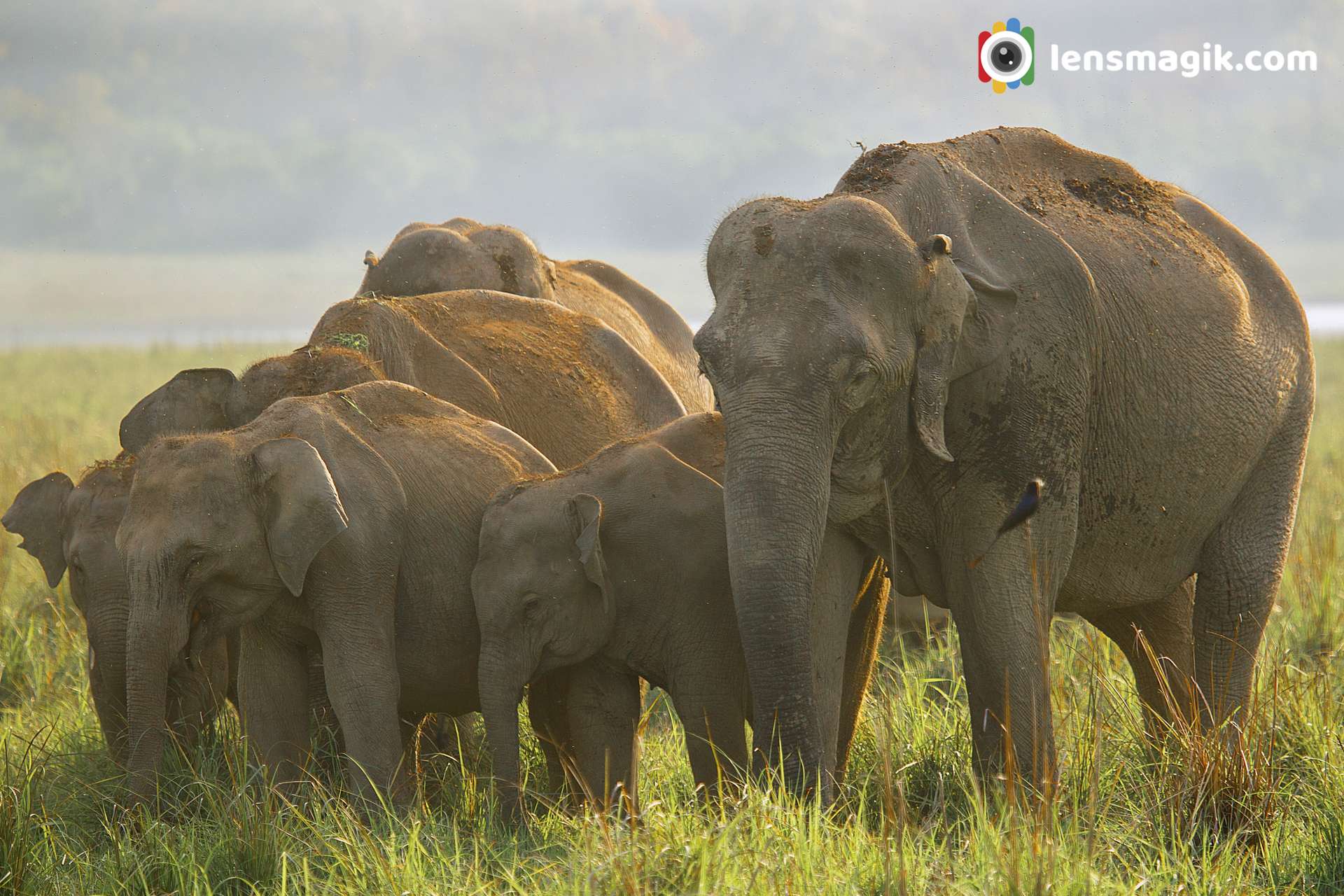
Asian Elephant or Indian Elephant found in Corbett national Park is one of the biggest park among india. Natural habitats of wild life is really amazing here. I visited second time in april 2014. This time i visit Dhikala zone and stay their for one night to catch Asian Elephant movement habitats and also their behavior. The grass land of Dhikala zone is really very good to catch lots of birds and mammals and also a landscape is tremendous. Elephants are largest land mammals living on earth. Asian elephants are in endangered as their population decreasing last 60-80 years.
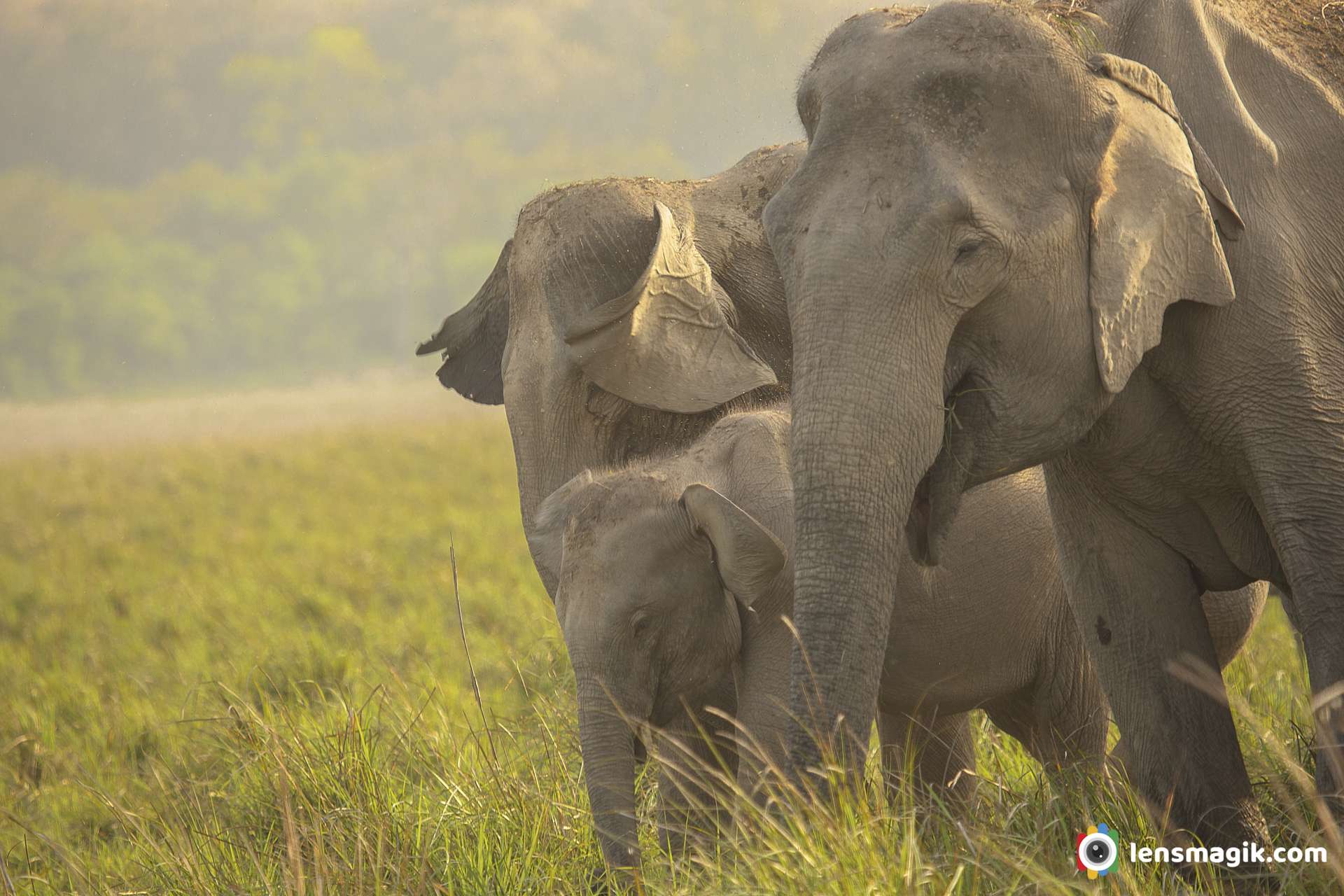
The scientific name for Asian Elephant is Elephas Maximus . They live in grassland and open areas near river. Asian elephant habitat are grassland, forest, savanna and desert .Asian elephant mostly travel in crowd and in family. They have large family so they travel in a group. Only Tusker Asian Elephant found alone sometimes but female Asian Elephant found only in family or Group. The Asian Elephant population in India is around 25000 to 28000 approx. Asian Elephant is endangered in IUCN list.
Asian Elephant Facts / Things to know about Indian Elephant :
- They are largest land mammals living in Asia.
- Total population of Asian Elephant around 50000 individuals.
- Female Asian Elephants can live 60 years approx.
- Asian elephants are smaller than African Elephants
- Also Big differance is their male tusk is smaller than African Bush Elephants.
- Height of Asian Elephant is around 9-10 ft.
- Its weight is around 4000 kgs.
- Total body length with trunk is approx 18-20 ft.
- Asian Elephant trunk contains 60000 muscles.
- They use their trunk for feeding, breathing, washing, watering , defance and offence too.
- Elephant tusk is best weapon for them and they also protect trunk too.
- Skin color of Asian Elephant is mostly grey.
- Elephants can eat approx 120 -140 kg per day
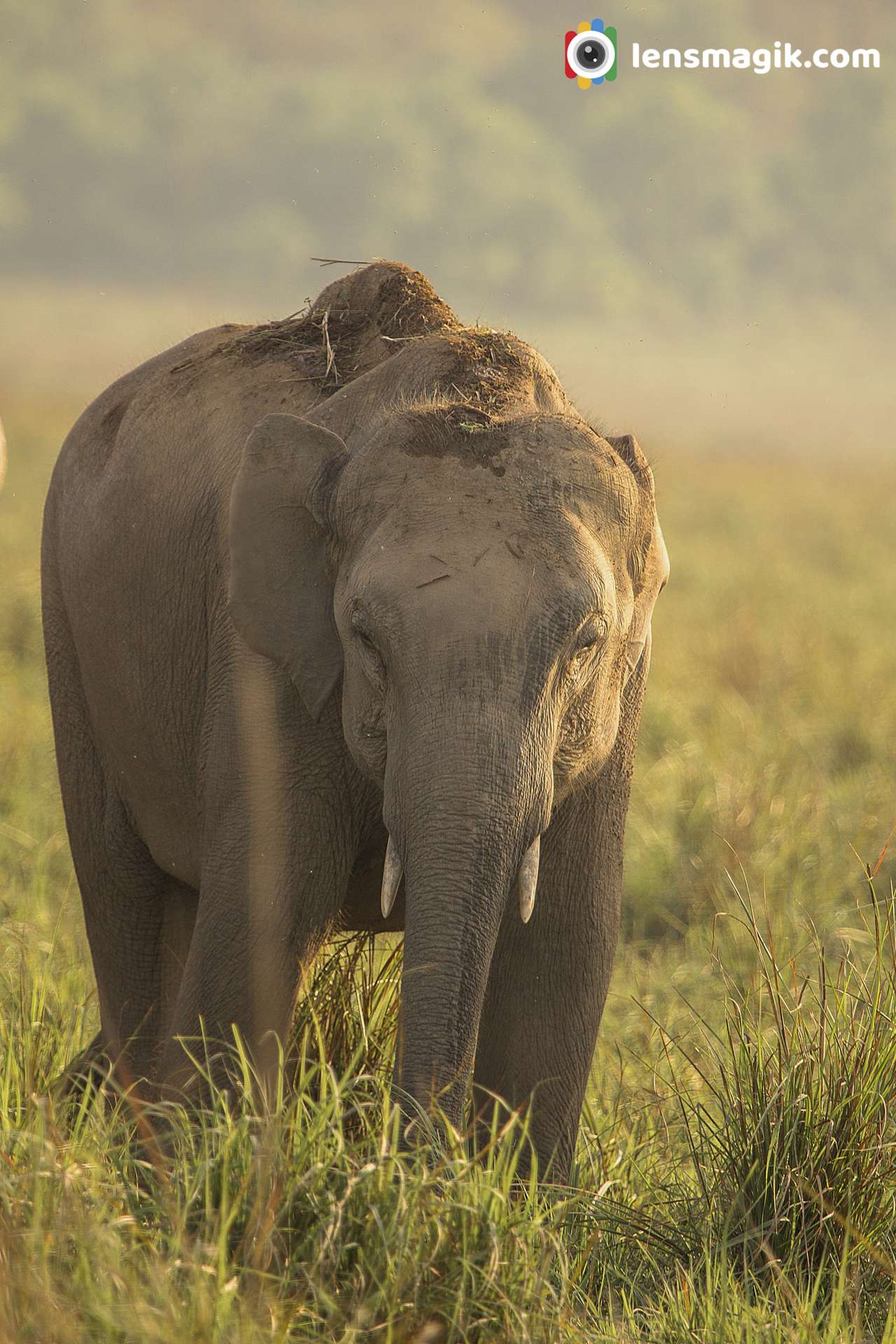
Differance Between Asian elephant / Indian Elephant and African Elephant :
African elephant is larger than Asian elephant. Large in size and also ears are larger than asian elephant. While African elephant weight around 4000-7000 kgs and Asian elephant weight around 3000-6000 kgs. Also skin differance between them too as Asian elephant skin is smoother and African elephant skin is more wrinkled than asian elephants. African Savanna Elephant is the biggest elephants among all spices of elephants.
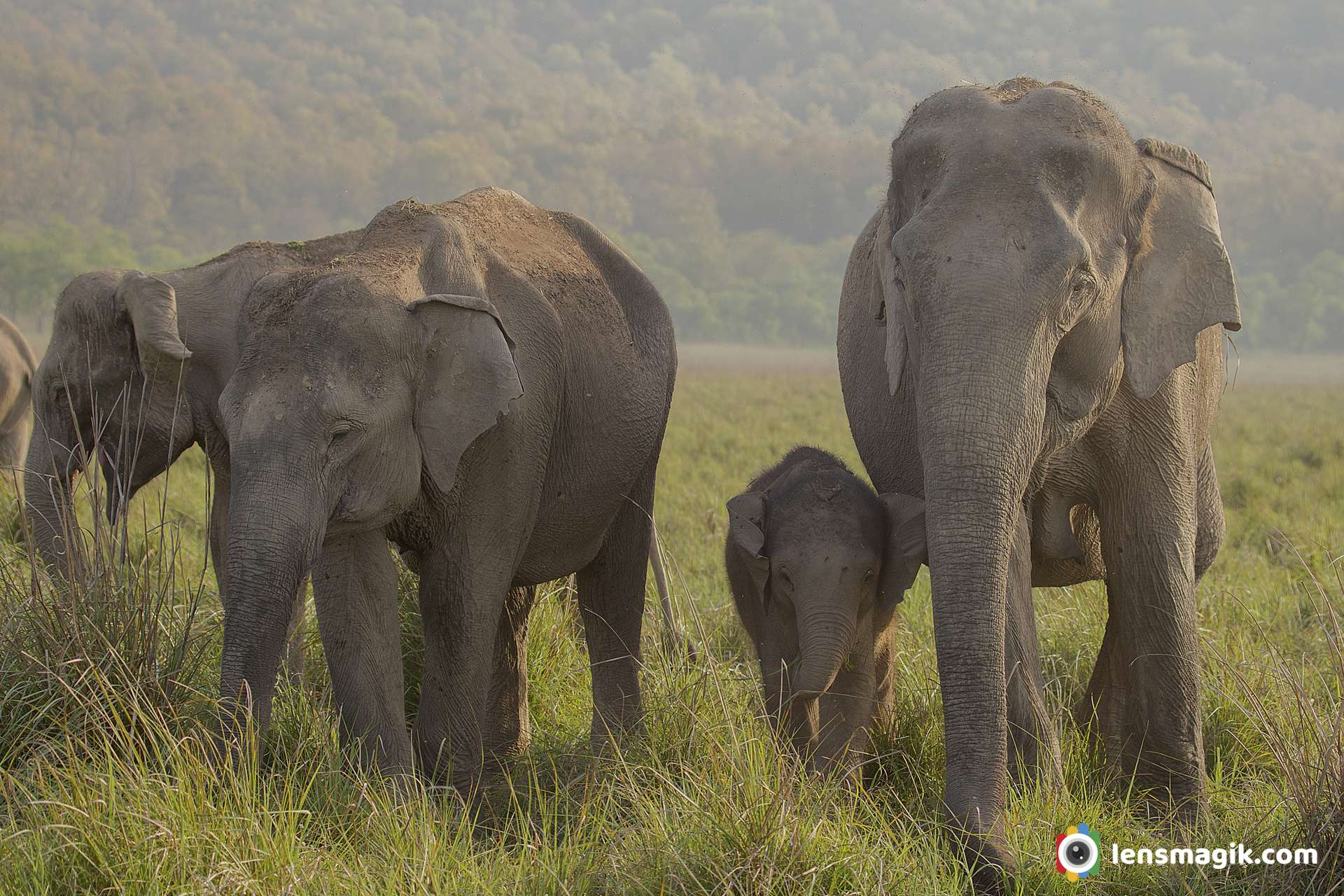
Asian Elephant cubs are really beautiful to see and they are very cute. Generally cubs are found with females and also in a group. If you are very near to cubs or elephant then they give you warning sign so beware don't go near further. Elephants are more dangerous if you go closer to them. In other way elephants are killed widely for its Ivory means their Tusks. There are lots of incidents of killing elephants by humans but very less incidents of killing humans by elephants. Elephants population is decreasing because of natural habitas , Fragmentation and poaching. Elephants generally found in groups and with family. You can get good photos of elephant family or elephant cubs and elephant mother and cubs.
Asian elephants lives in grasslands and in forests. In India they found in East of Himalayas. In Asia they generally found in China , India, Bangladesh, Shrilanka etc. Elephants found in India called Indian Elephants. Asian elephant has subspices like Indian Elephant, Shri Lankan Elephant and Sumatran Elephant. Elephant eat 112 different spices of plant.
Dhikala Zone at Corbett National Park :
Corbett National Park in Uttarakhand is famous for Bengal Tigers but lots of mammals found here. Dhikala zone is inside of Corbett national Park and there is night stay facility at Dhikala which you can book online from forest department. Here near dhikala rest house a river passed so you can get beautiful landscapes of corbett national park at morning sunrise and evening sunset. In the evening Asian Elephant activities are high at Dhikala zone near the river. So you have to be prepare for Asian Elephant Family shot near the river by 4pm. You can get beaufitul Asian elephant family with cubs in a group. Amazing wildscapes you can take with Asian elephants and sunset at Dhikala.
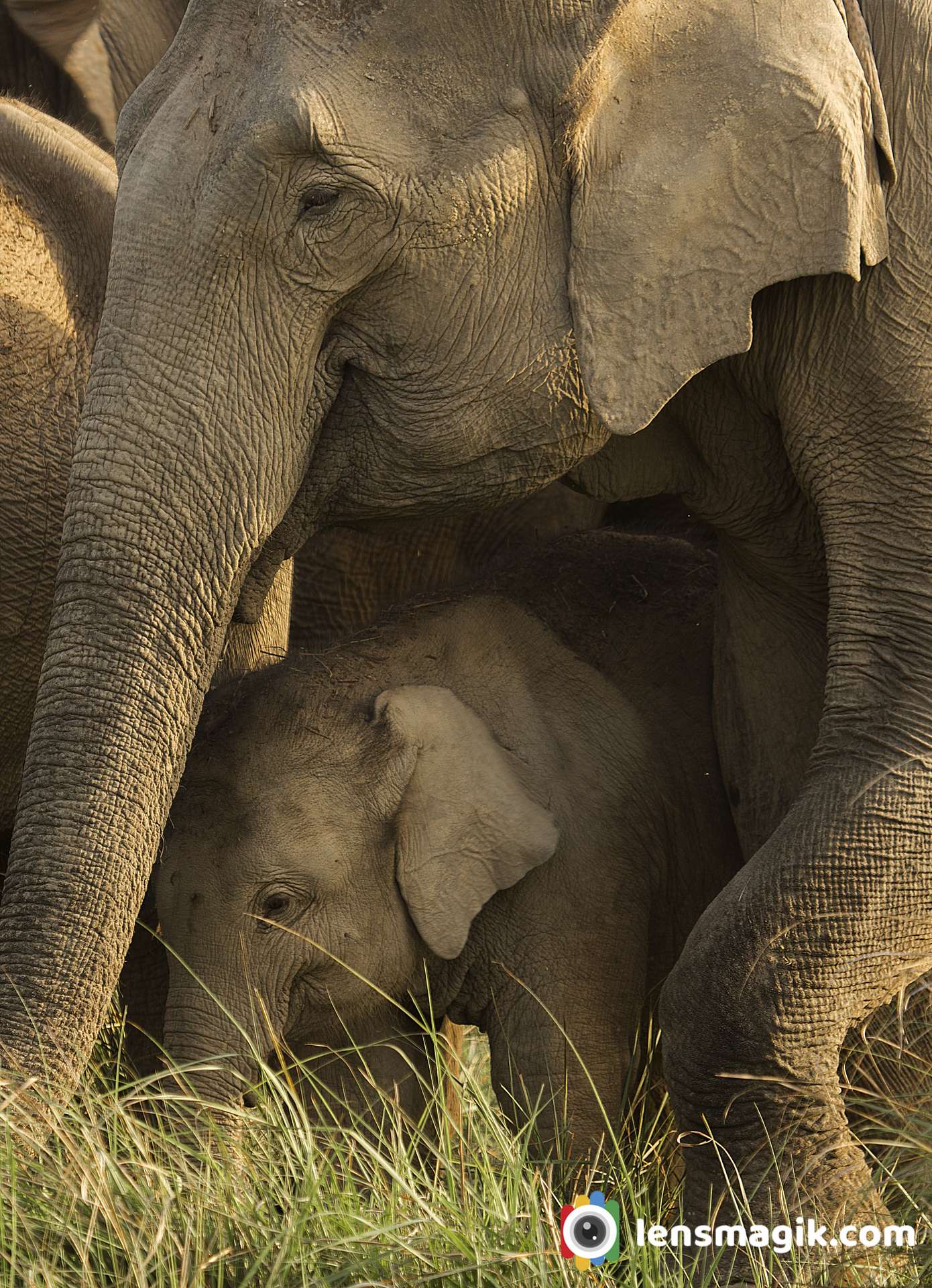
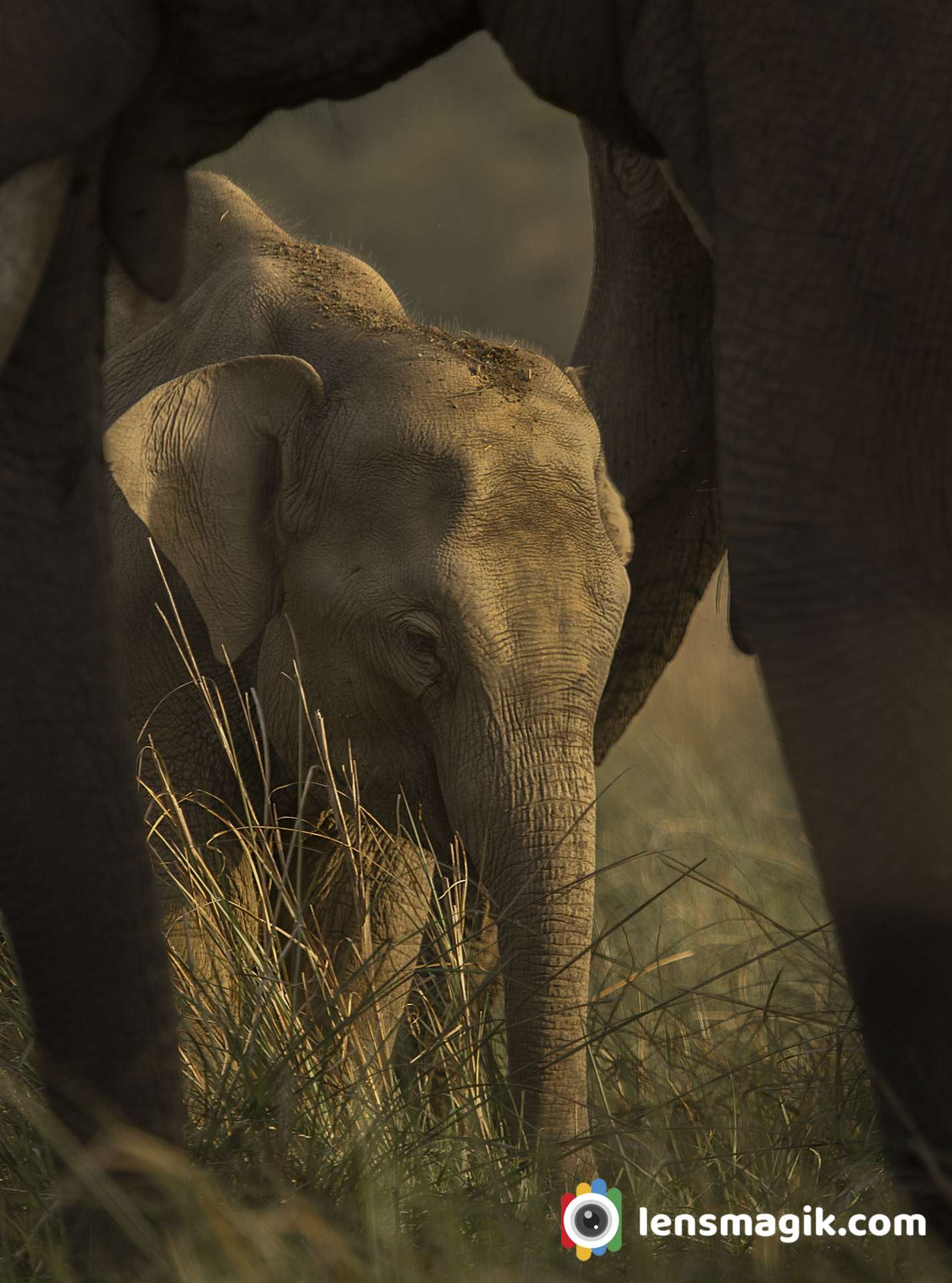
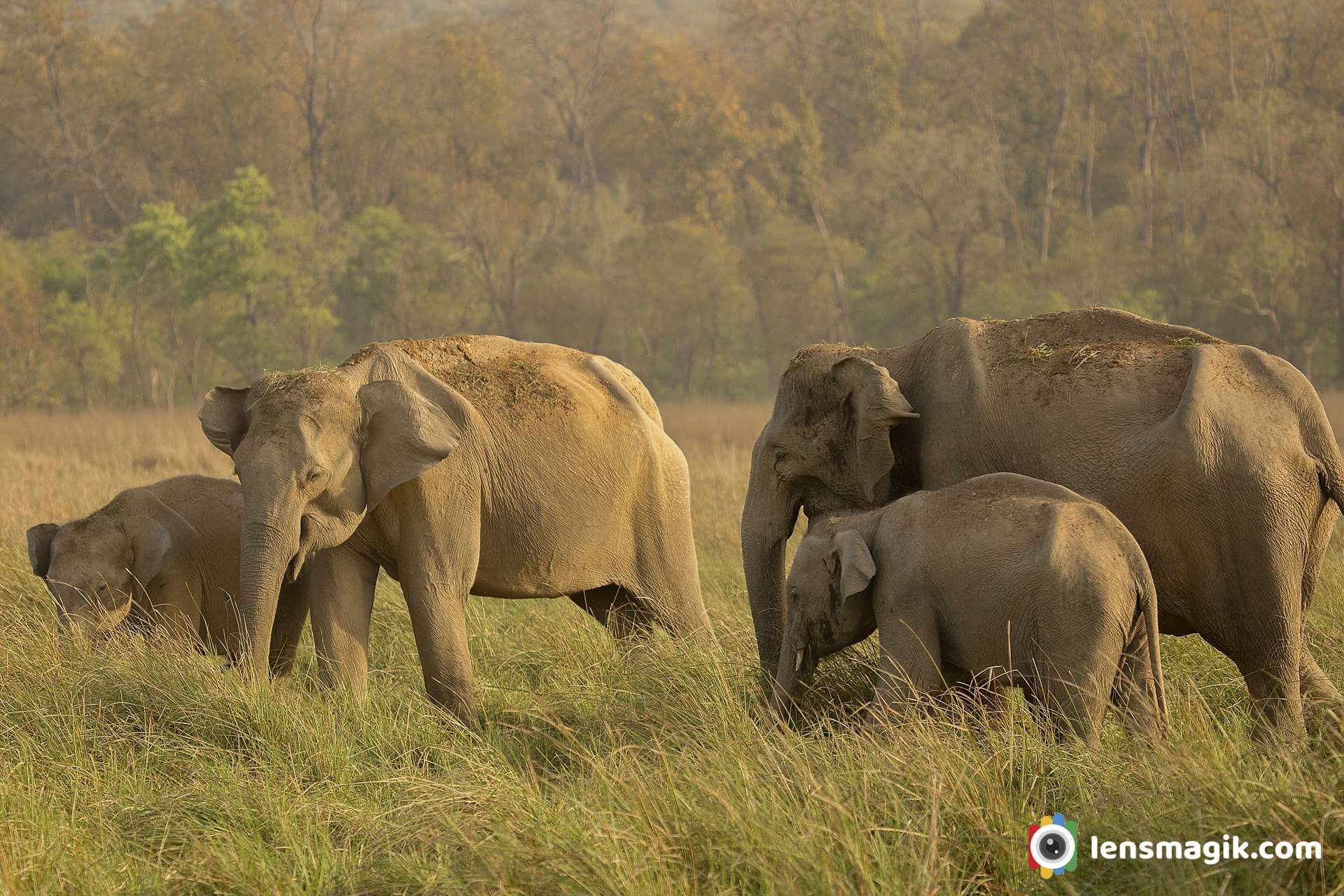
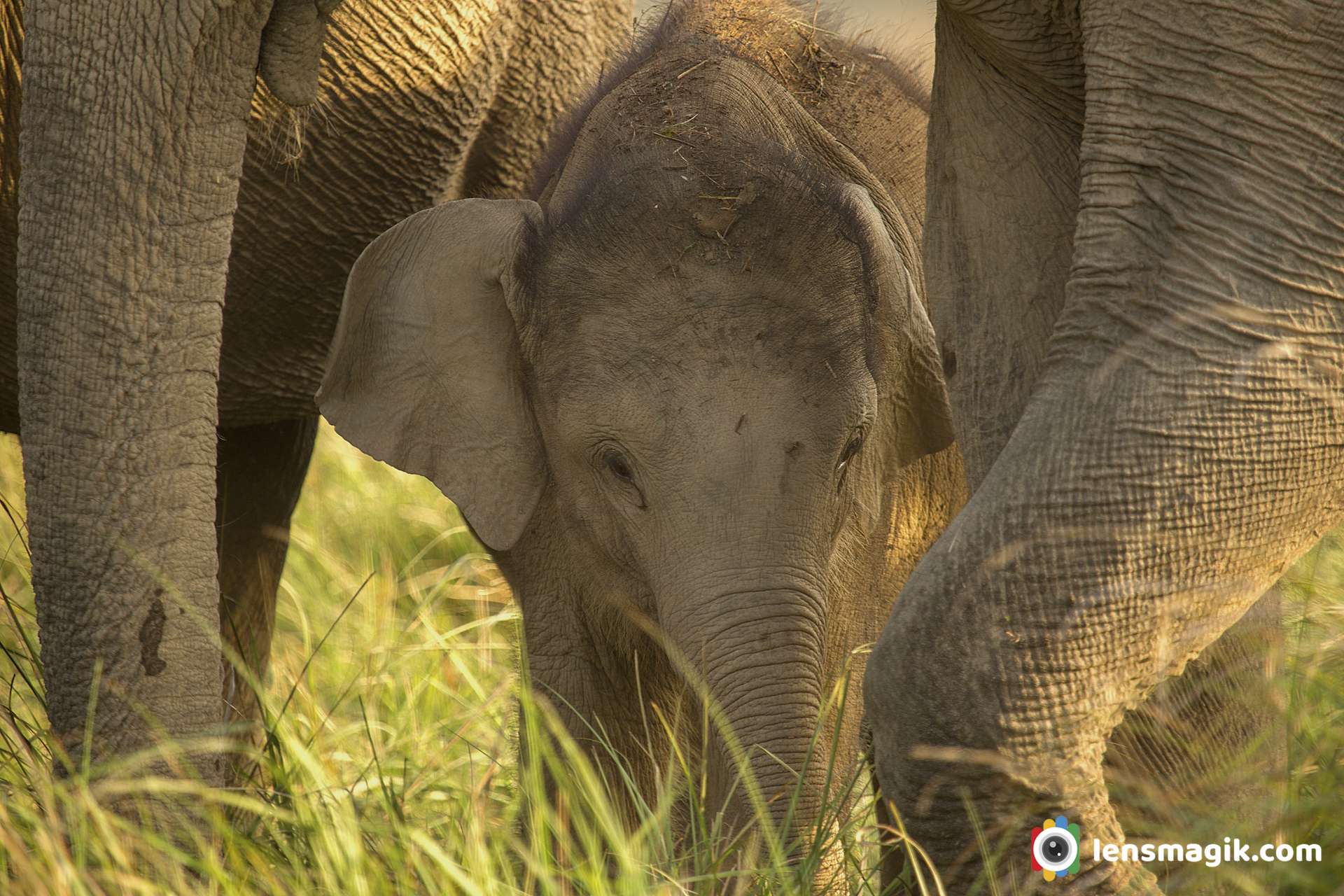
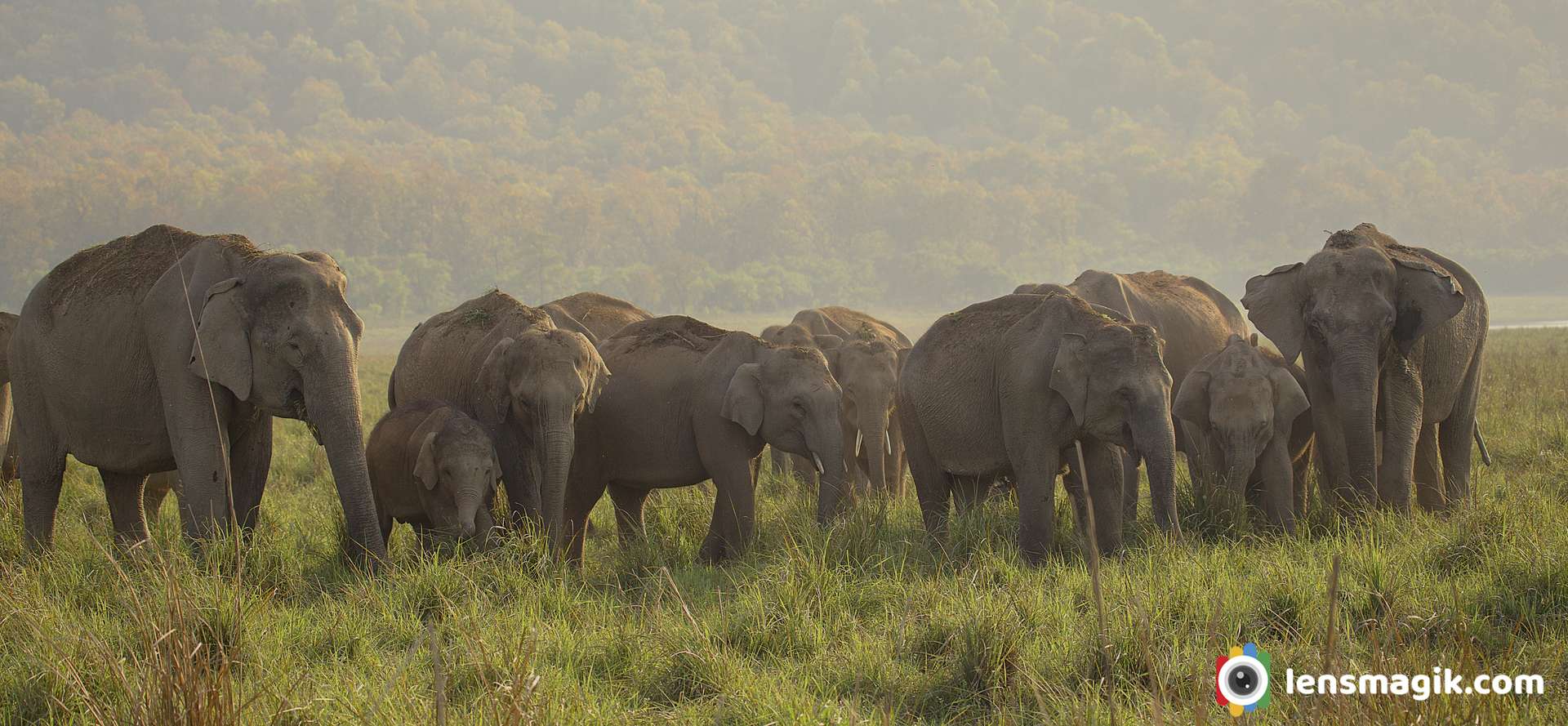
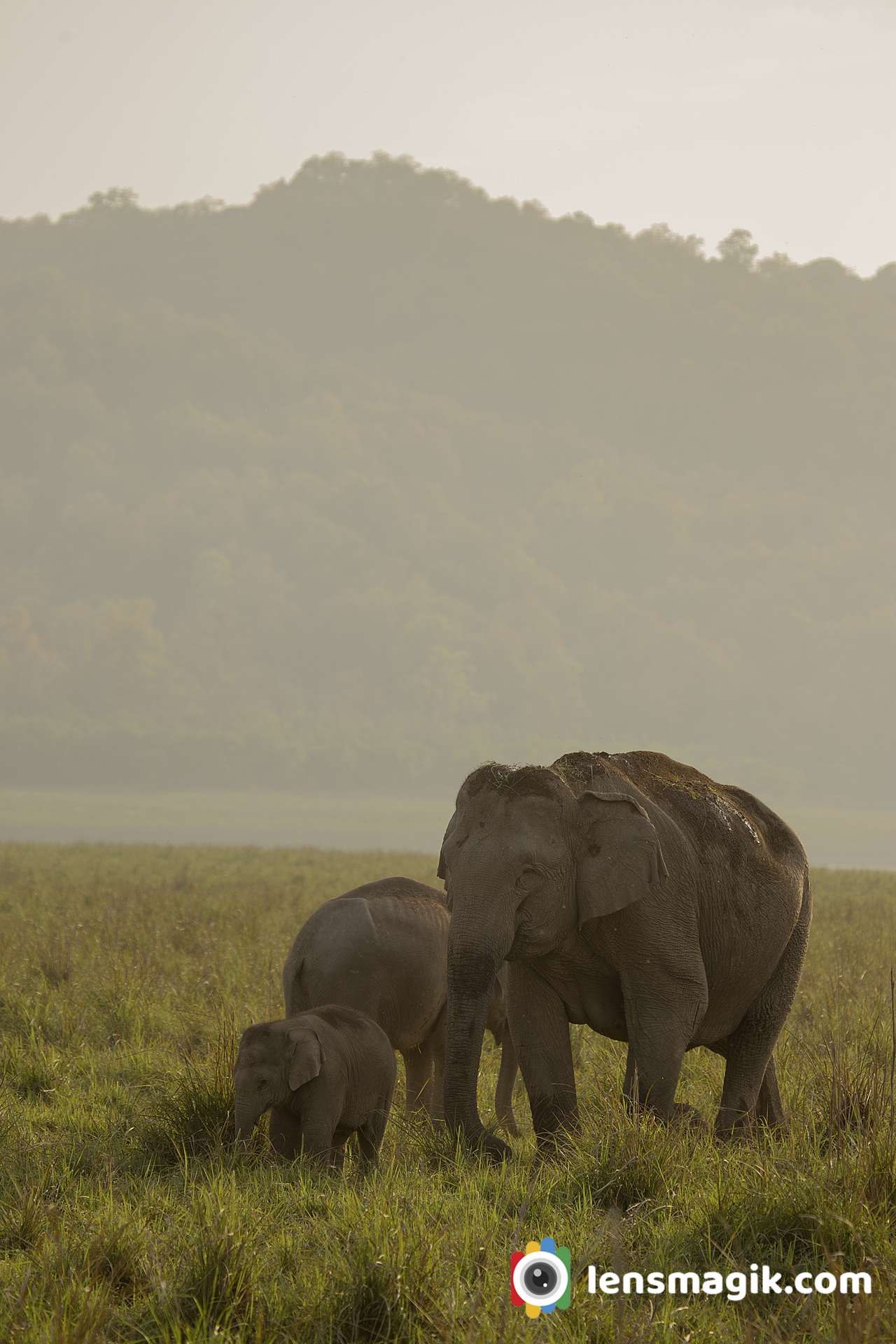
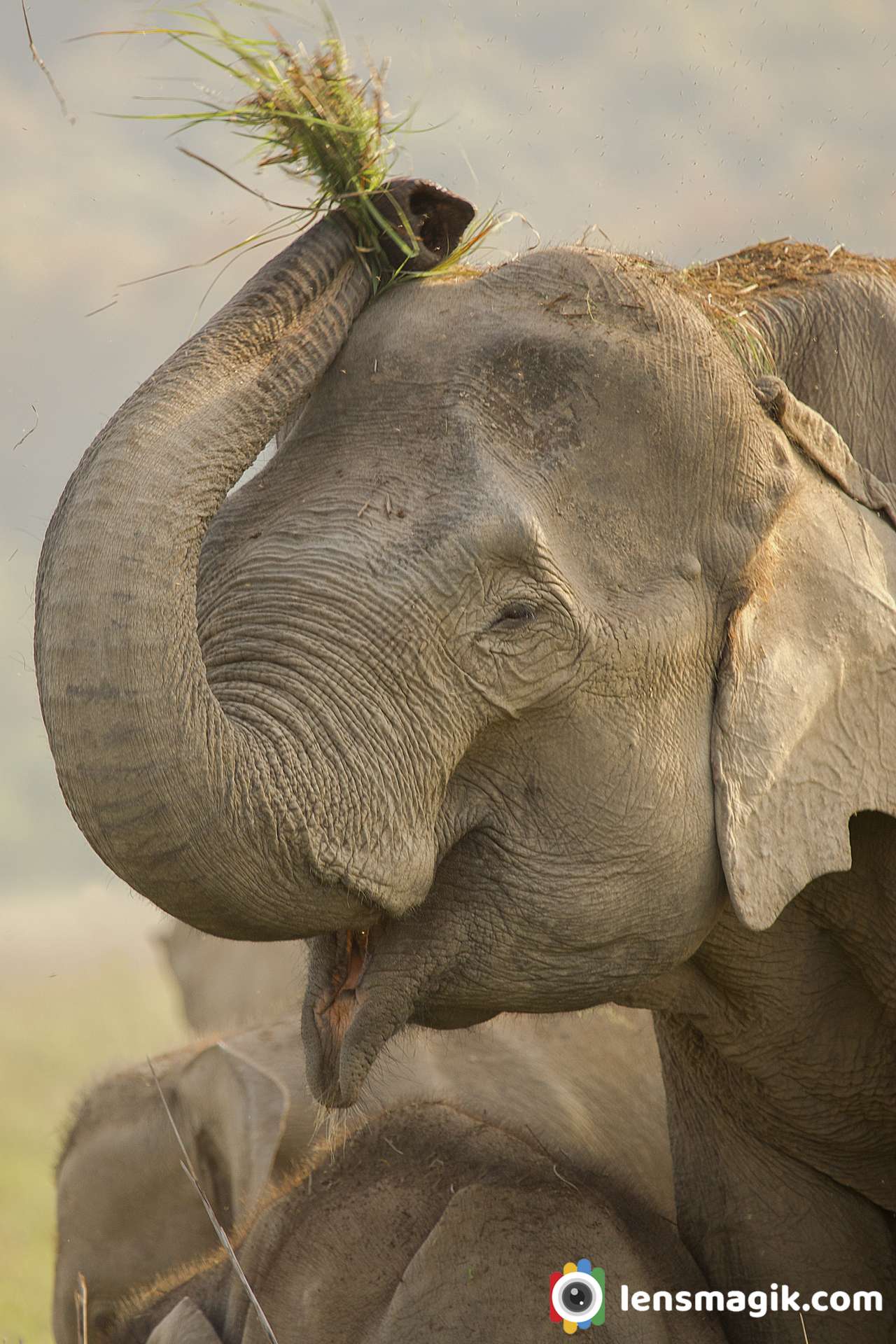
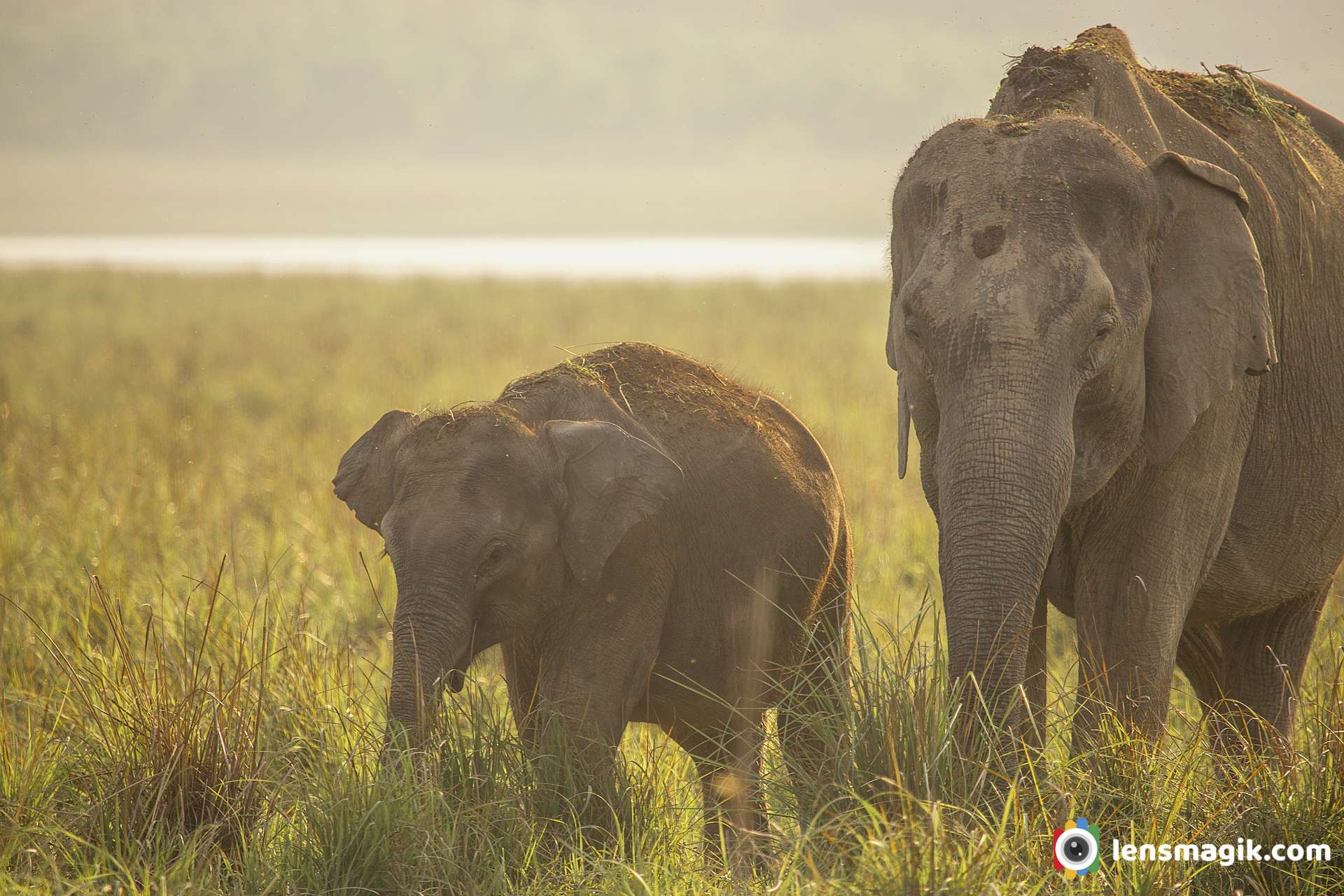
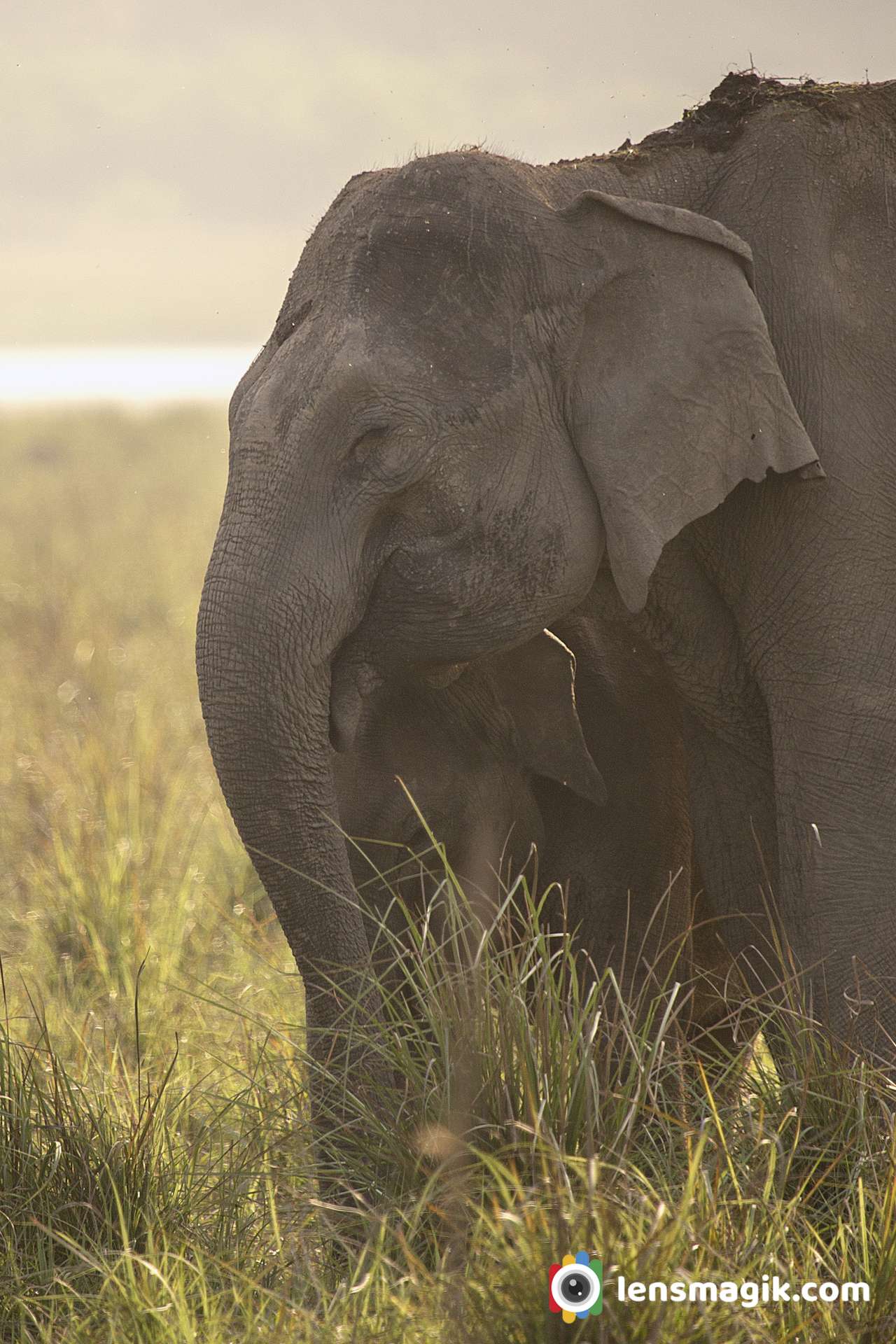
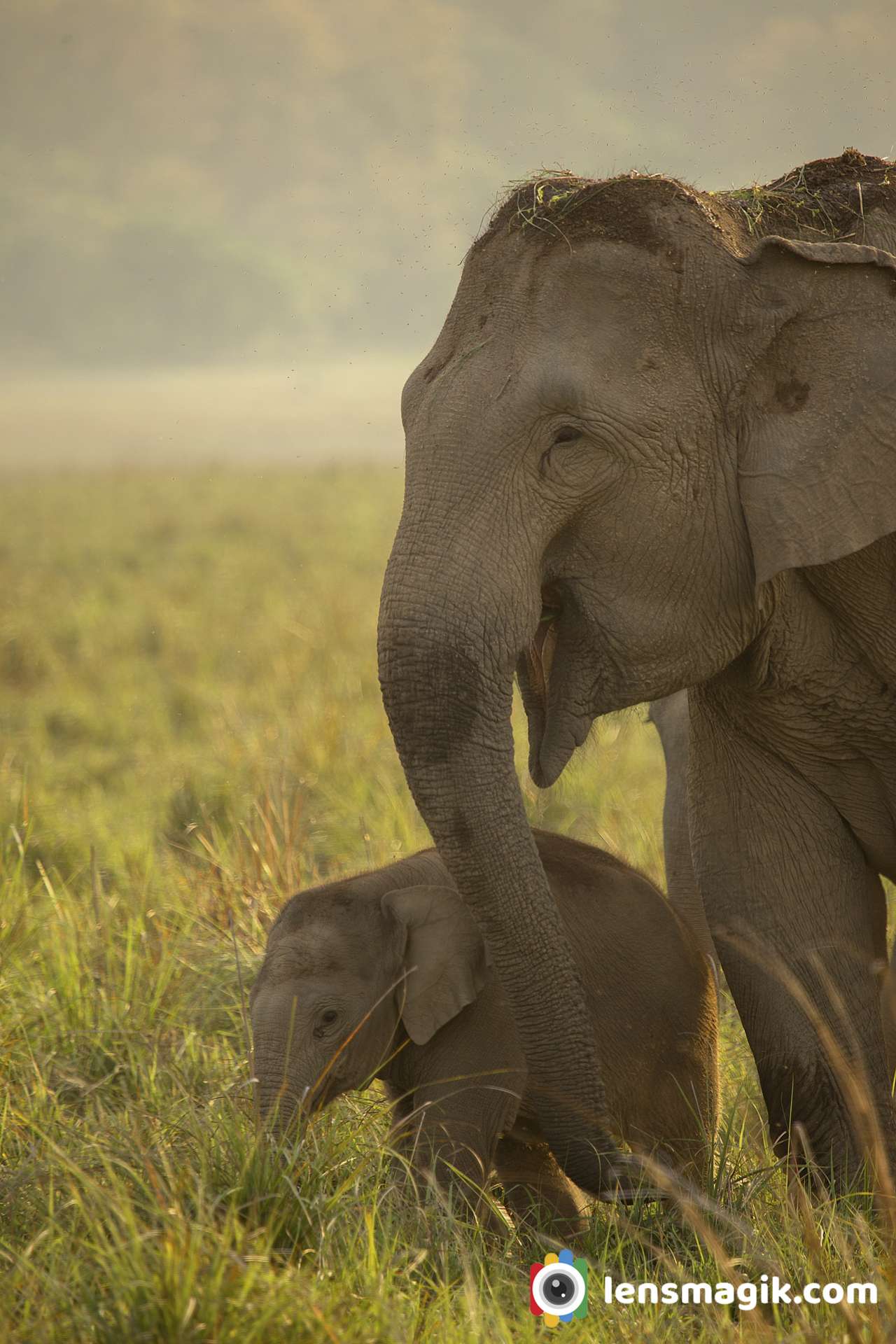
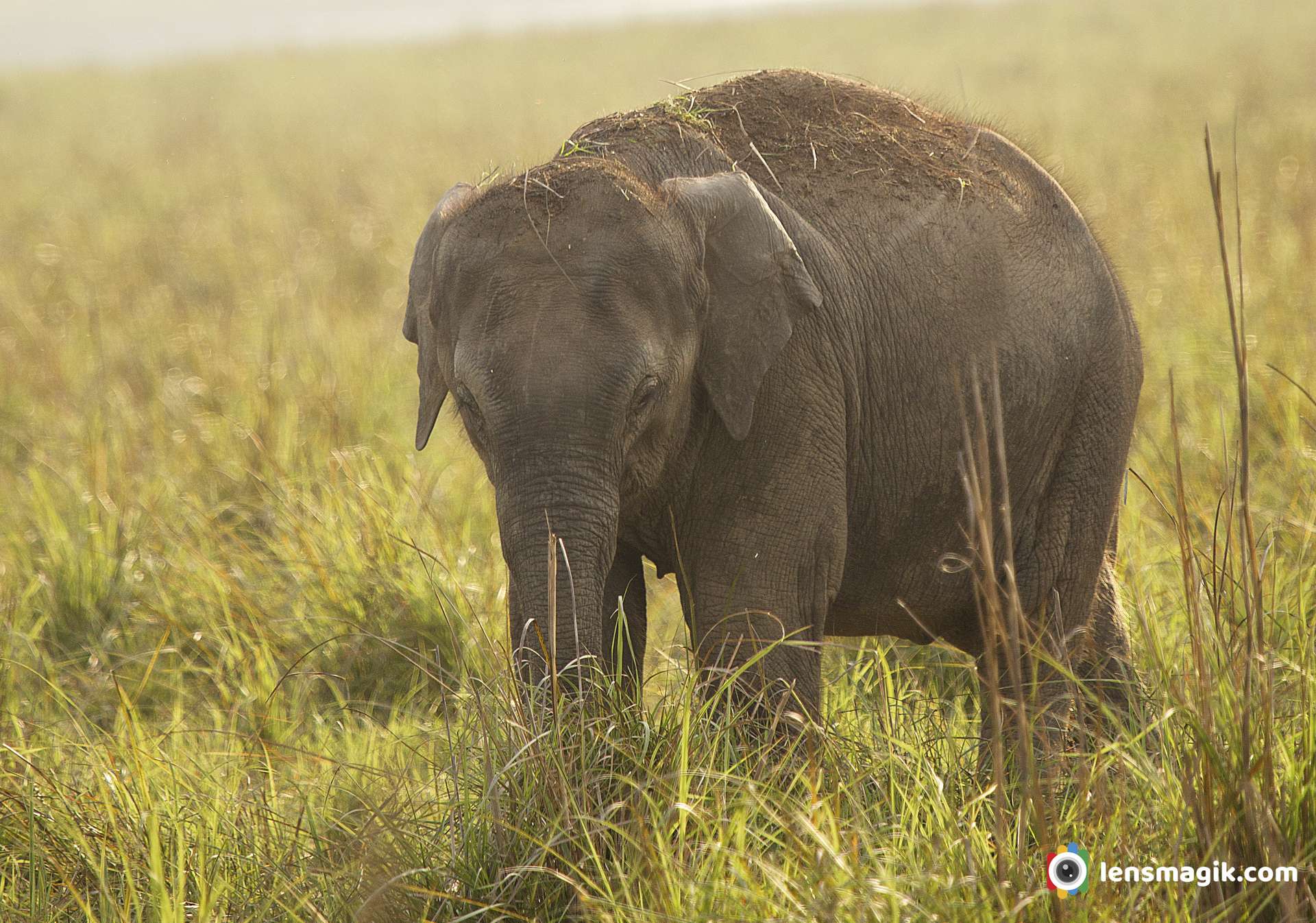
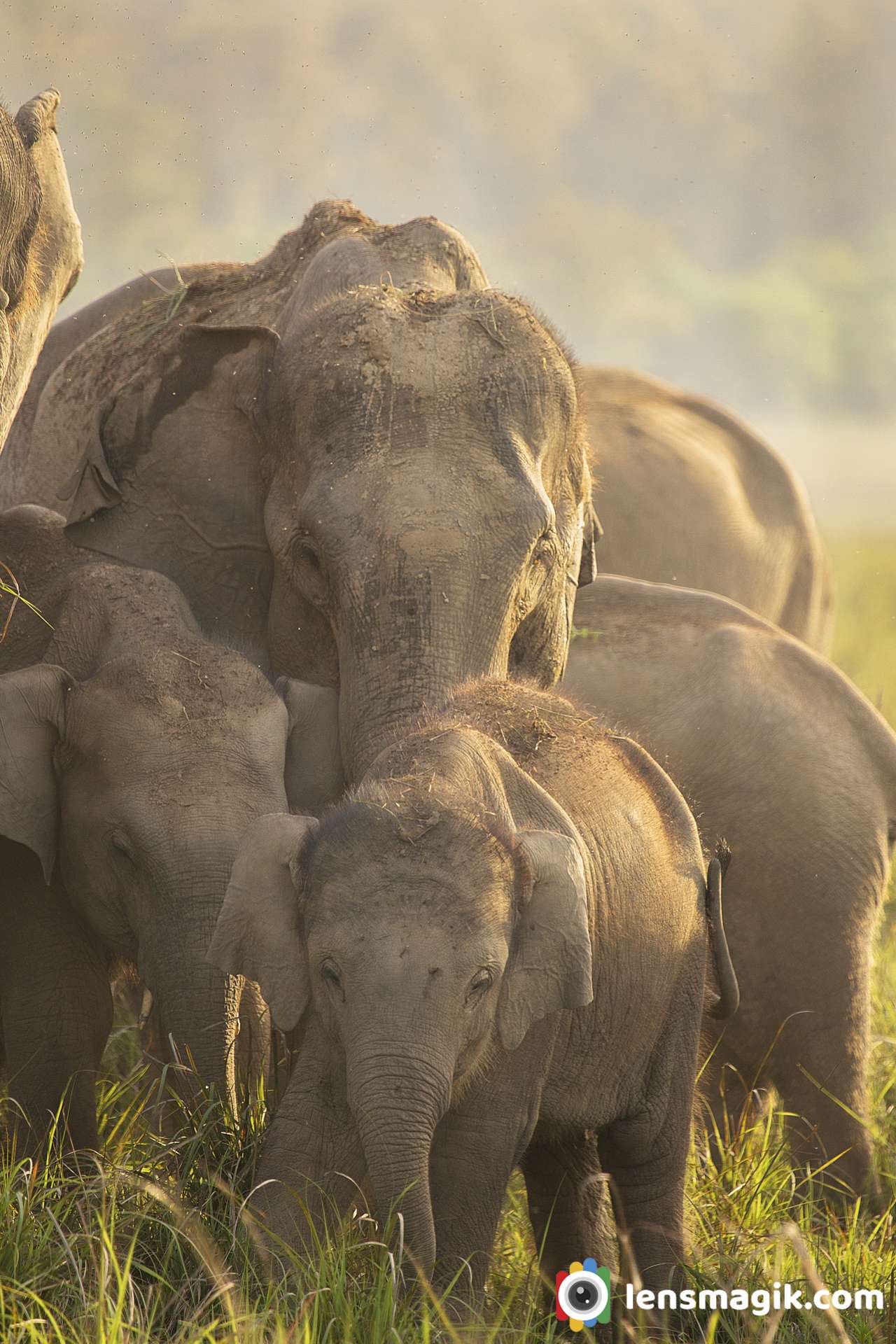
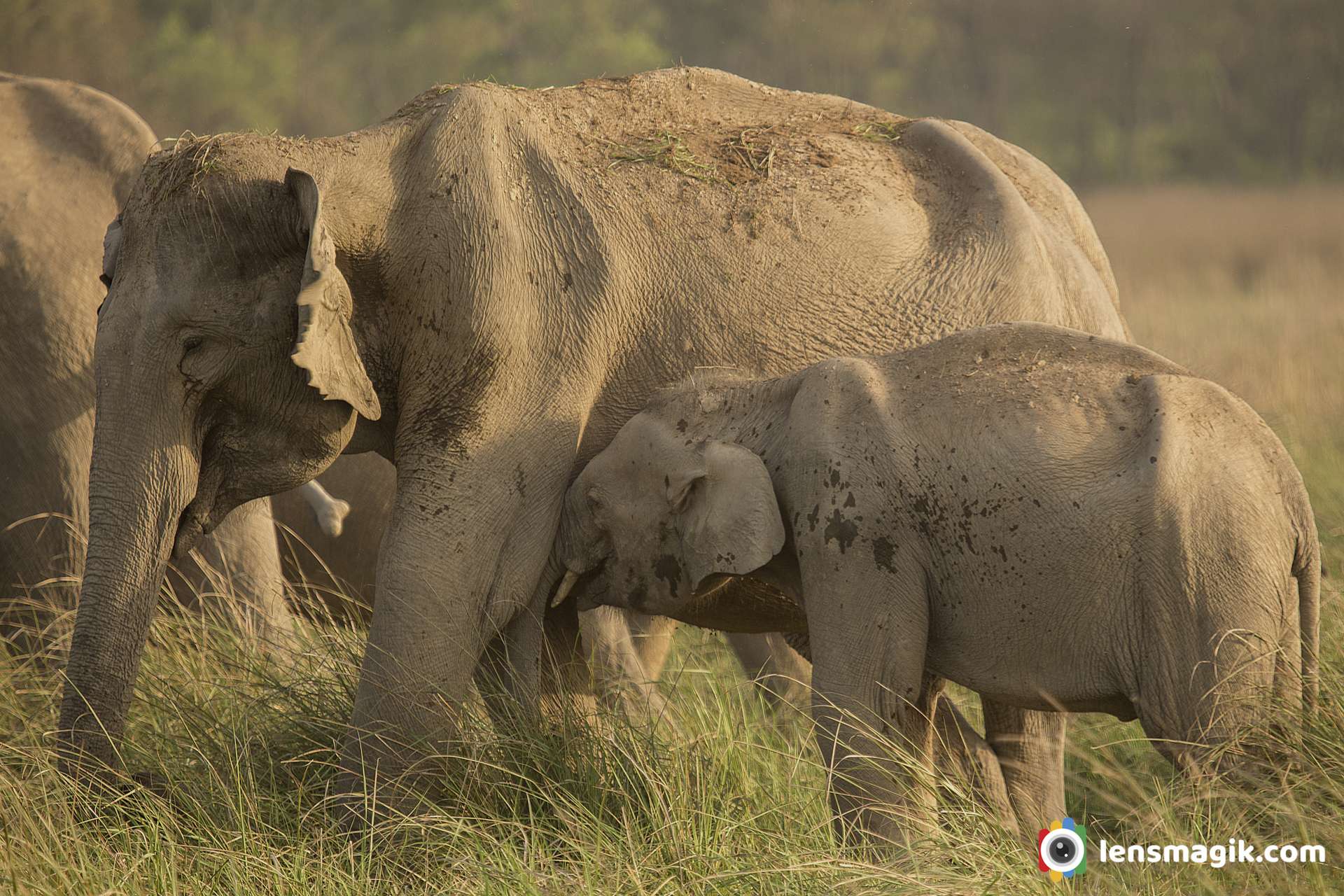
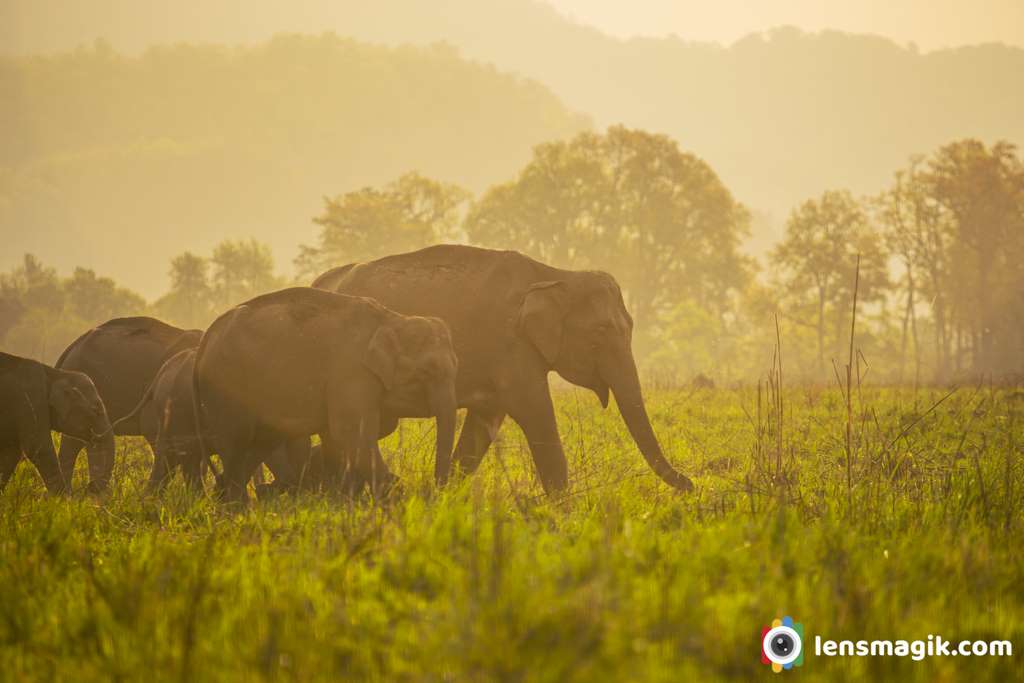
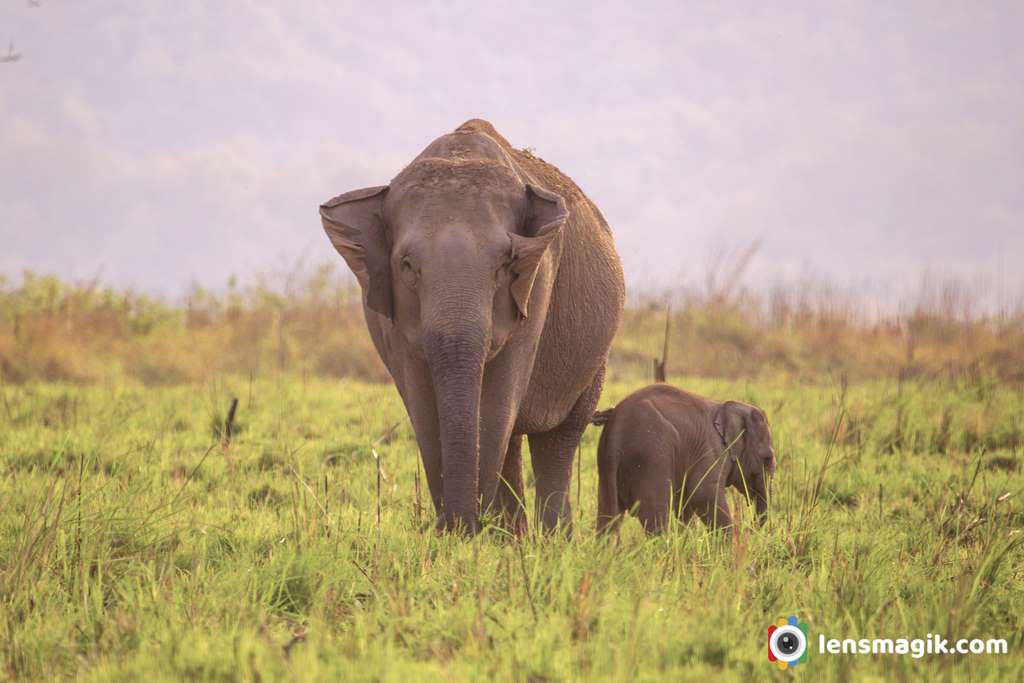
Photos taken at Dhikala zone on safari during evening with Canon 6D and canon 100-400 mm lens.
Read more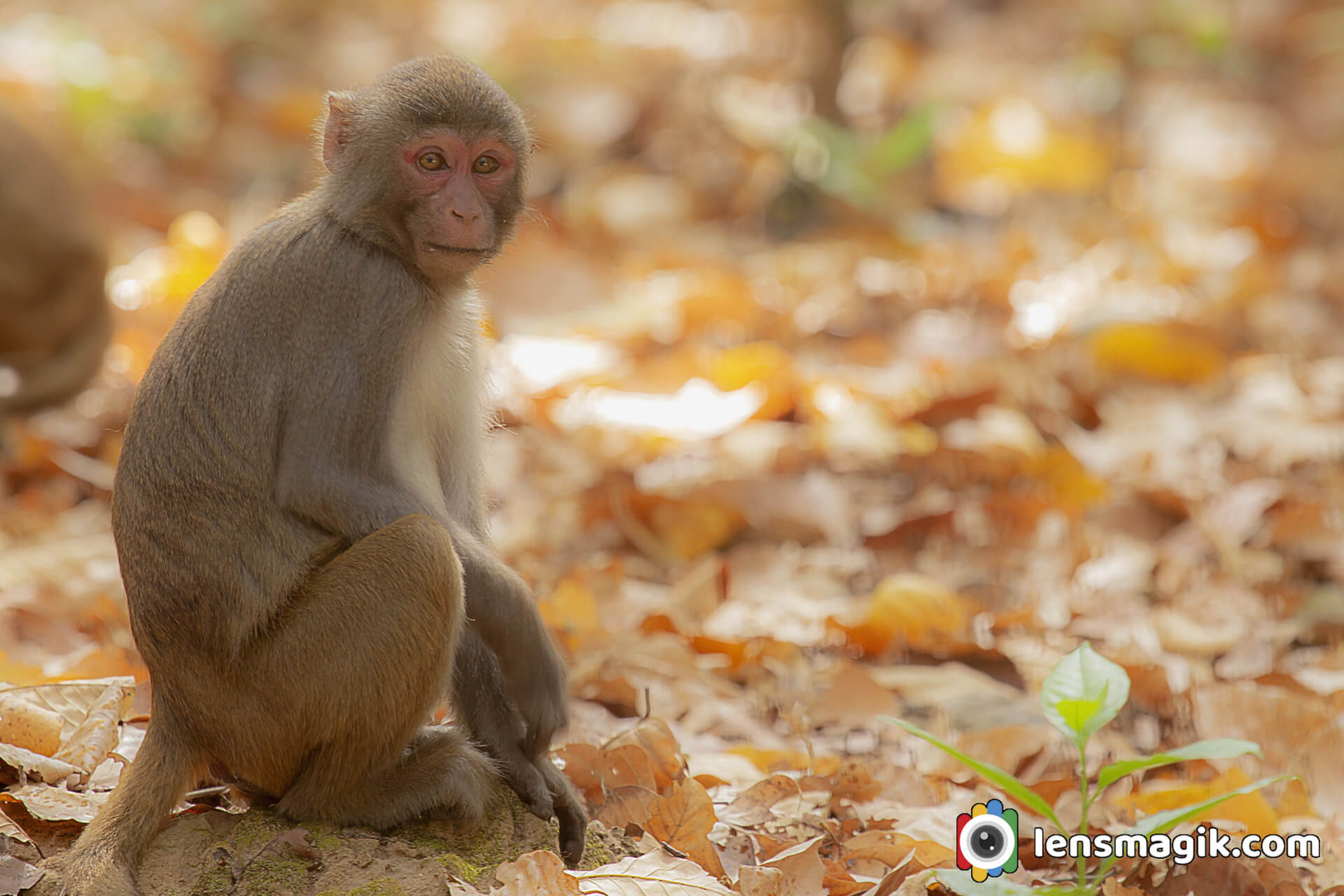
Rhesus macaque monkey is one of the intelligent monkey in all spices. It is one of the old monkey spices. Its color is brown grey and it has pink color face. They generally found in India, china, Pakistan, Bangladesh, Nepal etc. Monkey called Rhesus on the name of King Rhesus of Thrace. The females are smaller than the male. The Rhesus monkey is in a group of 20-200 monkey which includes males and females. Rhesus monkey using a various facial expression and vocalization to communicate. Rhesus monkey is very important for scientific experiments. As humans are made from monkey their genomes and anatomy are similar to humans. Also they are easily available due to their population. So Monkeys are been widely used in medical and biological research on human and animal health related topics.
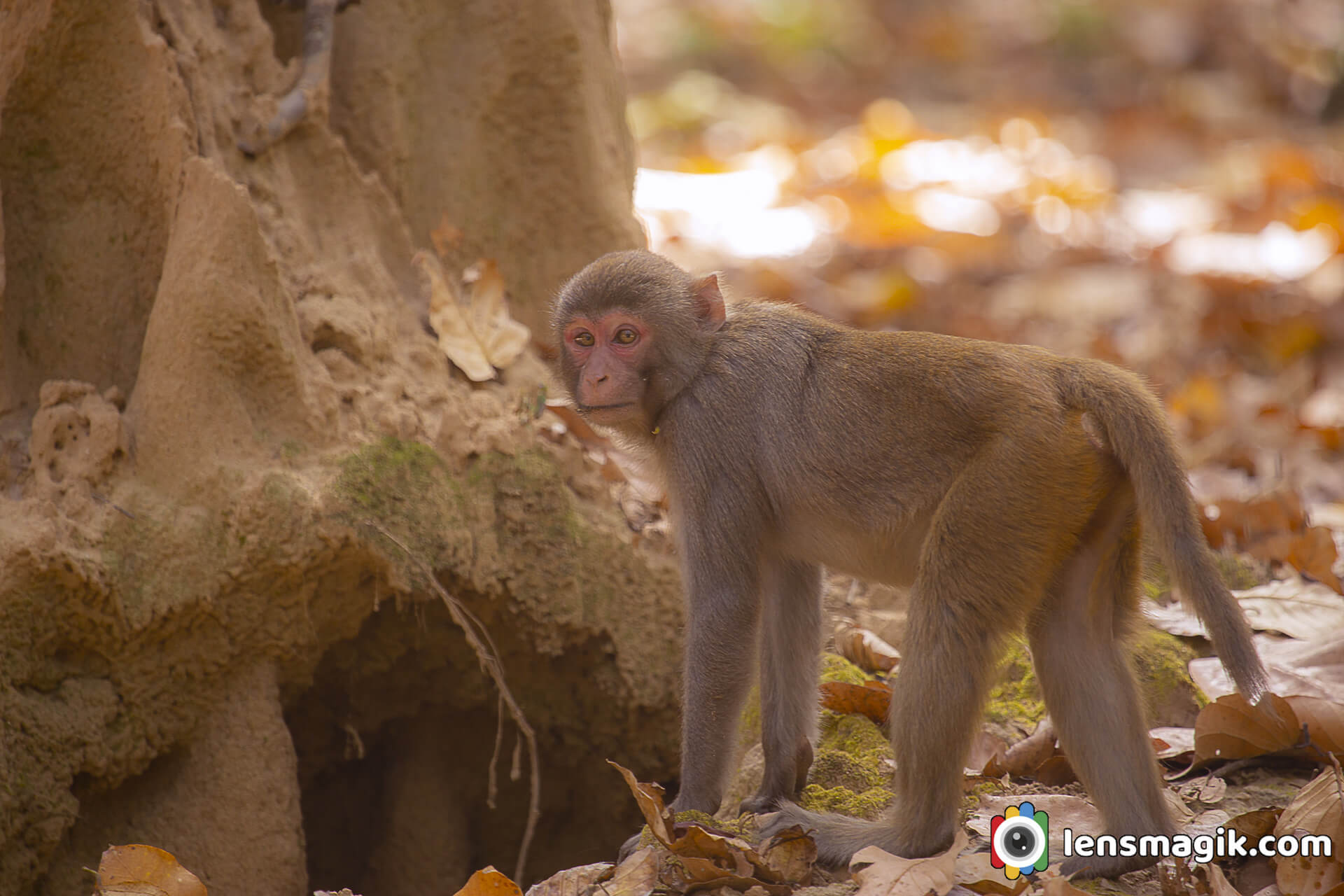
Some Interesting Things to know About Monkey :
- Rhesus monkey is similar to humans as their DNA similar to humans.
- The Rhesus monkey is very intelligent.
- The genomes of Humans and Chimpanzee are 95 % similar as research by scientists.
- Some monkeys are highly intelligent and some are stupid too.
- Orang-Utans monkey is highly intelligent among all monkeys and also most intelligent in animals. In Bangkok safari world there is a Orang-Utan show where two of these monkey have boxing fight and it was so funny show that kids and adults like it most.
- In opposite Lemur is the stupidest monkey among all spices of monkey. Lemur is so stupid that it cant recognize its own reflection. The weakness of monkeys are mischievous and unreliable.
- The Rhesus monkey factor is not limited to humans. Although the Great Apps have same blood group types like humans.
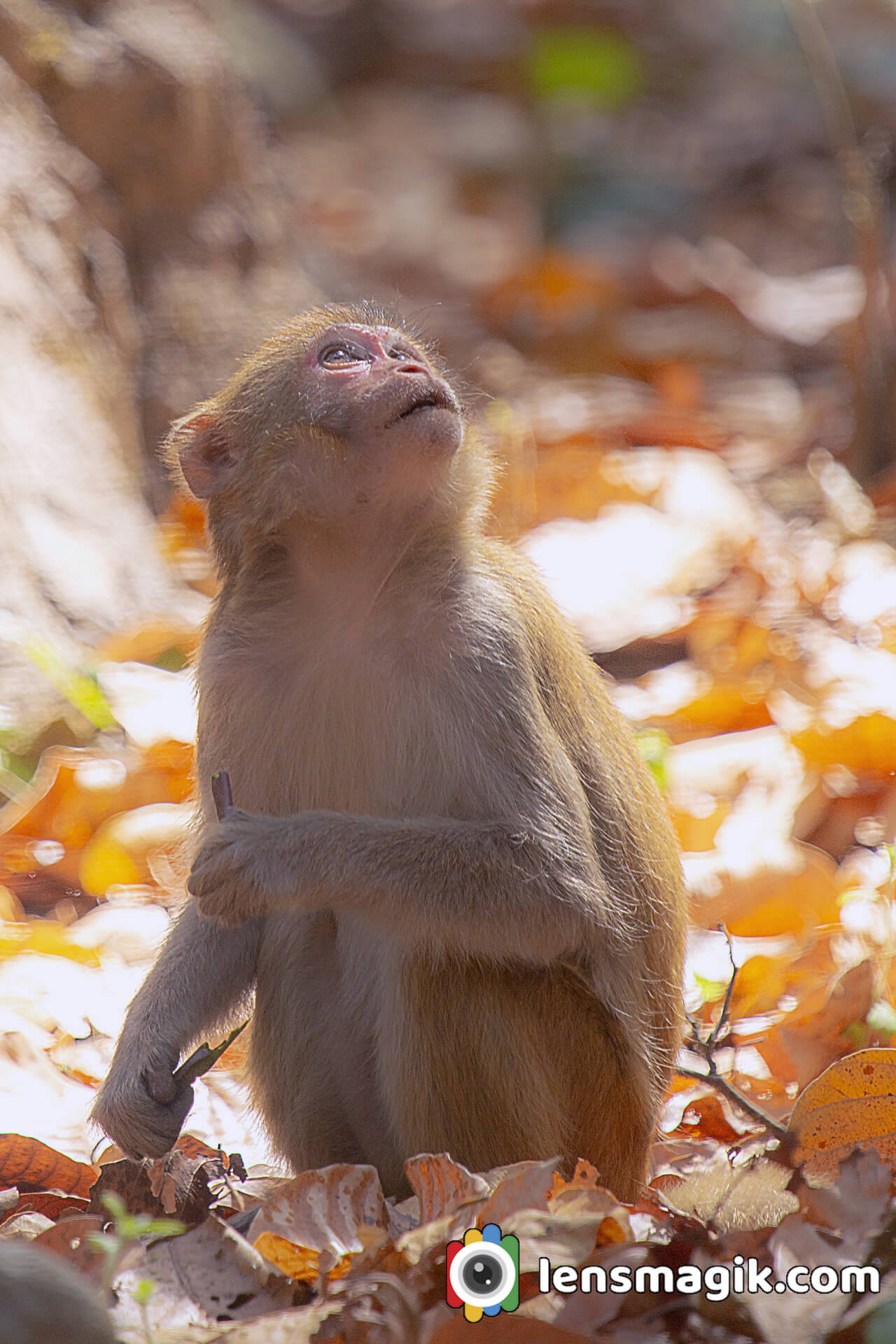
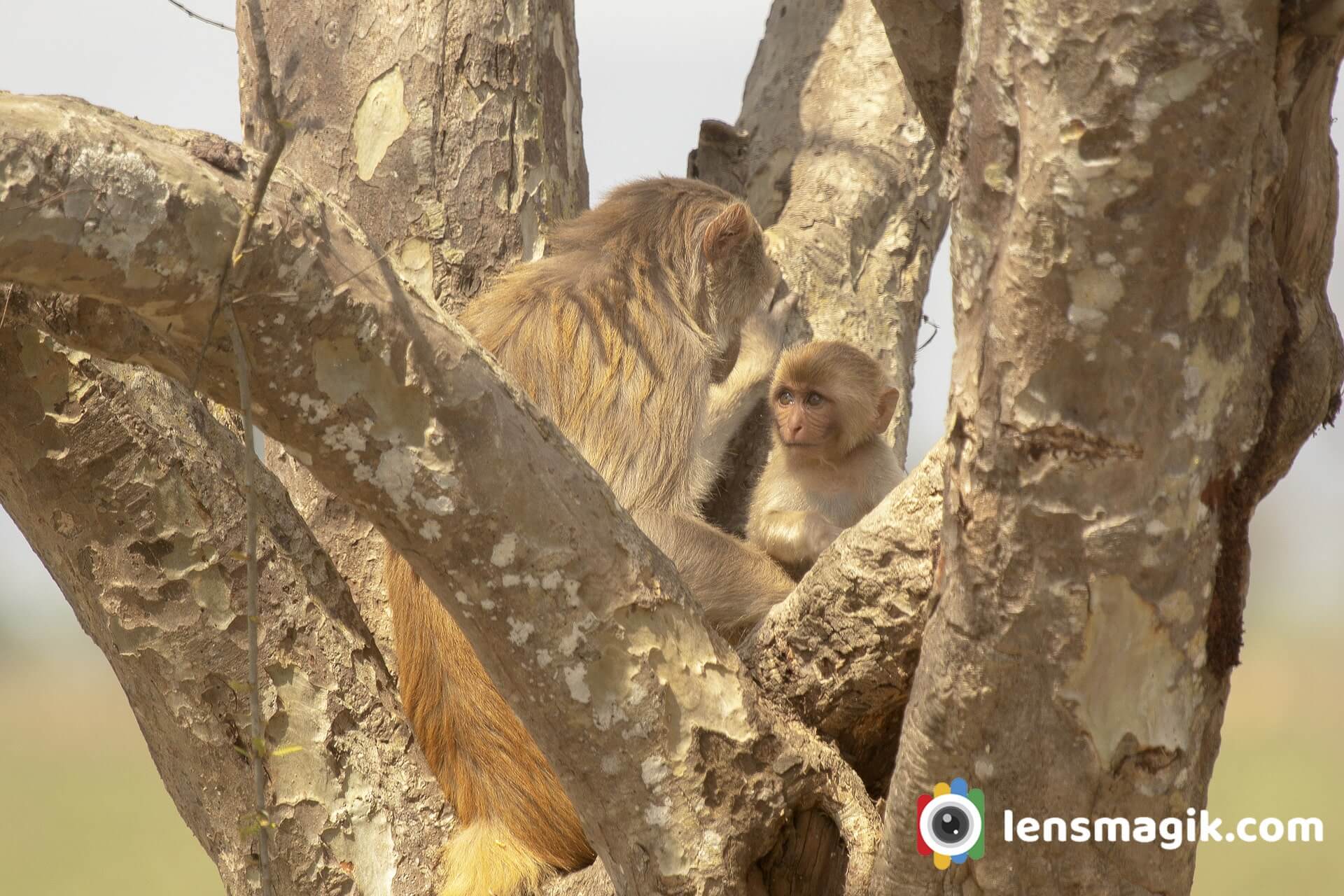
Monkey Bite :
- It is proven that monkey bite is deadly.
- It cause anaphylactic shock in humans and it can kill humans.
- As discovered by scientist a monkey which come out at night is more dangerous and its bite can kill humans.
- Monkeys sleep sitting on trees.
- Bonobo monkey is closest relative to humans according to research by scientists by matching DNA and genomes of humans and Bonobo monkey.
- The difference between Humans and Monkeys is Hands.
- Humans are not the only animals to possess opposable Thumbs.
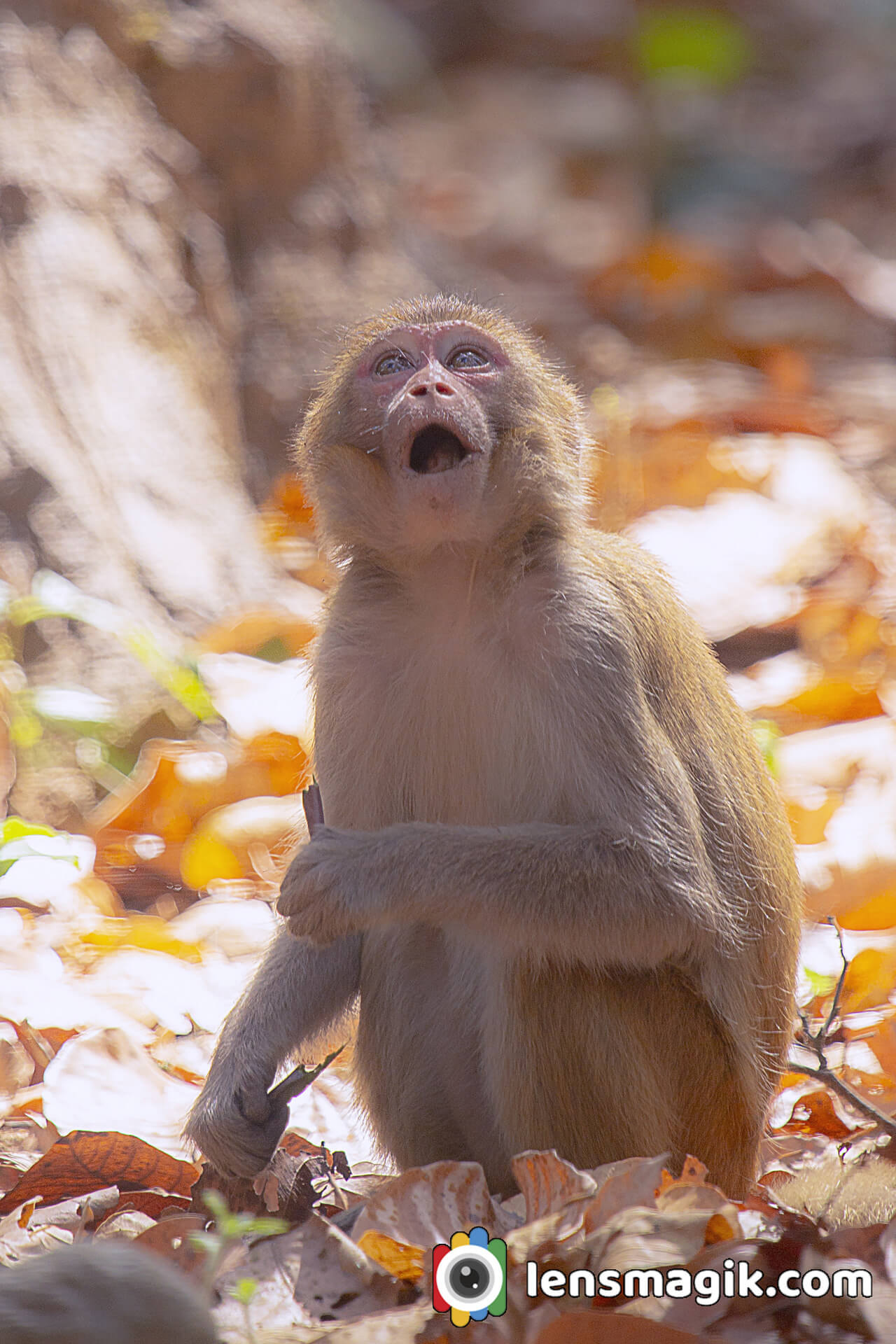
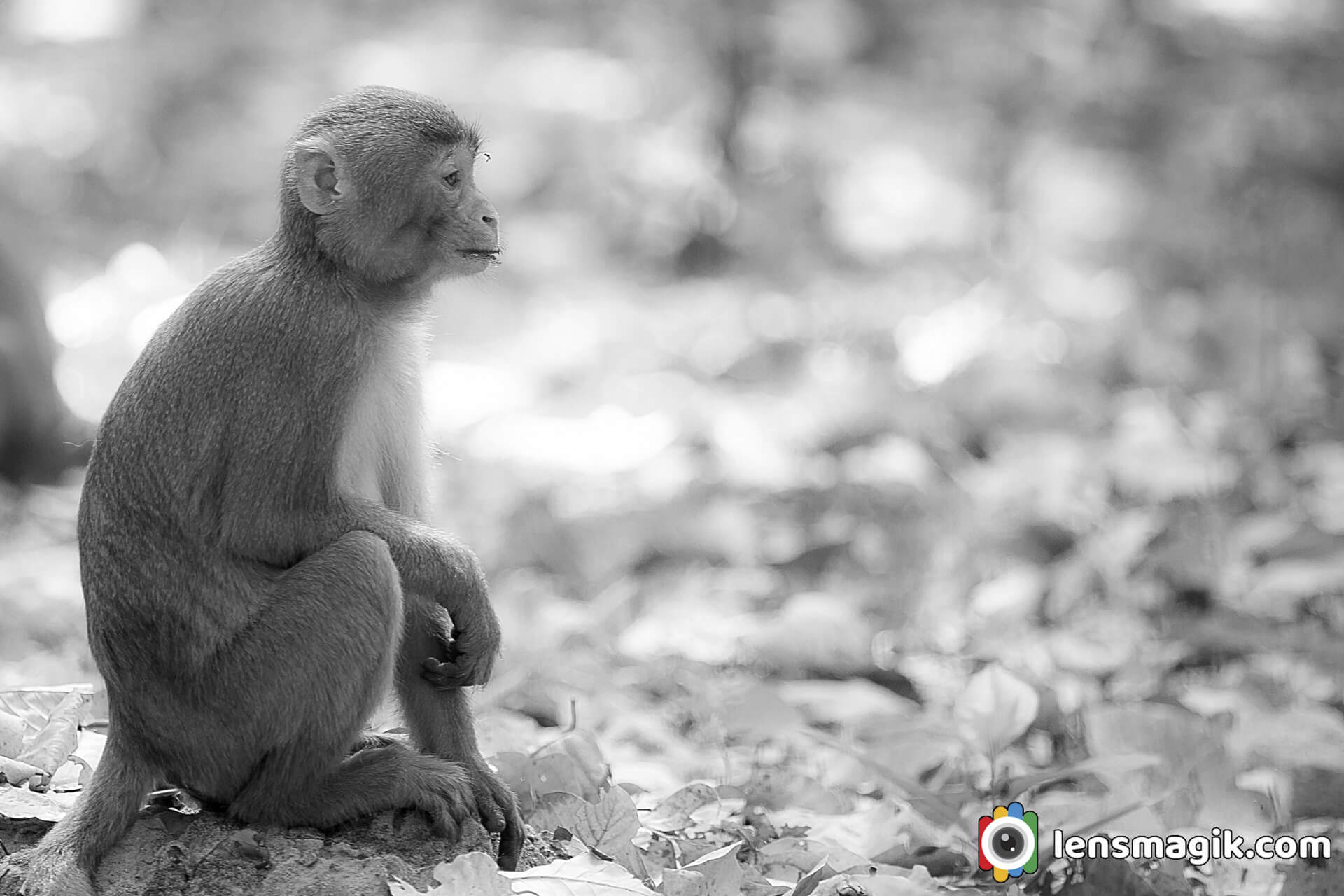
The animals in their Habitat :: Animals in their habitat OR Animals in their environment is one of the good siting for wildlife photographer. During my trip to Jim Corbett National Park i found lots of Rhesus monkeys and Rhesus monkey baby in their habitat. They are jumping all over on the trees. Some of them are on the ground and got something to eat at ground level. So i didn't miss that moment. Some good images i capture of Rhesus monkey which explain the behavior and habitats of monkey.
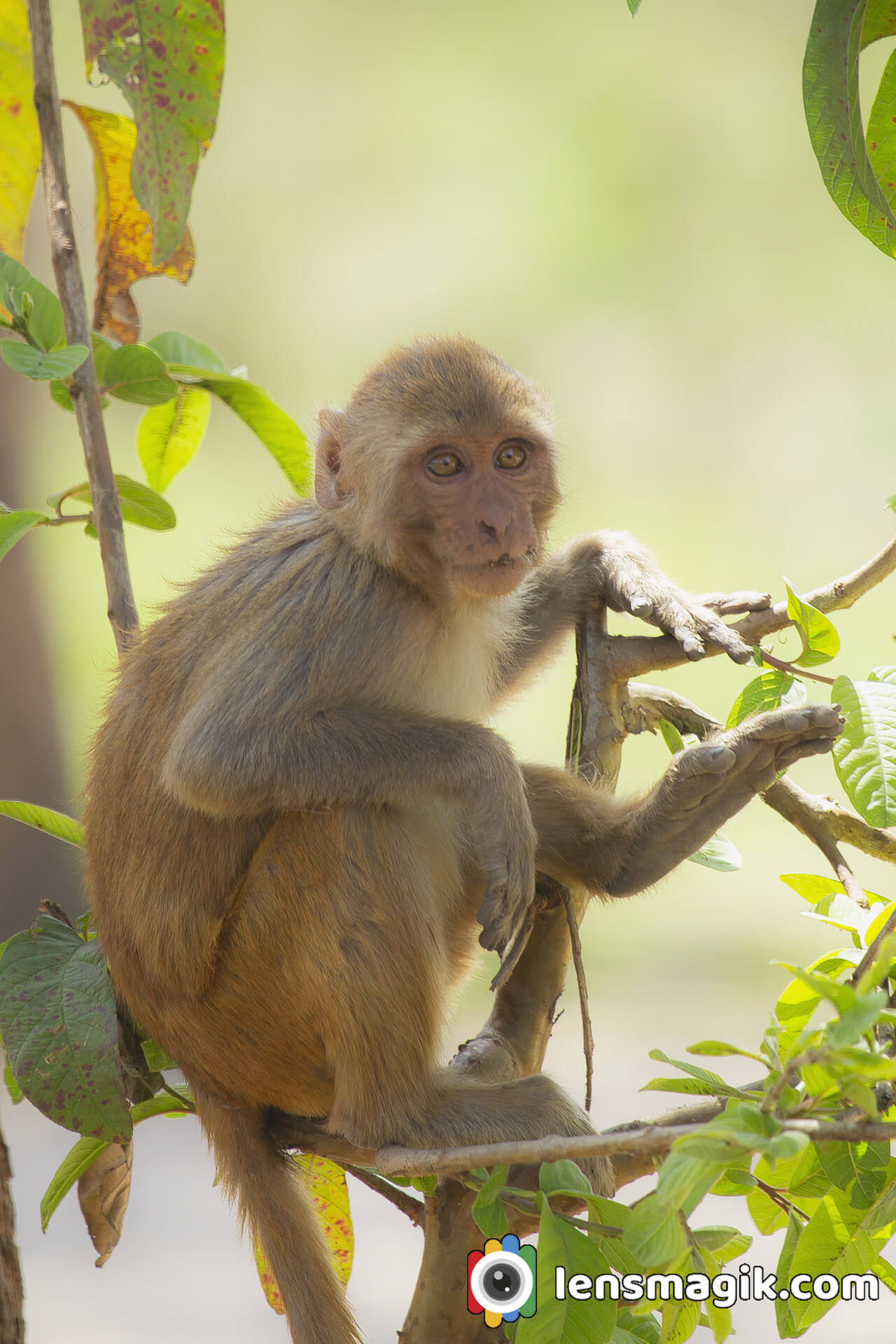
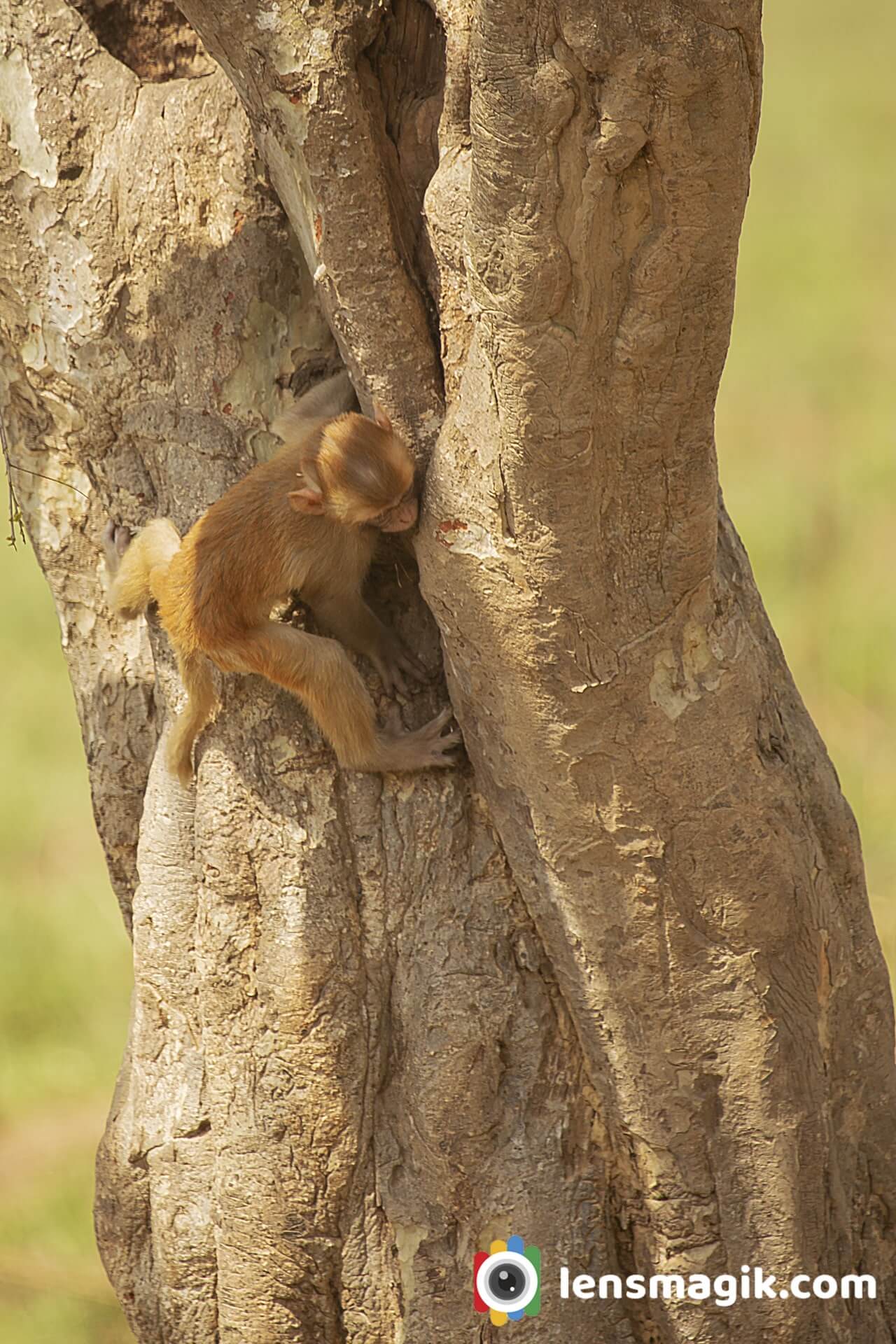
At the end the baby Rhesus monkey baby try to get down from tree . Now he is able to climb and jump over trees without help of his mother.
Location of All photos : Jim Corbett National Park, Dhikhala
Gear Used : Canon 6 D, Canon 100-400 mm lens
Read more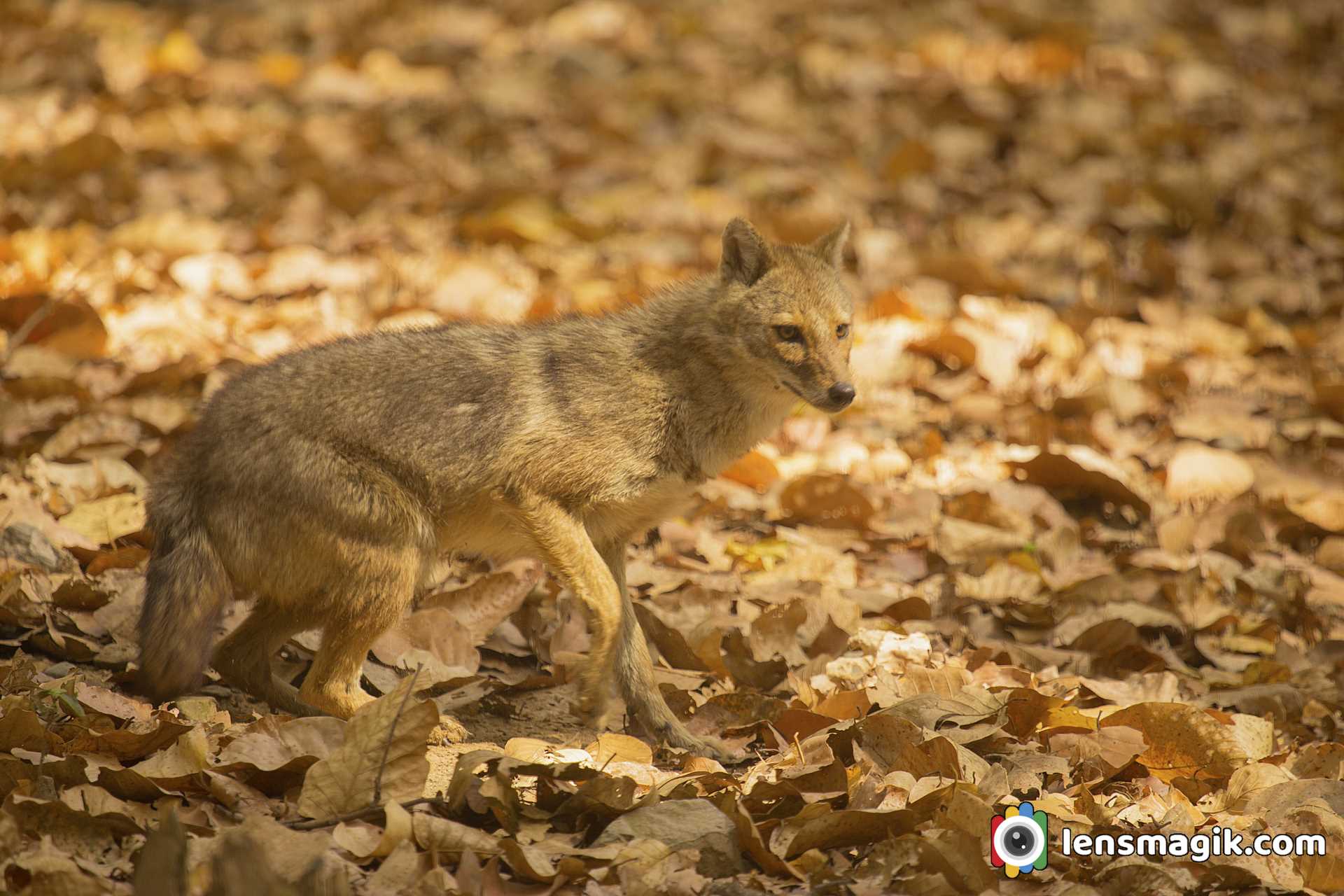
In the canidae family of Jackal there are three types of Jackals.
- Black Backed Jackal
- Side Striped Jackal
- Golden Jackal
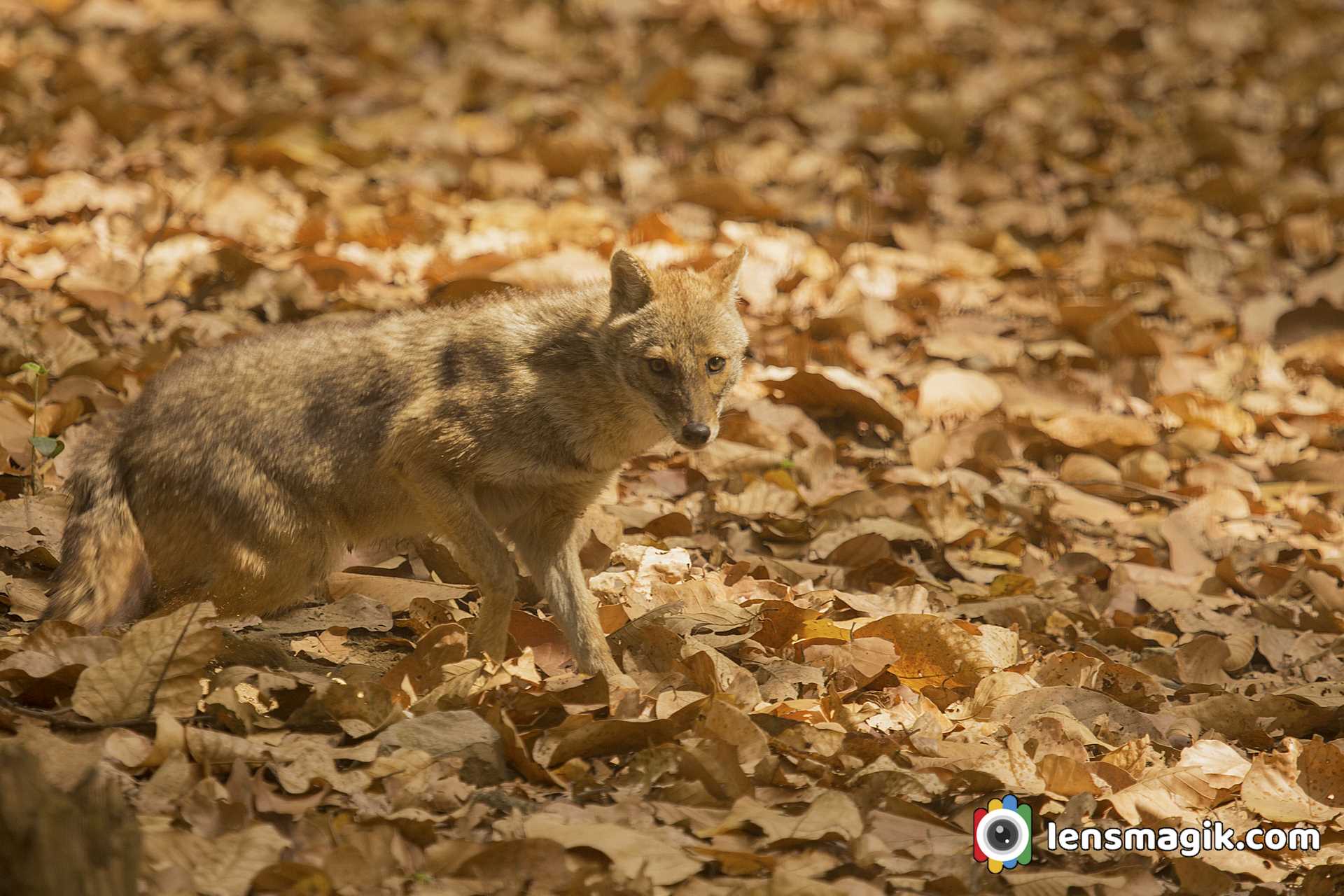
GOLDEN JACKAL AT CORBETT NATIONAL PARK
Golden jackal is a carnivorous mammals. Native of Golden Jackal is southeast Europe, southeast Asia and south Asia. Golden Jackal looks like a Indian Wolf but it little bit smaller in size compared to Arabian Wolf and Indian Grey wolf. The Golden Jackal's coat can vary in color from pale. In summer its color pale creamy yellow and dark tawny beige in winter. My first siting of Golden Jackal was in Jim Corbett National Park. I found a Golden Jackal during my morning safari at Corbett National Park. Golden Jackal is from biological family Canidae.
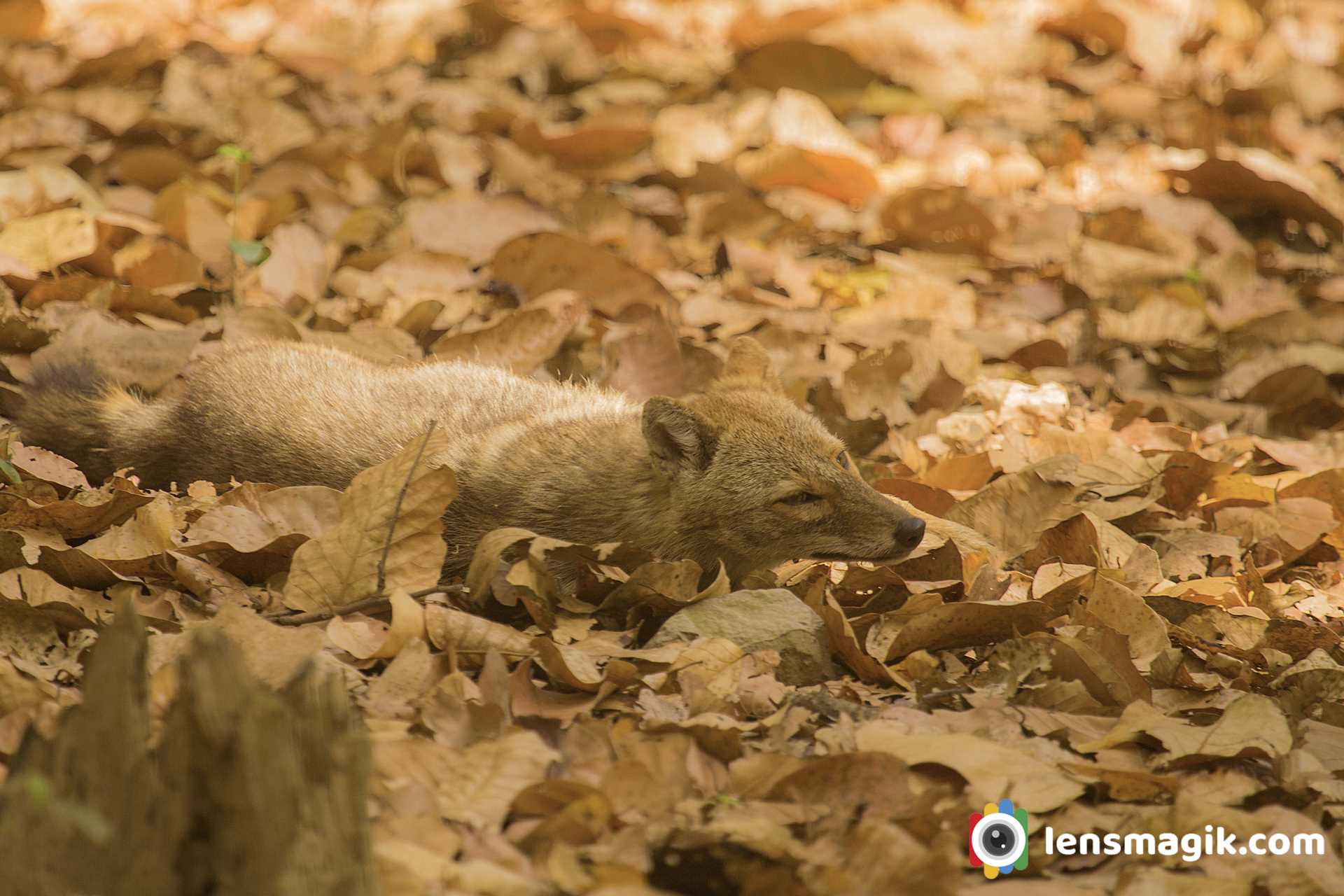
Golden Jackal facts :
- Golden Jackal is similar to Grey wolf but smaller in size.
- Shorter legs, short tail, muzzle is narrow and more pointed and less prominent forehead of Golden jackal in compare to Grey wolf.
- Golden Jackal Male length approx. 70-85 cm and Golden Jackal Female length around 68-73 cm.
- Male Golden Jackal weight around 6-13 kg and female Golden Jackal weight around 7-11 kg.
- Shoulder height for male and female golden jackal is 17-20 inch.
- The skull of Golden jackal is smaller then Grey wolf and also weaker too.
- Golden Jackal develops a horny growth on a skull which is known as " Golden Jackal's Horn ".
- The Jackal's fur is short and golden in color so its called Golden Jackal.
- The Jackal moults twice in a year. Spring Moult and Autumn Moult. The spring moult starts from February or middle March and Autumn moult starts in September mid.
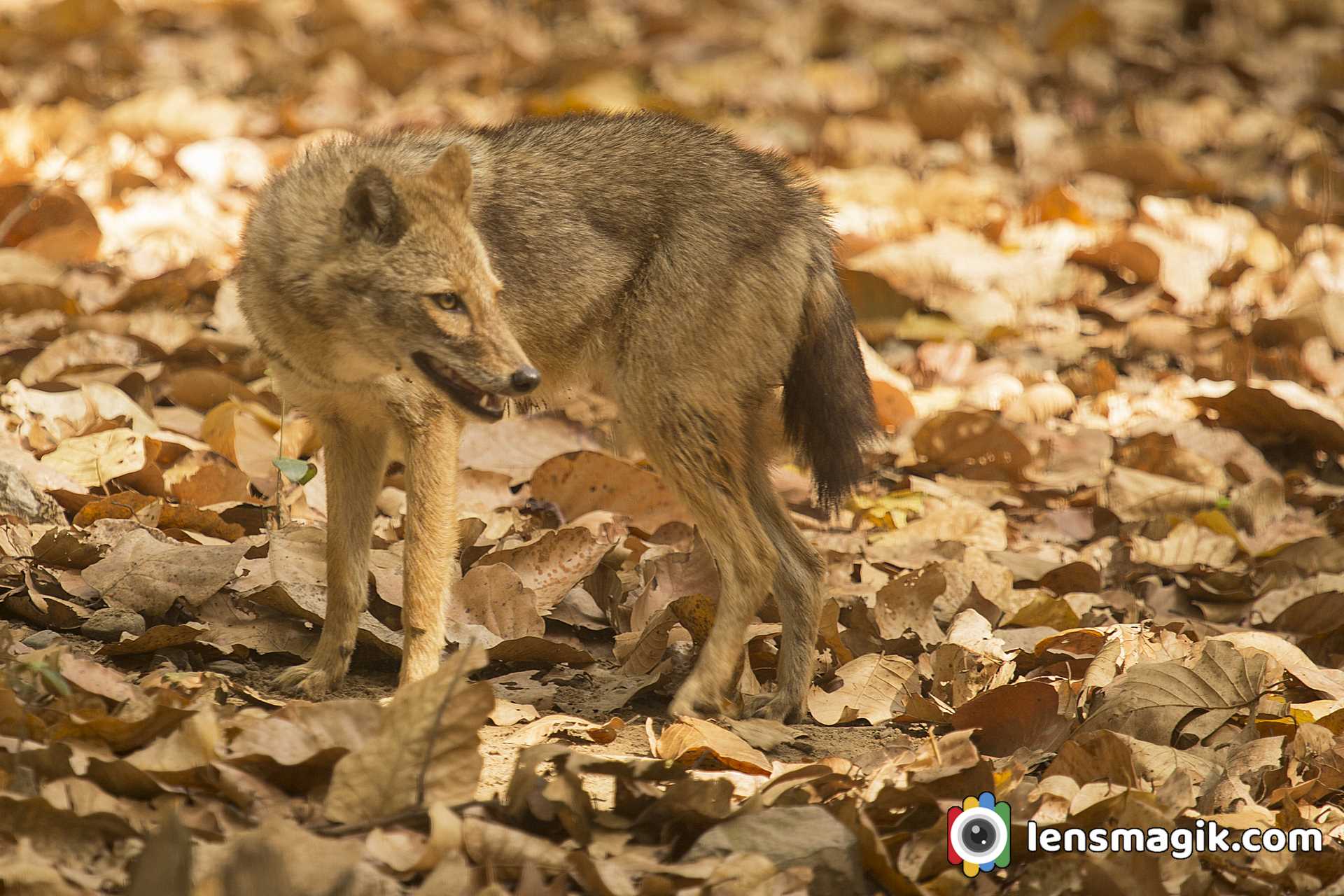
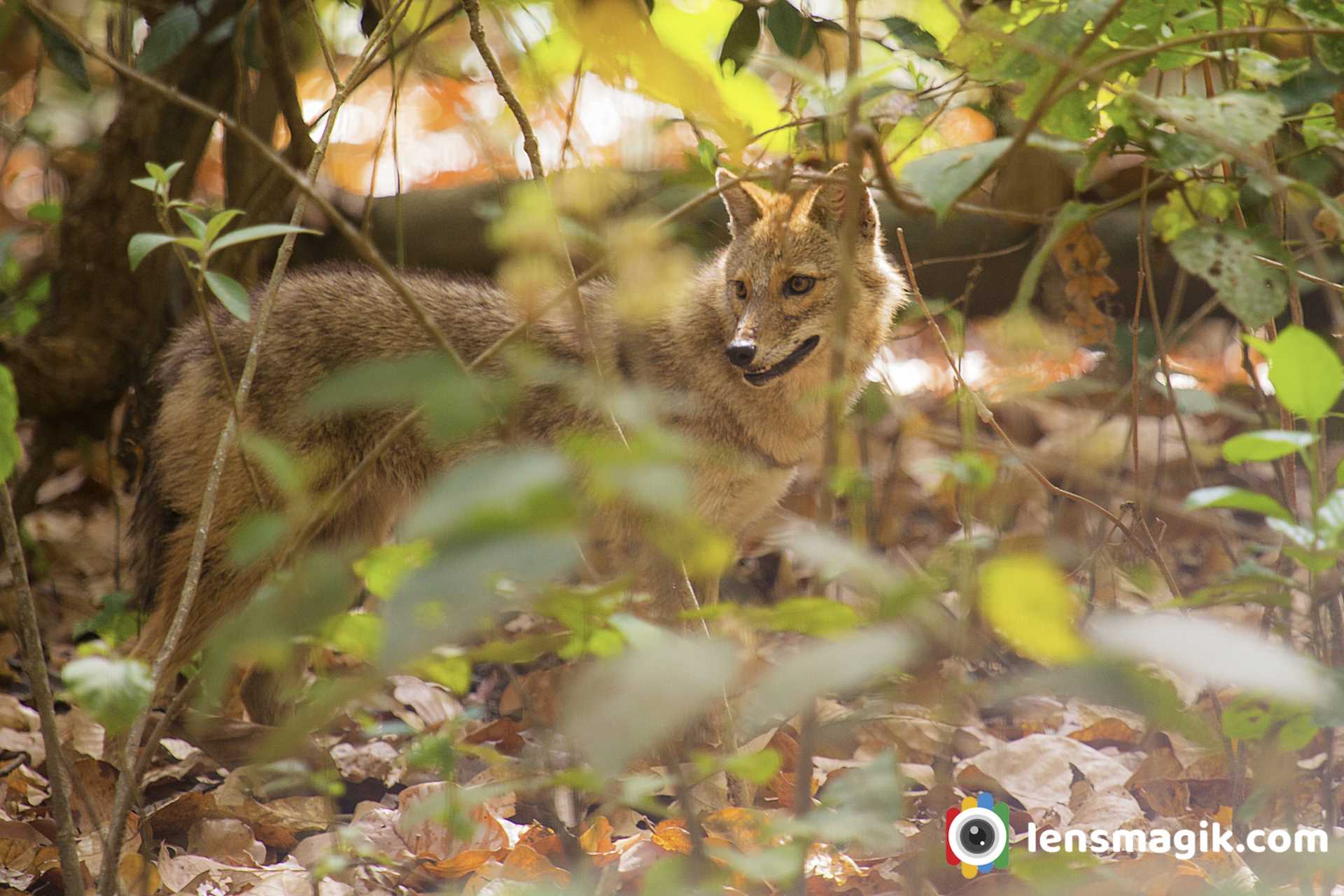

Black Backed Jackal :
During my Kenya trip i accidentally get Black backed Jackal at Lake Nakuru. Lake Nakuru is very famous for Rhinoceros ( Rhino ). Here i found Rhino and also a Black Backed Jackal . Also African Vultures i found in a group.
- Black backed jackal found in Botswana, Zimbabwe, Namibia, South Africa and Kenya.
- It is listed in IUCN least concern spices.
- It is also called Fox.
- Black backed Jackal has two sub spices
1 ) Cape Black Backed Jackal
2 ) East African Black Backed Jackal
Side Striped Jackal :
Till Now i doesn't get side striped jackal but it also found in southern Africa. It is smaller than black backed Jackal. I have no images of it and no more information about it.
Please feel free to comment and any suggestions for my blog article and any content related query. Also if you like then share it to your friends too.
Scientific name of Golden Jackal is Canis Aureus
Camera gears used : Canon 6D with canon 100-400 mm lens
Read more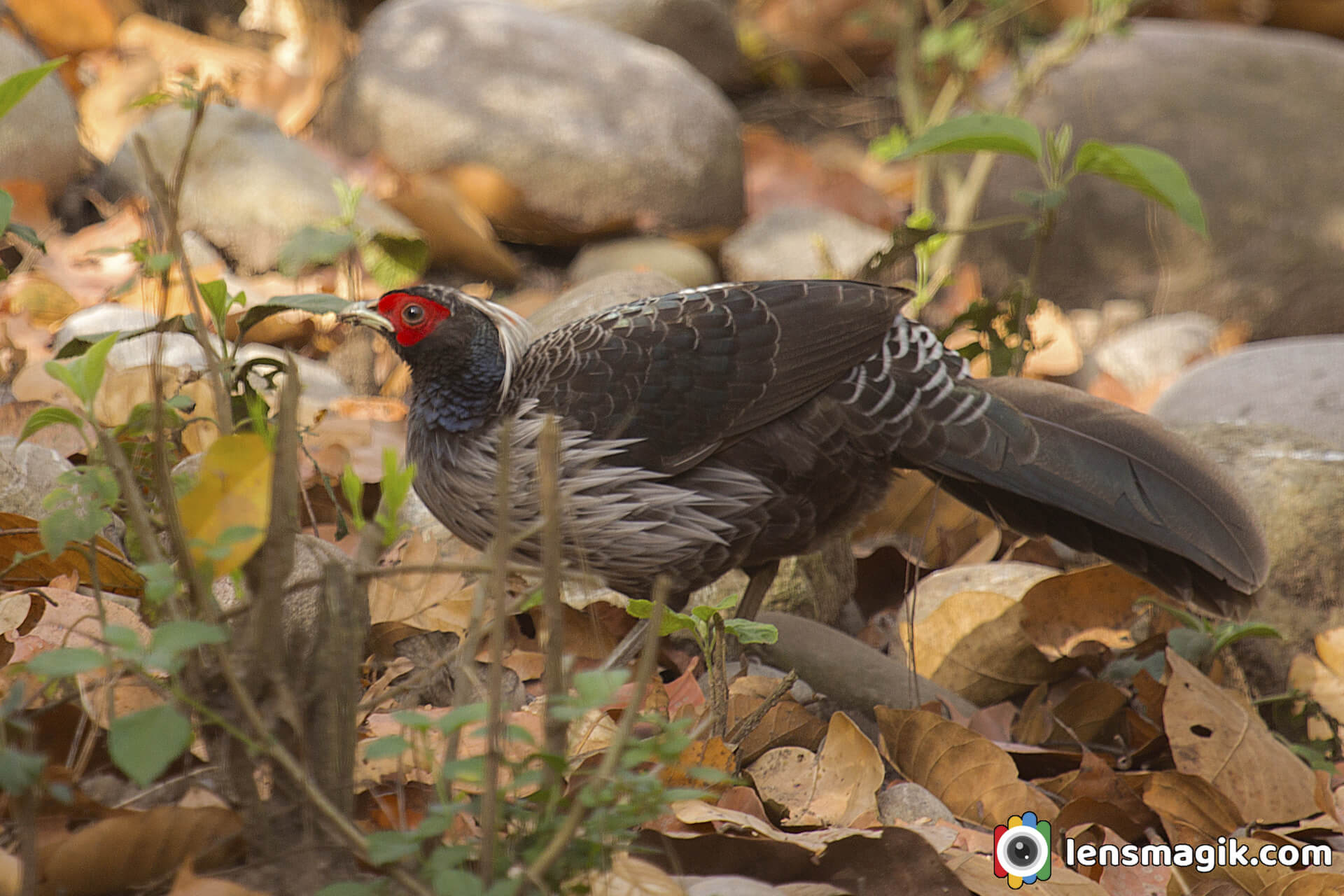
Kalij Pheasant is a bird of Phasianinae family.It generally found in forest area. It is a heavy body ground feeding bird which known as Galliformes in Order. It is also a game bird in Asia many years ago but now this bird is not use a s a game bird. Many years ago it spell also Kaleeje Pheasant. The Binomial Name of Kalij Pheasant is Lophura Leucomelanos. A beautiful bird found in India at Corbett National Park also found many other areas but i don't know all places. I shoot at Jim Corbett National Park during safari ride in the morning.
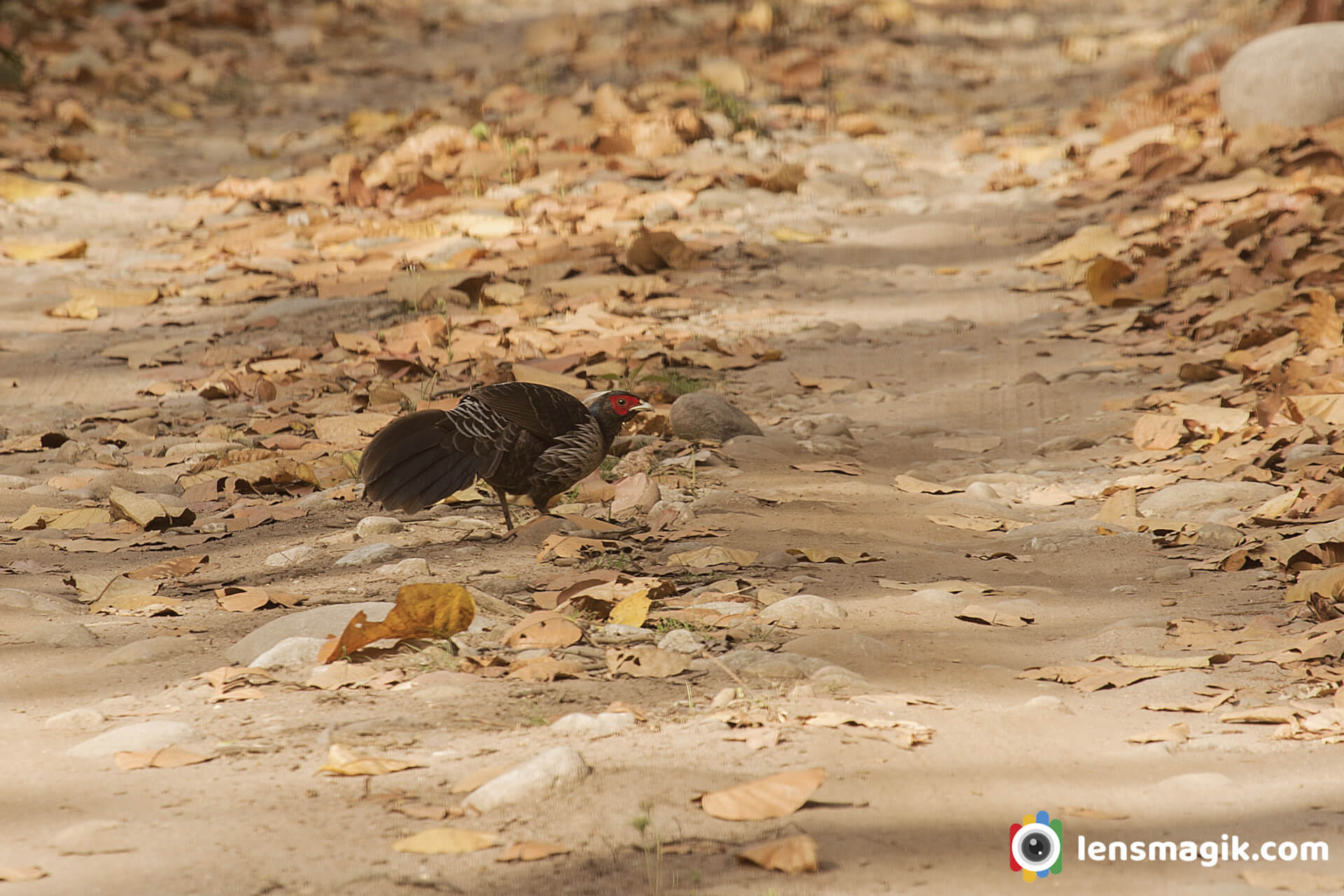
Subspices of Kalij Pheasant :
Total nine subspices of Kalij Pheasant
- White Crested Kalij Pheasant
- Leucomelanos - nominate at Nepal
- Black Kalij Pheasant
- Oates' Kalij Pheasant
- Lineated Pheasant
- Black Backed Kalij Pheasant
- Horsfield's Pheasant
- Williams' Kalij Pheasant
- Crawfurd's Pheasant
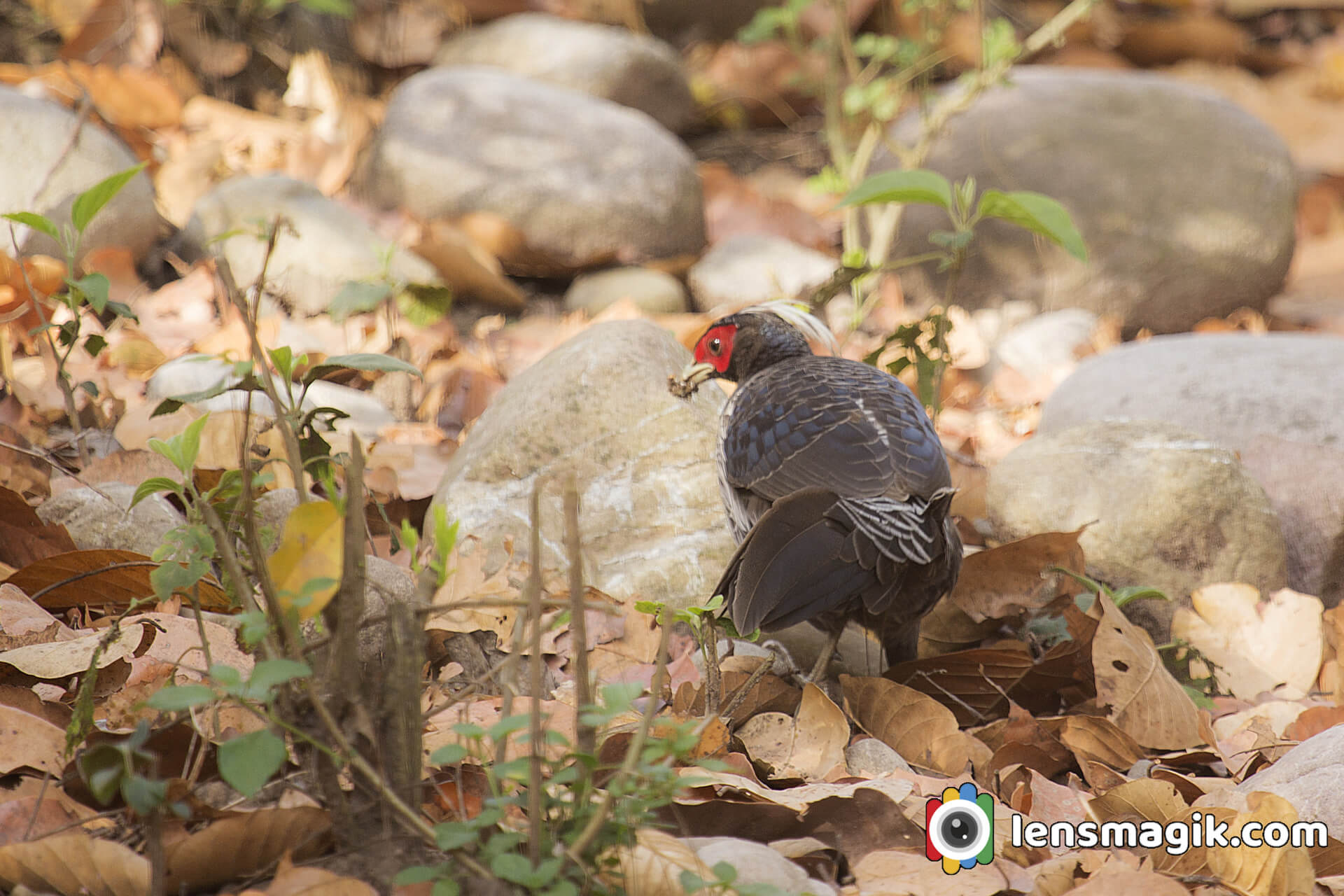
About Kalij Pheasant :
- Size of Male kalij pheasant is 24-30 inch and female about 20-24 inch.
- In plumage Kalij Pheasant is glossy blue back and underpart have white rump.
- Crest is white in all spices.
- In some subspices underpart and tail are white with feathers bunch.
- Female Kalij Pheasant is brownish.
- Underpart of female is black and whitish.
- Kalij Pheasant is Least Concern spices of IUCN bird list.
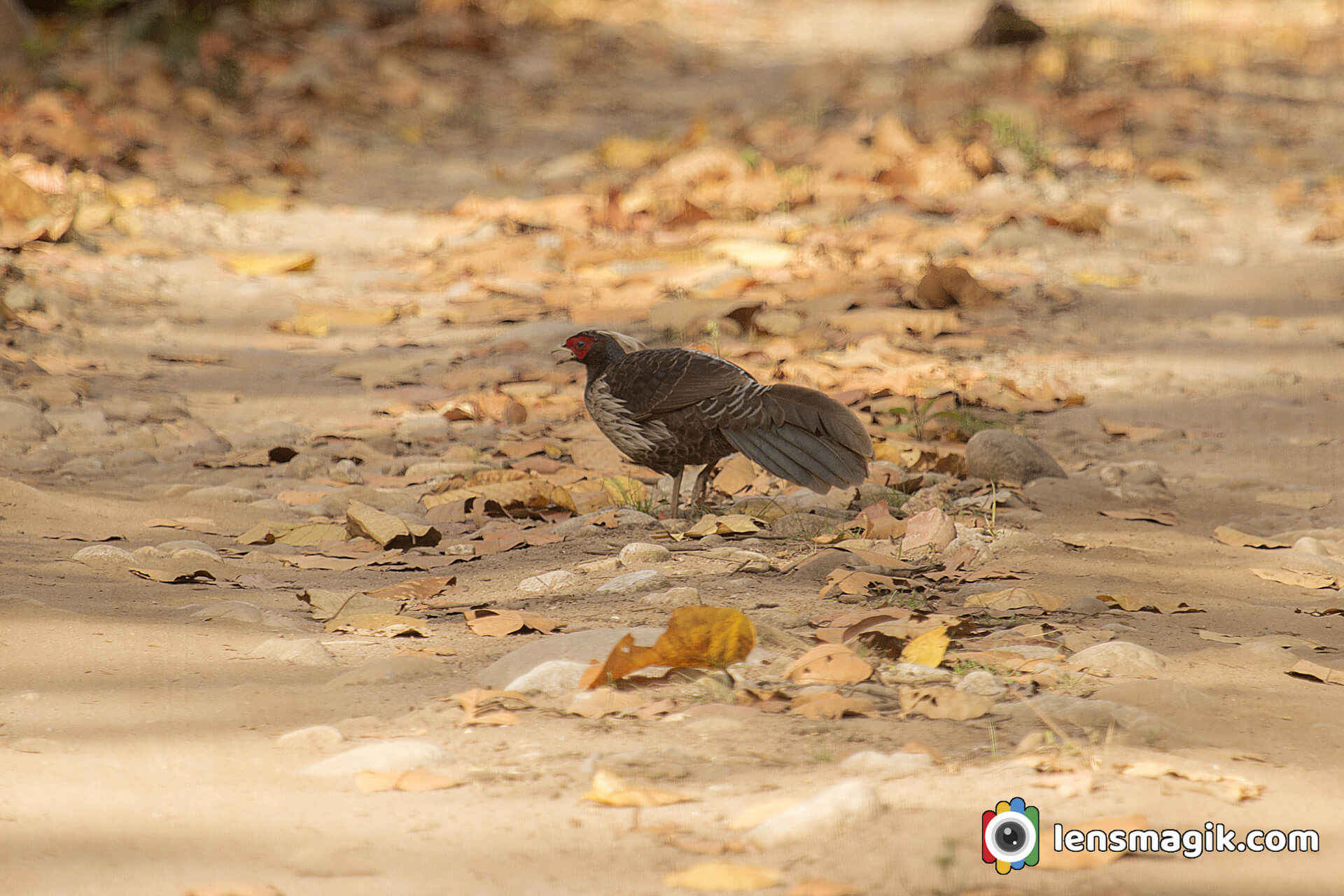
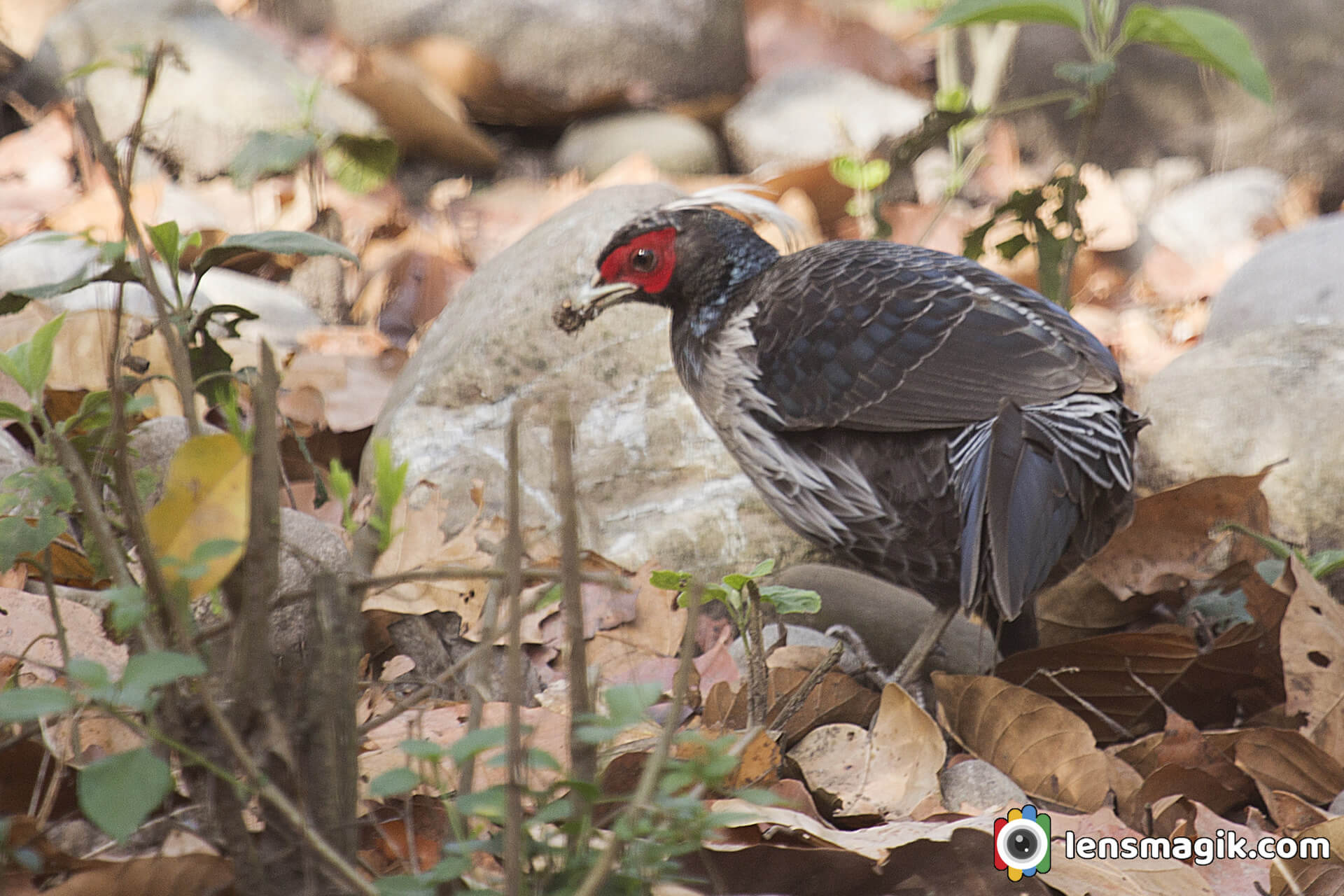
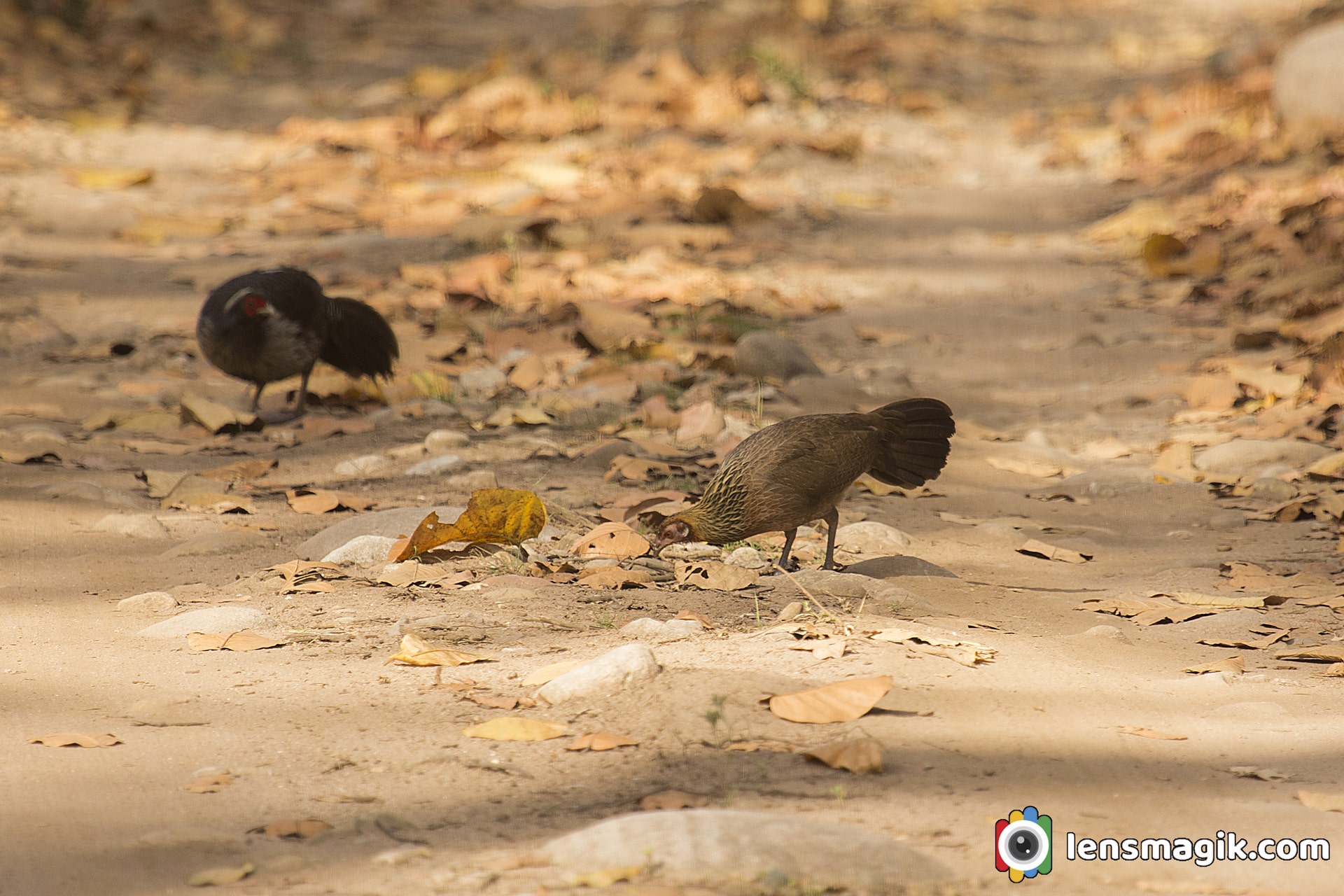
Jim Corbett National park is one of the best place where you can found birds, mammals, reptors and reptiles too. While i am at safari i was looking for Tigers but on the road Kalij Pheasant Pair are wondering and i don't miss the chance though they are far from me. The result of images is very low but it easily helps to identify it. A record shot for me of Kalij Pheasant at Corbett national park.
Camera Gear Used : Canon 6 D, Canon 100-400 mm lens.
Read moreIt is very small falcon and in shape is like shrike.It is a species of "Birds of Prey " in a falconidae family.It is found in southeast Asia across Bangladesh, Thailand, Myanmar, Nepal, Bhutan, India,Vietnam. I shot it at Corbett National Park Dhikala forest Rest house backside. It is a smallest falcon in falcon family. In India it generally found in Himalayan Range like northeast Uttarpradesh, Sikkim, Bengal and Assam. Collared falconet is Shy Bird.
Description and Facts About Collared Falconet :
- Its wings are pointed.
- It is 18 cm Long only.
- Tail is rounded and medium length .
- The adult male has a black crown and white forehead.
- It is the member of genus Microhierax which are the smallest falcon.
- It is found in forest country aprox 5500 ft height.
- It roosts and breed in old woodpecker or barbet holes in dead trees
- It feed mainly insects and small species of birds.
- It also shy and nervous.
- It has shortish wings and tail is medium length.
- It has also strong half feathered legs and very powerful feet.
- A bold white collar and supercillia
- It is a smallest falcon in falcon family.
Collared Falconet is a raptor so its feets are very strong to catch and it is also a good hunter bird. During my trip to Corbett national Park we done a morning safari and taking a rest at Dhikala forest lodge. On the back side of lodge on a old dead tree we found it. I seen Collared Flaconet for the first time and i ask to my mentor what is it ? and he said its a collared Flaconet and i ask is it Falcon ? Well i am surprised that its a small bird that called Falcon but its true. It looks very cute to see but its a good hunter. Bird watching and bird photography is my favorite at that time and now also. Bird photography is very challenging because you have to follow the bird and its behaviour for taking a good picture of bird.
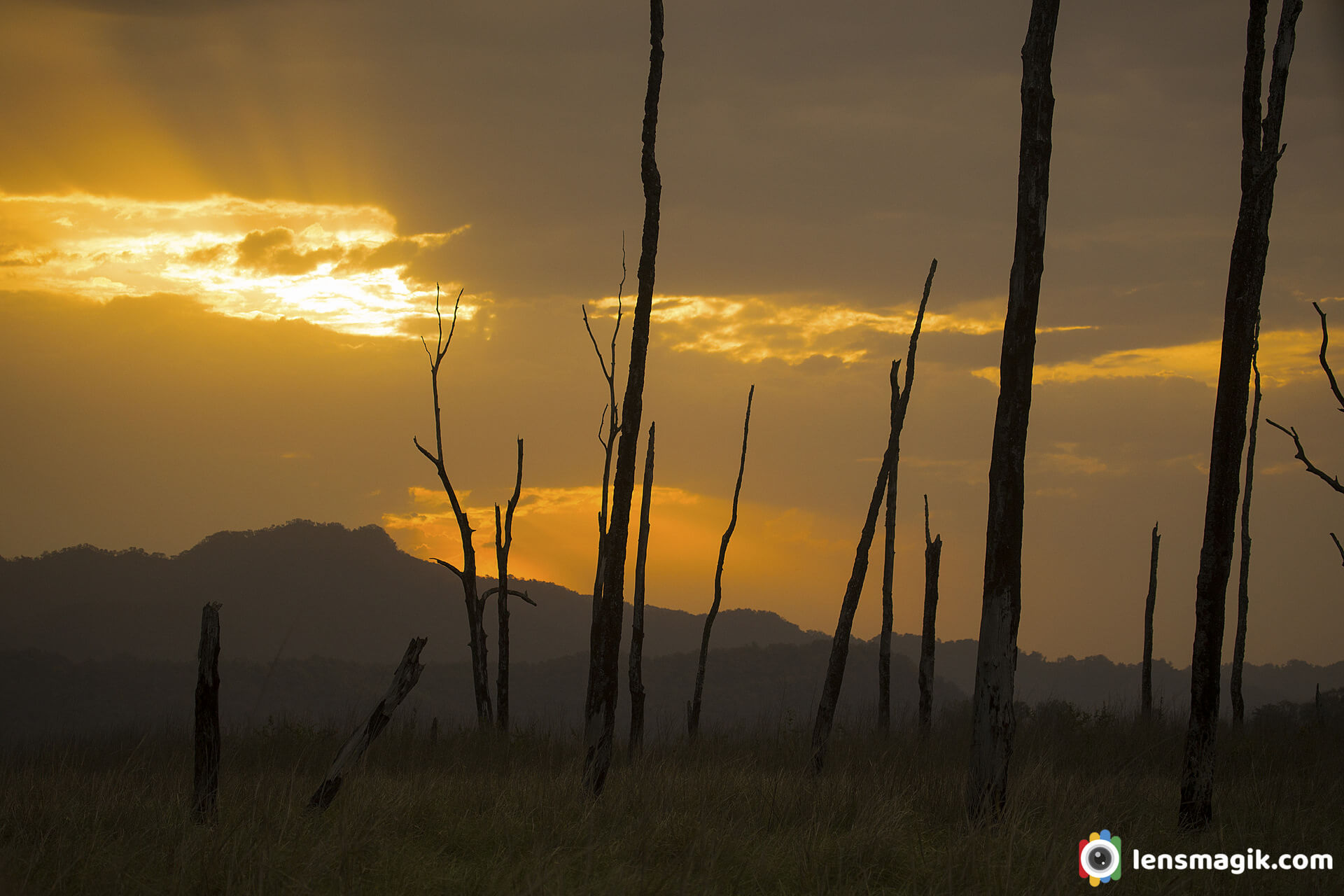
Landscape Photography is one of my favorite subject. Corbett National Park is one of the most visited National Park in India. Its a Biggest Tiger Reserve in India and also large number of Tigers are here. Framing a landscape photo need good background and foreground. Well in corbett National Park Dhikala is the place where you can stay at night and also near to river side so you can visit Asiatic Elephant Family at Dhikala area.
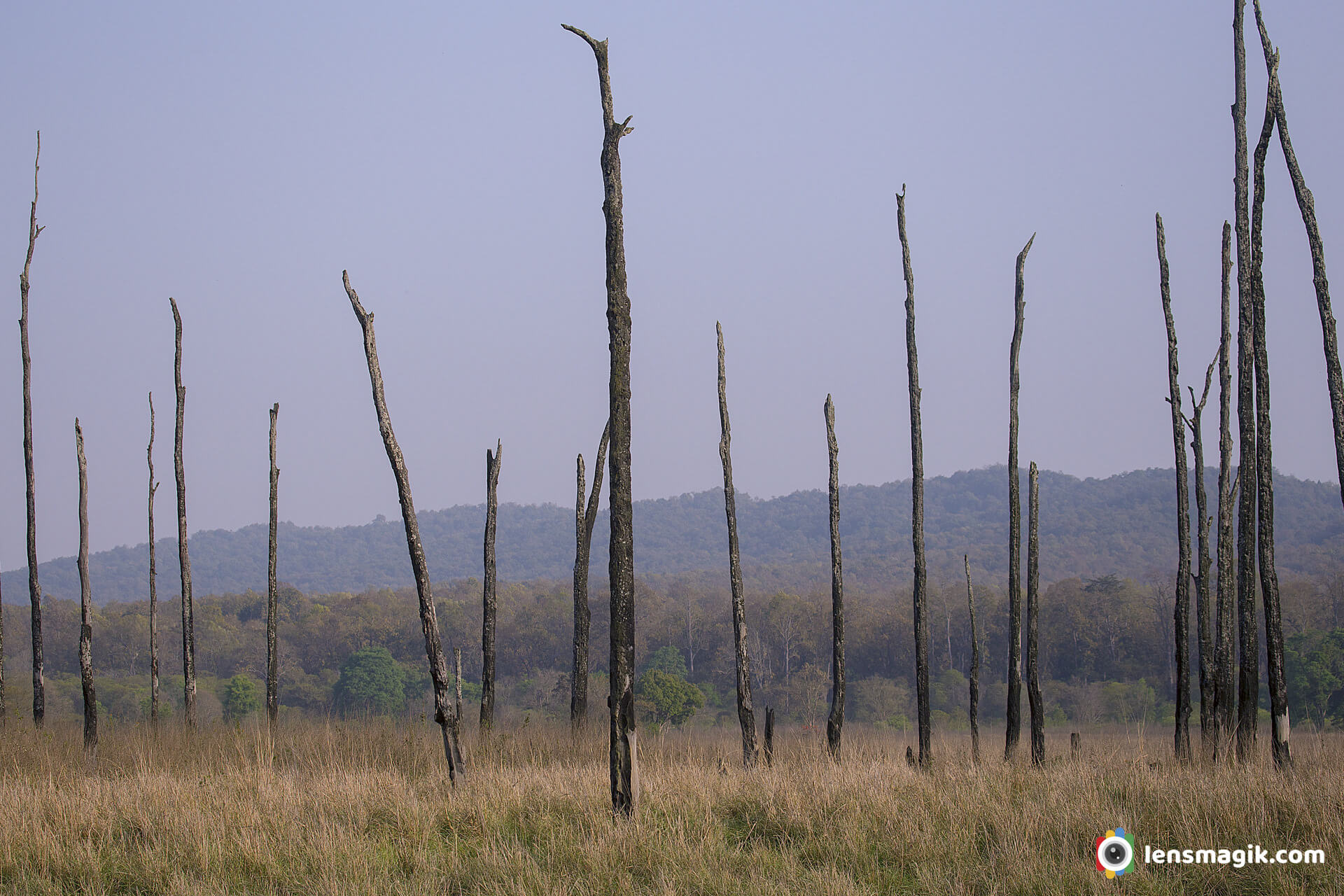
Dhikala is situated at core location of Corbett National park. It is located about 30 km from Dhangadi Gate of Corbett National Park. Actually Dhikala is forest rest house where tourist can stay. Dhikala Forest Lodge is best place to stay in Corbett national Park. There are 6 different winges with different numbers of rooms in Dhikala. Dhikala is most popular to stay for wildlife photographers because in this area you can visit good river side sunset or sunrise and also a large number of Asiatic Elephants with Family.
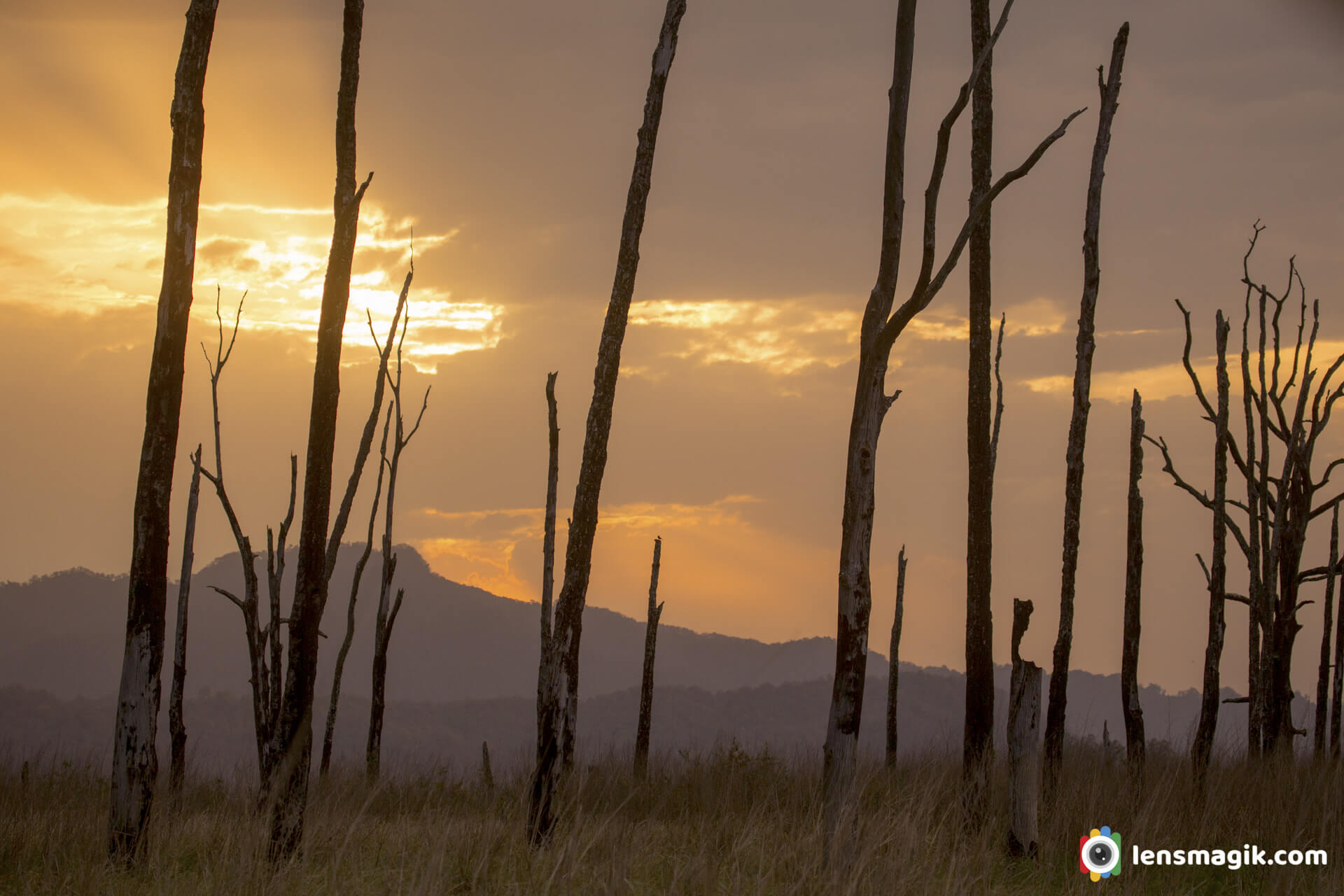
Morning Golden Light :
While shooting landscape photography light is very important . When i was on my safari at Dhikala zone i saw morning golden light and a burned tree trunks standing on ground. Well i just capture is with good golden light. If you want good colors of sunlight then use white balance on shades in your DSLR camera. It boost your frame colors. And after then post processing with good color corrections. I also shoot it in Black and White landscapes at Corbett national Park.
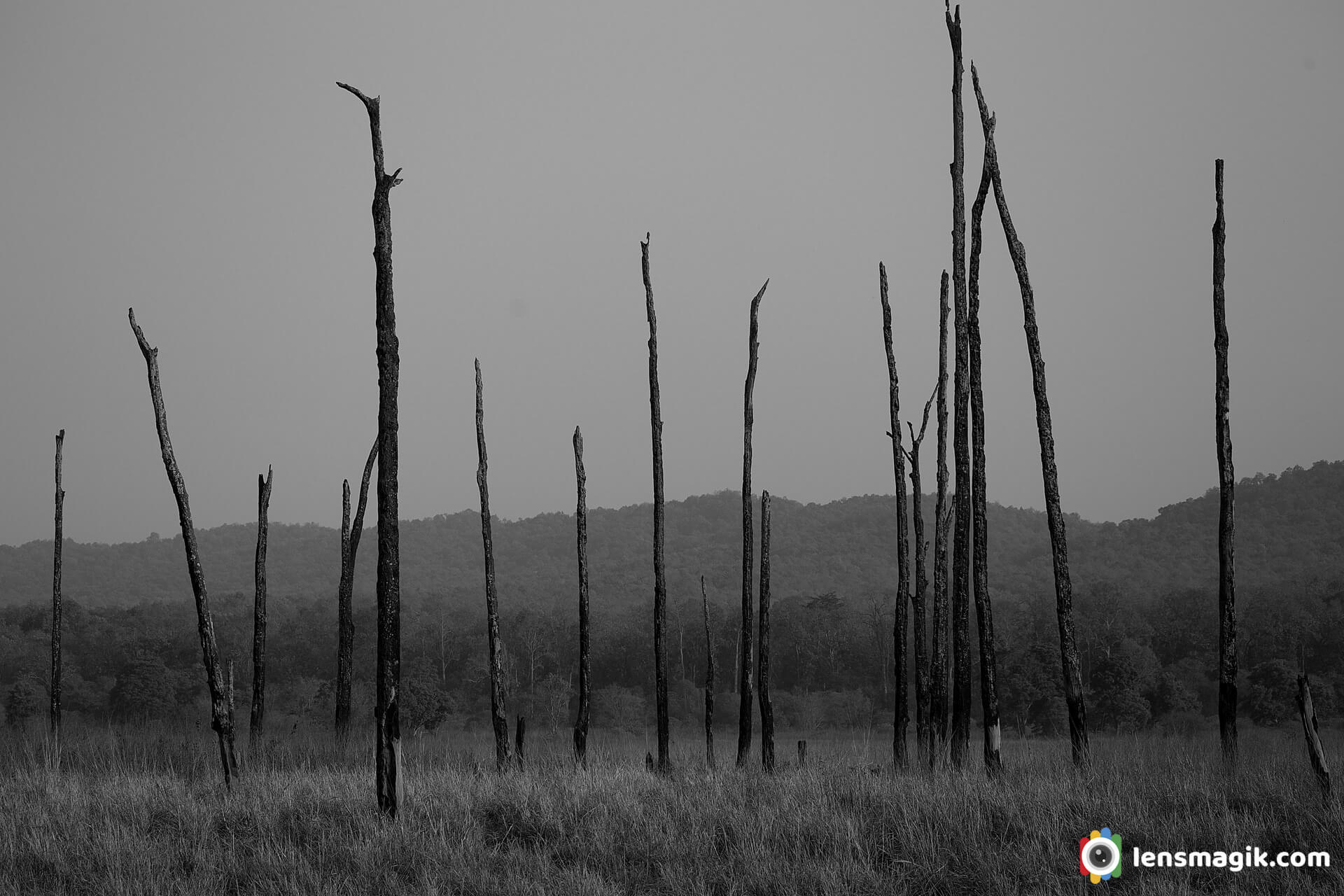
Corbett national park is too big in area that Tiger siting possibility is too low. But there are another beautiful subjects to shoot their like elephants, crocodiles, birds etc. Also dont forget the Dikhala site where you can take landscape photos of amazing corbett. During sunset time here you can get elephant family and also magic of golden light.
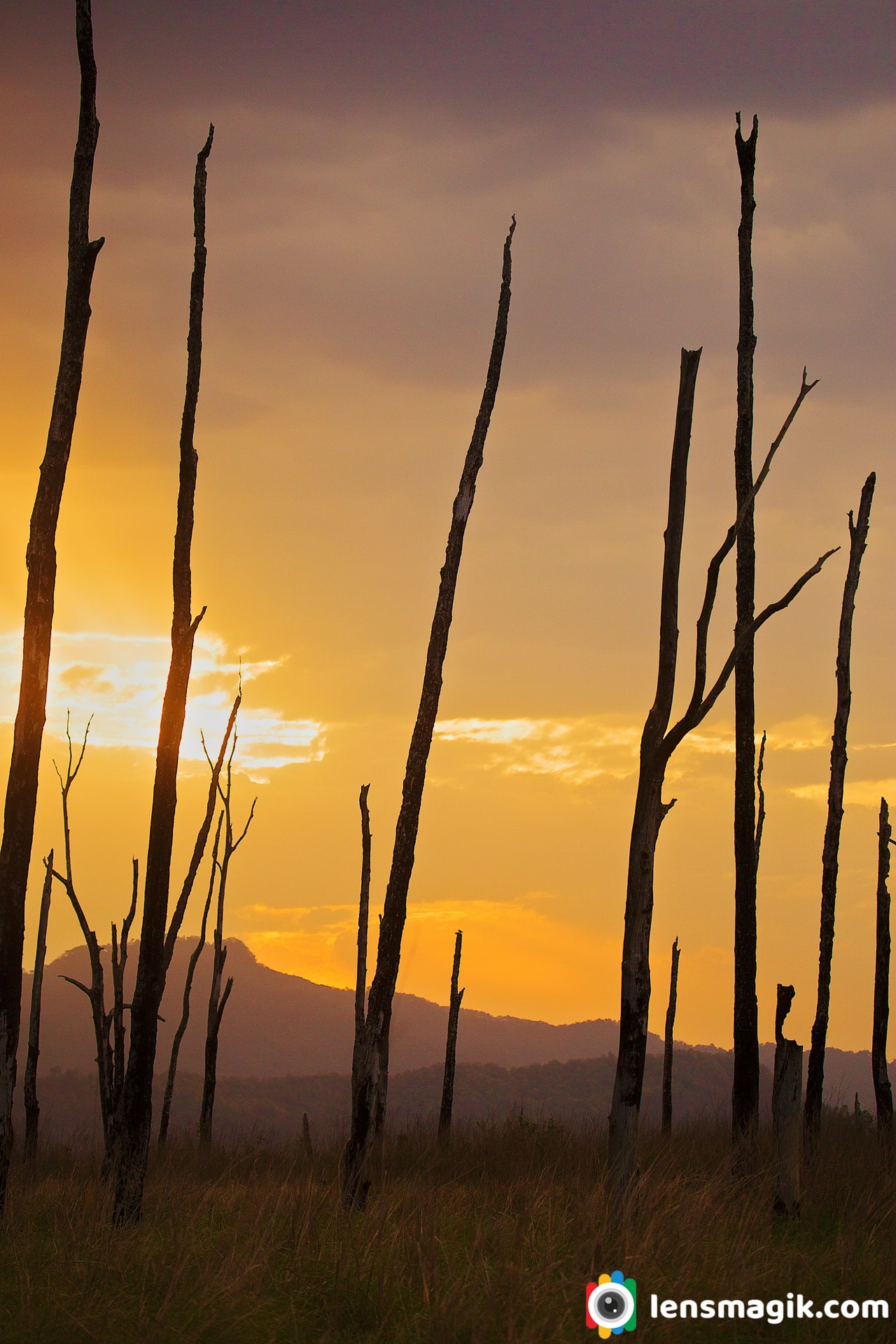
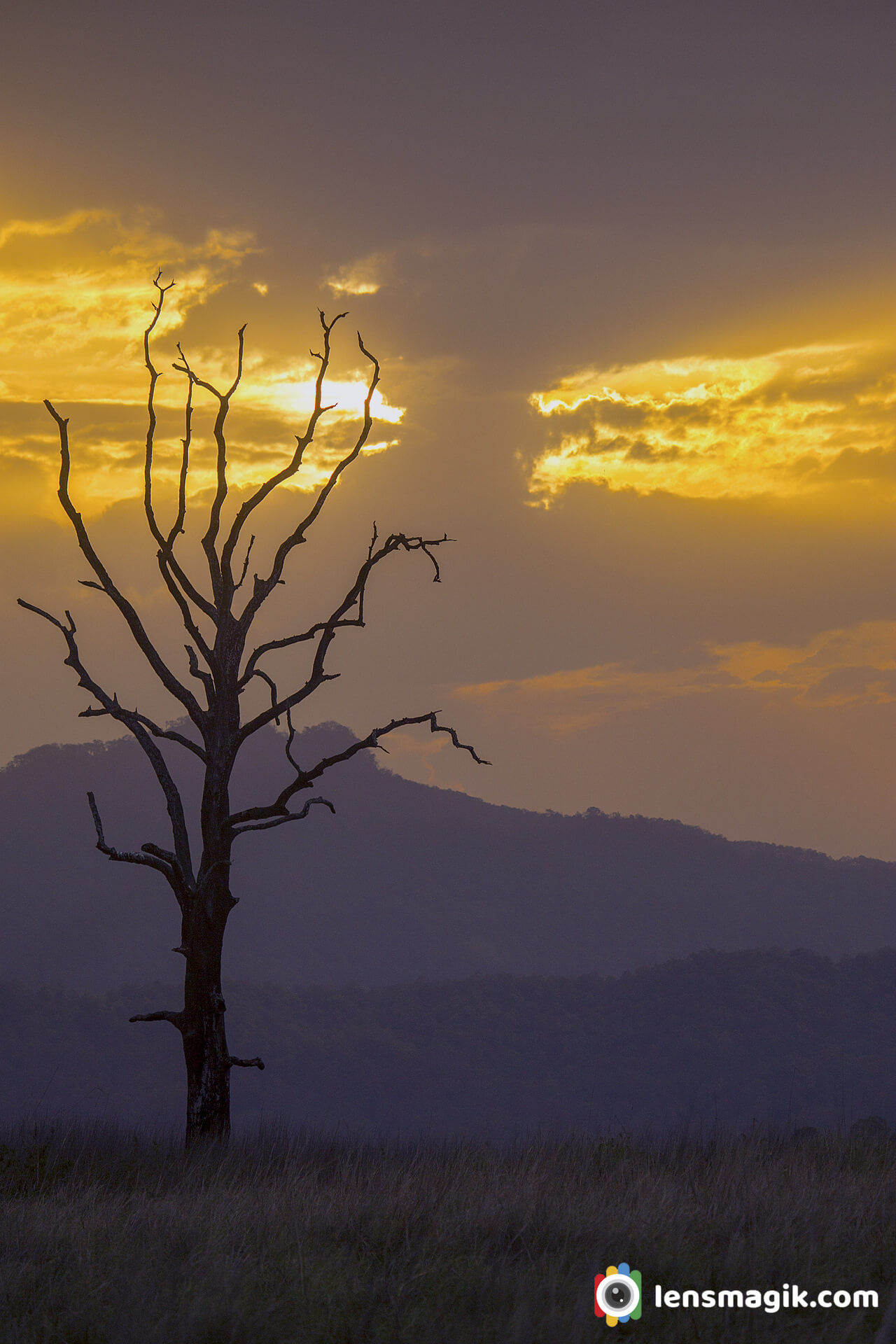
Alone tree with golden light looks beautiful in frame.
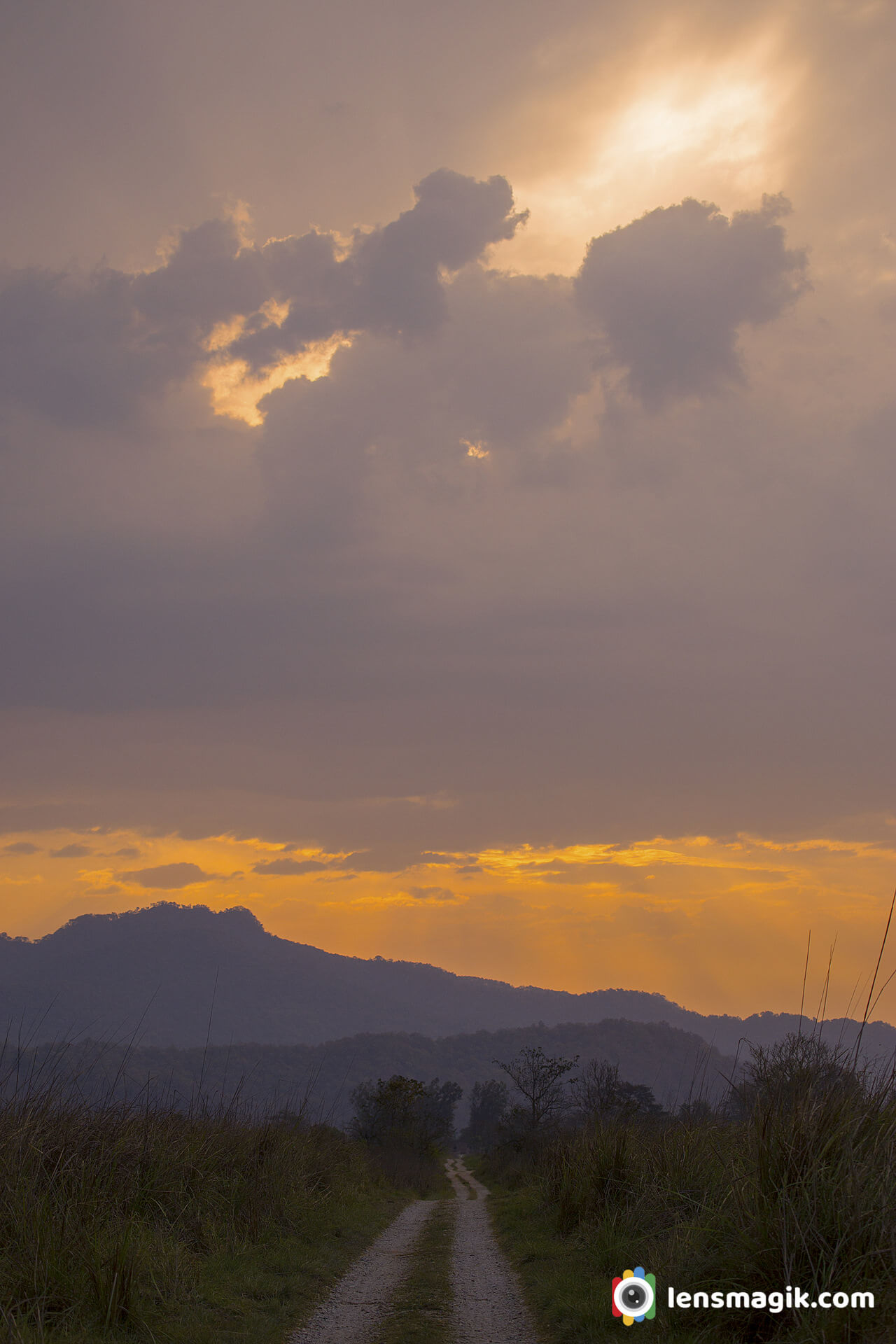
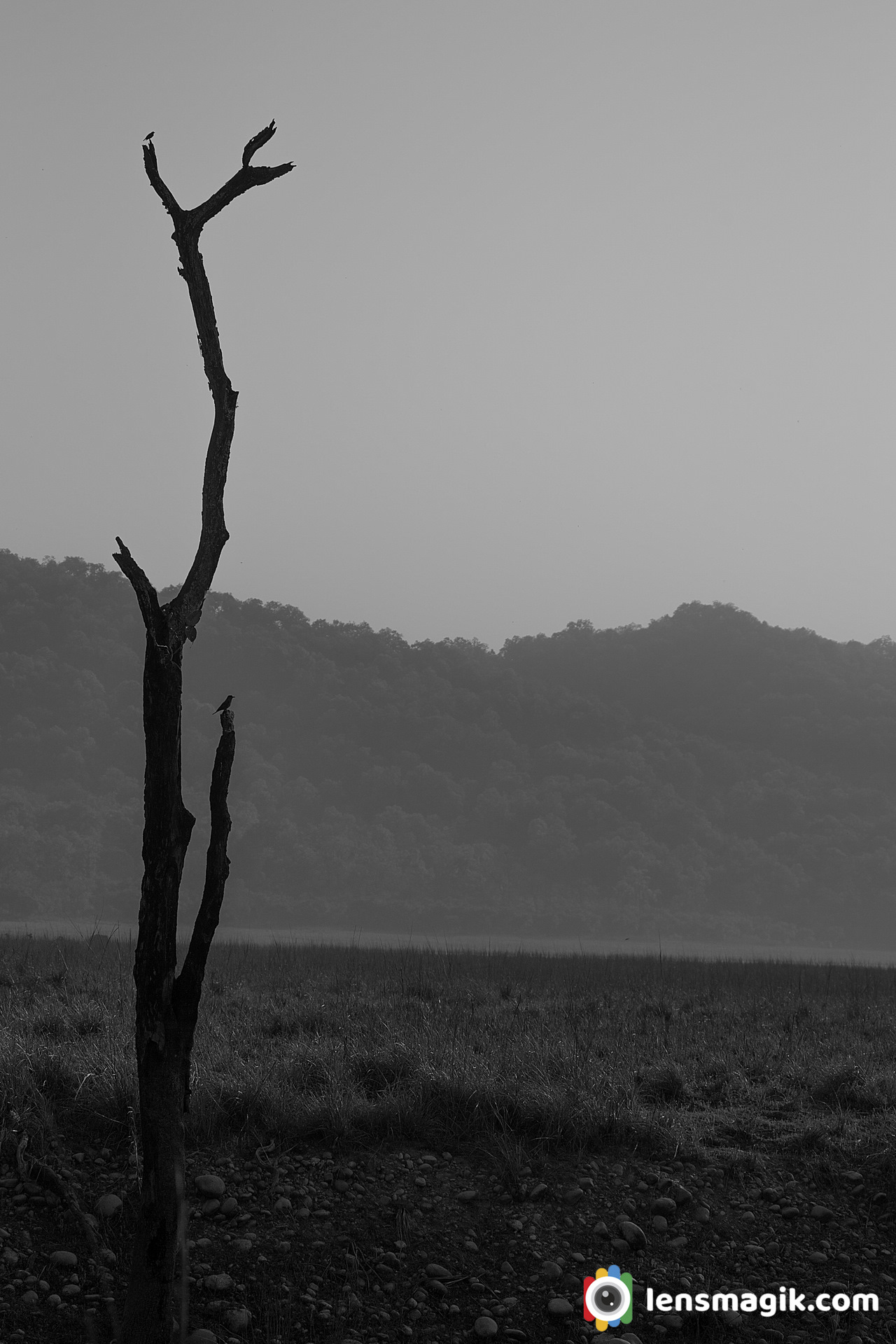
A birds on top left branch of the tree .make my frame outstanding black and white photo with bird.
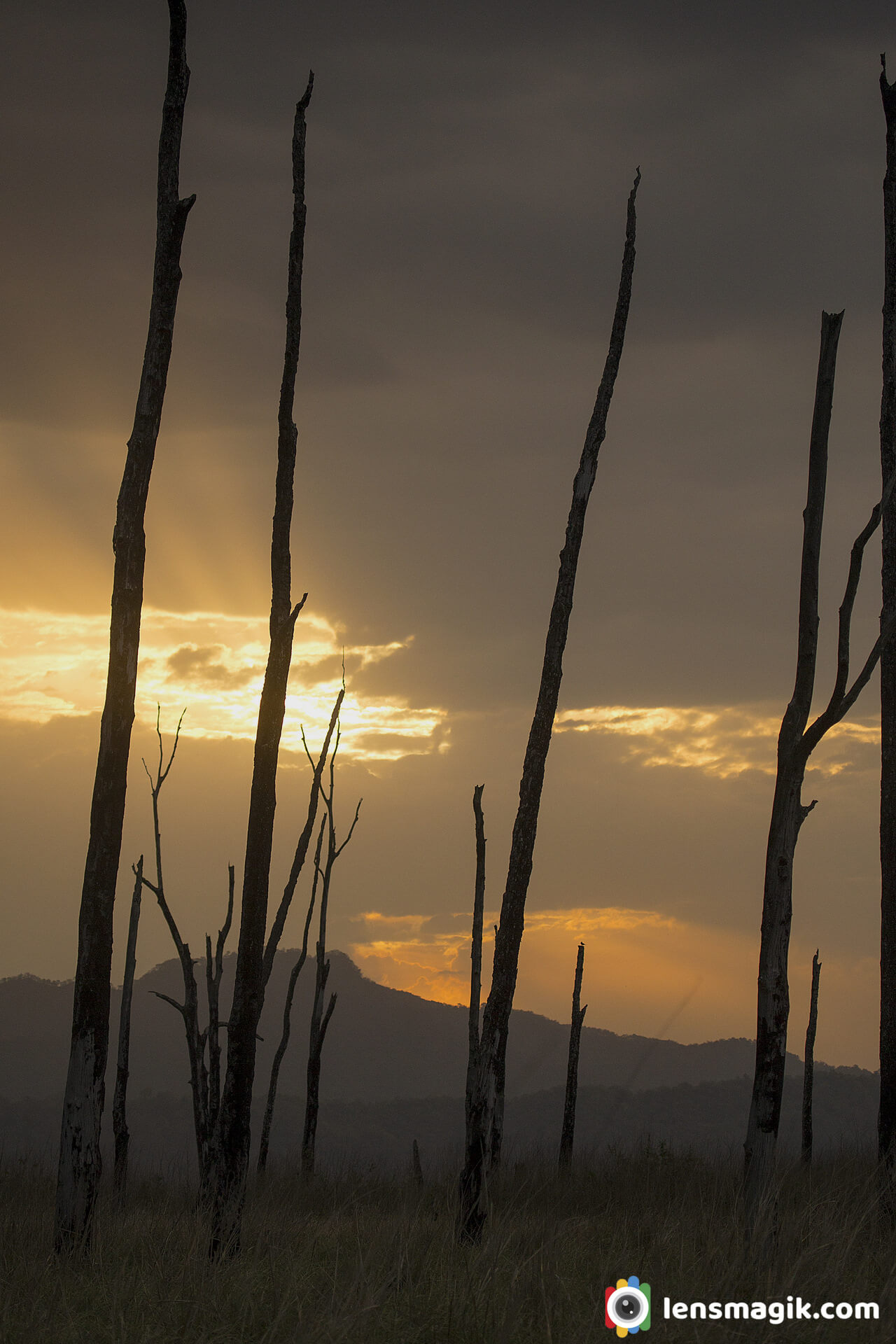
How to Reach Corbett National Park :
Corbett National park is located in Nainital District, Ramnagar, Uttarakhand. Nearest Railway station is Ramnagar about 10-12 km from Corbett Tiger Reserve. Kathgodam Railway station is about 3 hours distance from corbett national park. Nearest Airport is Pantnagar about half hour drive from corbett national park. Also you can fly to Delhi and then hire a car for corbett national park for one way. Best time to visit corbett national park is winter season. Well you can also visit all over year but winter is better to visit Jungle. Only Registered vehicles are allowed inside the park so you cannot go with your own car inside park. Bijrani is the best zone after Dhikala to spot Tigers.
Gear Used : Canon 1000 D, Canon 6D, Canon 18-55mm, Canon 100-400mm
Read morePallas's Fish Eagle is large brownish sea eagle. It is also known as Band Tailed Sea Eagle.It is Partially Migratory bird in central Asia. My first siting of Pallas's Fish Eagle Or Pallas's Sea Eagle at Corbett National Park in 2014 while I am participating Canon Wild Click organised by naturewanderers. Color of Pallas's Fish Eagle is light sandy brown. It face is white in color. Its Wings are darker than body color. Juvenile is dark brown in color.
About Pallas's Fish Eagle :
- It is known as Pallas's Sea Eagle Or Band Tailed Sea Eagle
- The length of Pallas's Fish Eagle is 70 to 85 cm .
- With Wingspan length is 180-210 cm.
- Male Eagle weight around 2 -3.3 kg and Female weight around 2.1 - 3.7 kg.
- Main Diet of Pallas's Fish Eagle is Fresh fishes.
- It also hunts water birds, small mammals, frogs and reptiles too.
- It breeds in Russia, Mongolia, India, Kazakhstan, China, Nepal, Bangladesh, Bhutan etc.
- Pallas's Fish Eagle is Endangered spices and listed in Endangered on IUCN Red List.
- Golbal population of Pallas's Fish Eagle is around 2500 approx.
- Pollution and overfishing lakes by humans is main reason for putting in endangered to Pallas's Fish eagle .
- A reason for low count in India is spread of water hyacinth so difficult to find fishes in lake water.
Killing experience of Pallas's Fish Eagle :
To see kill of pallas's fish eagle is awesome experience. It standing on a tree and below 100-140 ft down a river goes and i saw that eagle stand for while then just down in fastest speed n catch a fish OMG what a scene that was . I just sow his speed n accuracy is fantastic.
I m not lucky too much that i shoot that action but a kill n feast i can capture.
Here below picture u can see his neck can turn 360 degree. That specialty makes him perfect for kill , watch, and be accurate .
Location : Corbett National Park, Near Dhikhala , During safari ride.
Canon gears : Canon6D , Canon 100-400mm
Read moreAccentor is a small bird of prunellidae family. In India it is generally found in East Sikkim area. It built its nest low in a bush. When i was on a trip to Singalila National Park. I found at sandakphu area. Sandakphu is high altitude place in Singalila National Park located in West Bengal. From here you can see Mt. Kanchenjunga very clear which is highest peak of West Bengal. Lots of Birds here. To visit Singalila Park November to February you can found lots of snow and good landscapes too with snow on Mt Kanchenjunga. Also if you are going for birding you can visit March to May/June Month is the best . It is very cold weather during winter November to February at Singalila National park.
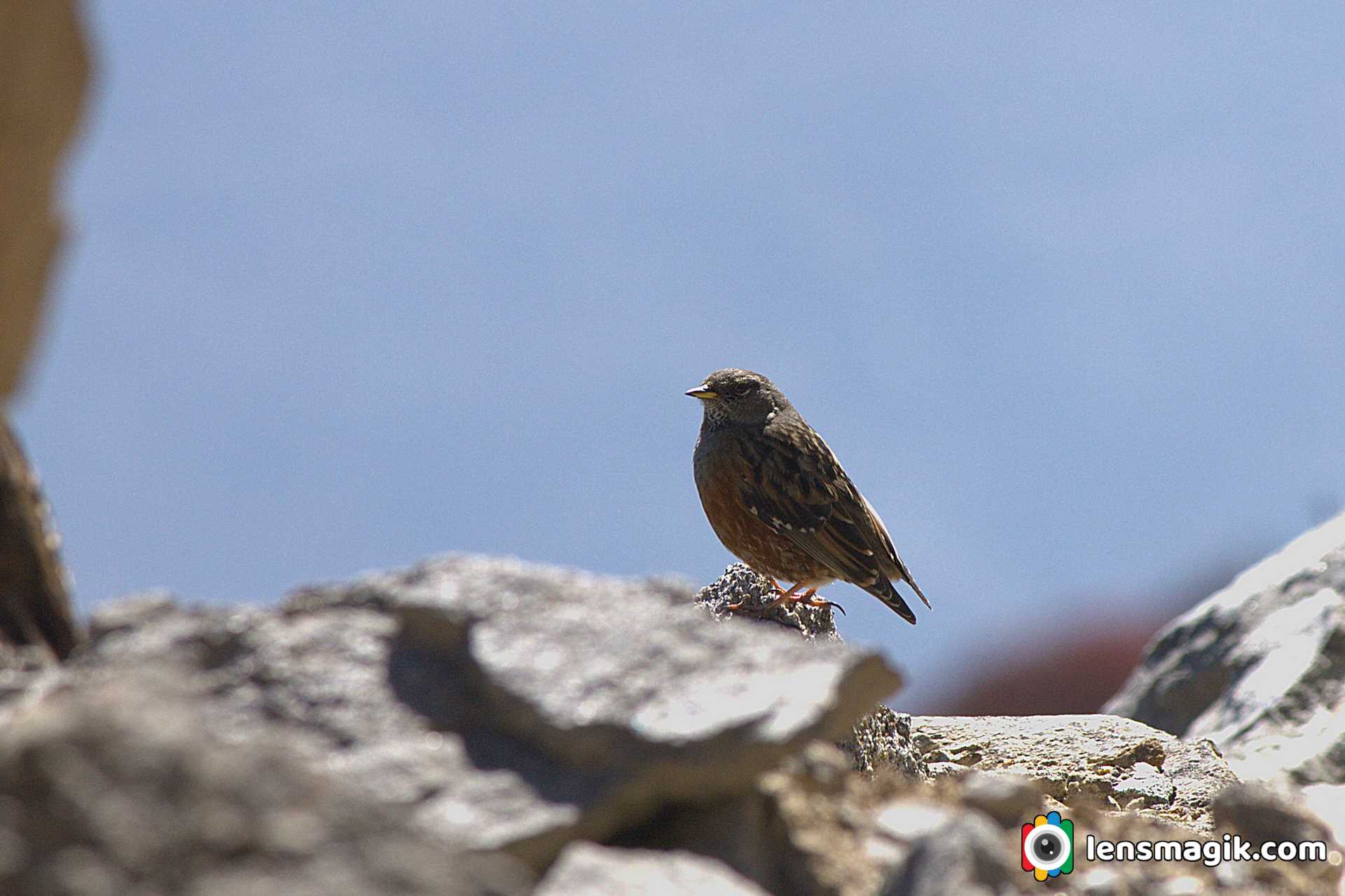
About Alpine Accentor Bird :
- Alpine Accentor bird is robin size bird. Length of bird is around 15 -17 cm.
- Bird just like similar to house sparrow in color with brown back streaked.
- Adult Alpine Accentor have red brown spotting on underparts
- Also adult have grey head too.
- In Asia Accentor found at 2000 m above height. Specially at Himalayas.
- It build nest in bush.
- It laying 3-4 plain (not spotted) eggs of sky blue color.
Singalila National Park :
Singalila national park is located in West Bengal. There are lots of birds in this sanctuary. Also its good for trekking at Sandakphu. From here you can see Mt. Kanchenjunga easily and very closely. Also a beautiful Himalayan Mountain range with snow. Amazing weather very cold in winter and moderate in summer. Summer season is the best for birding at sandakphu.
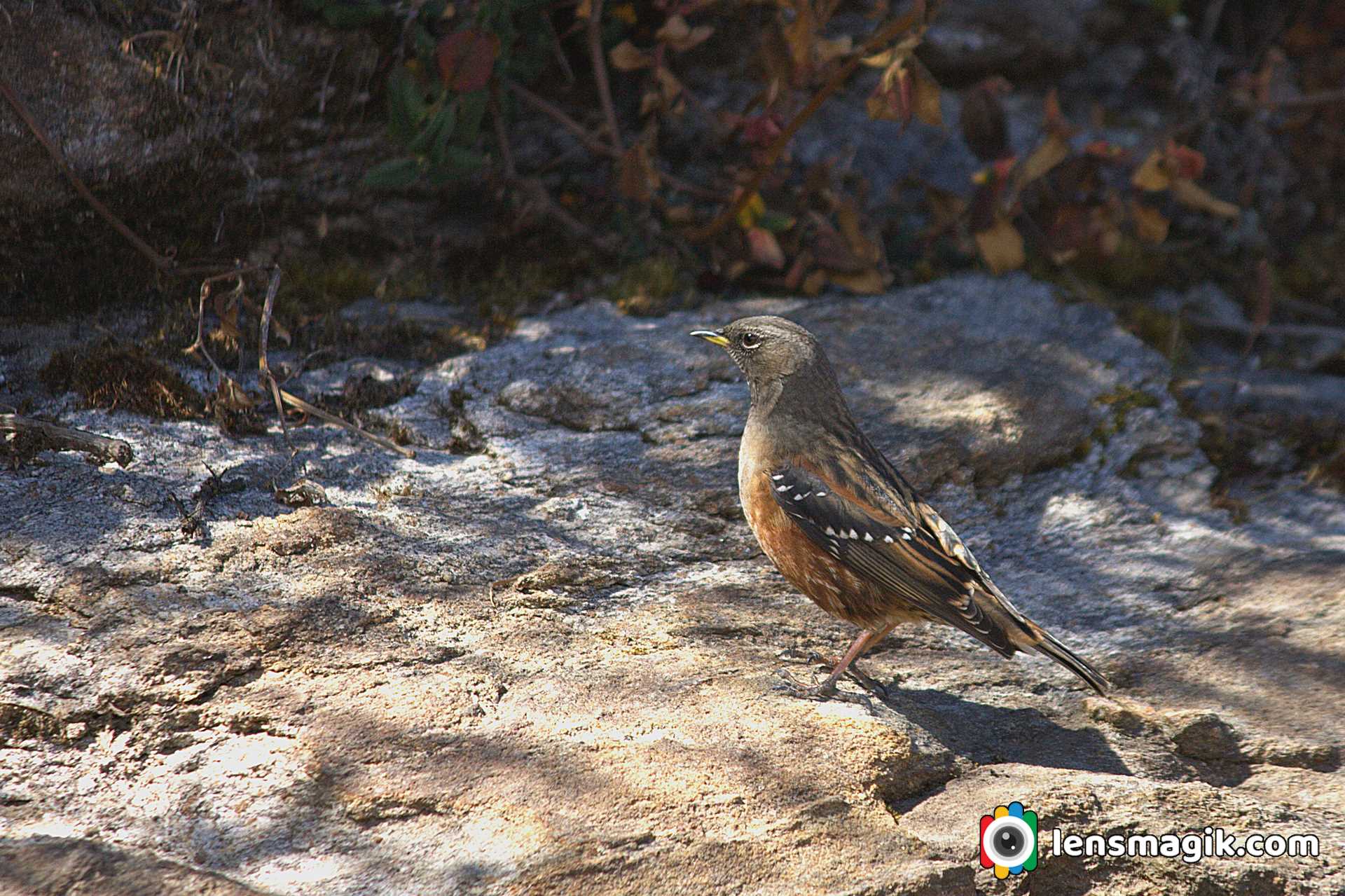
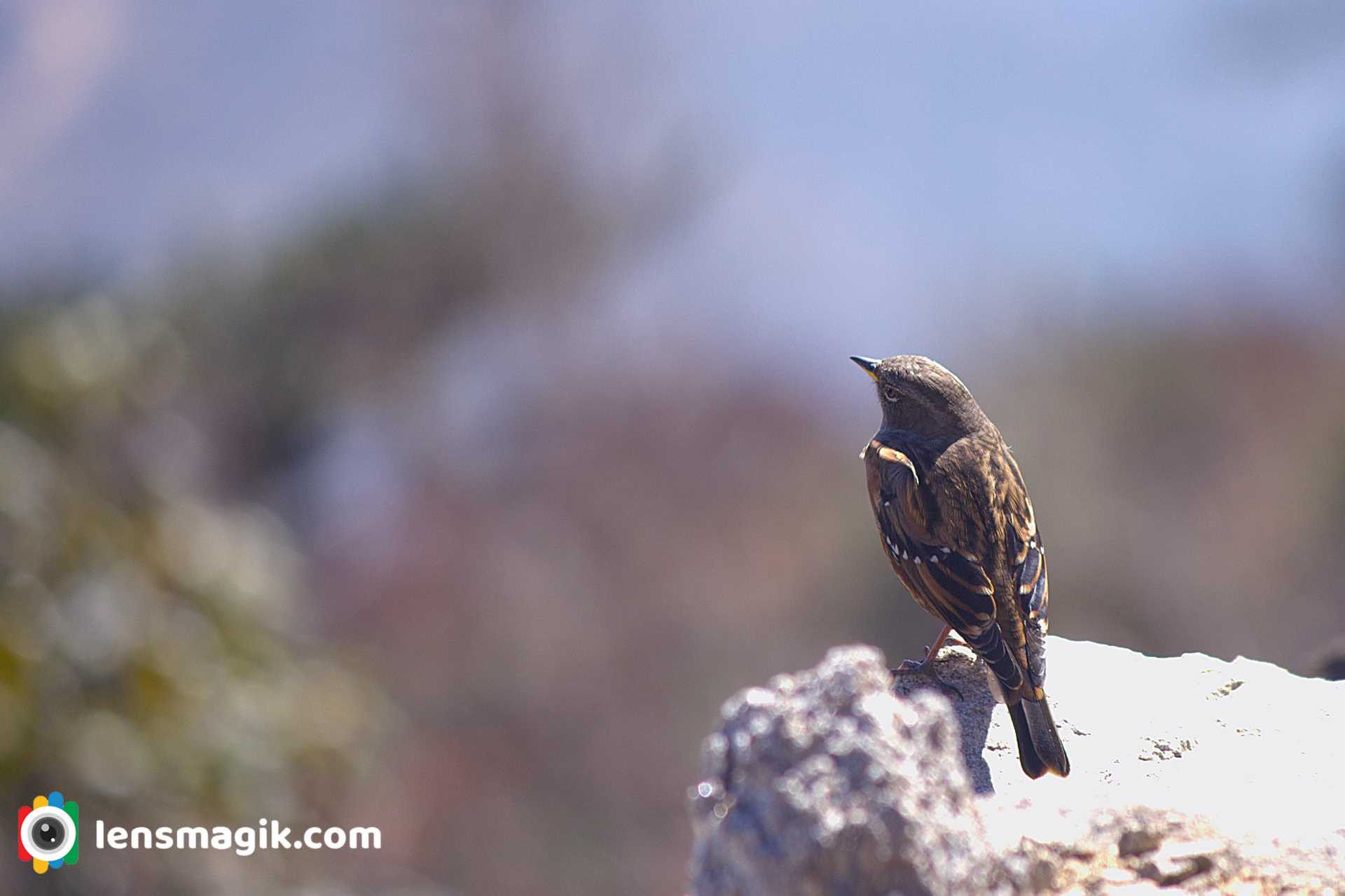
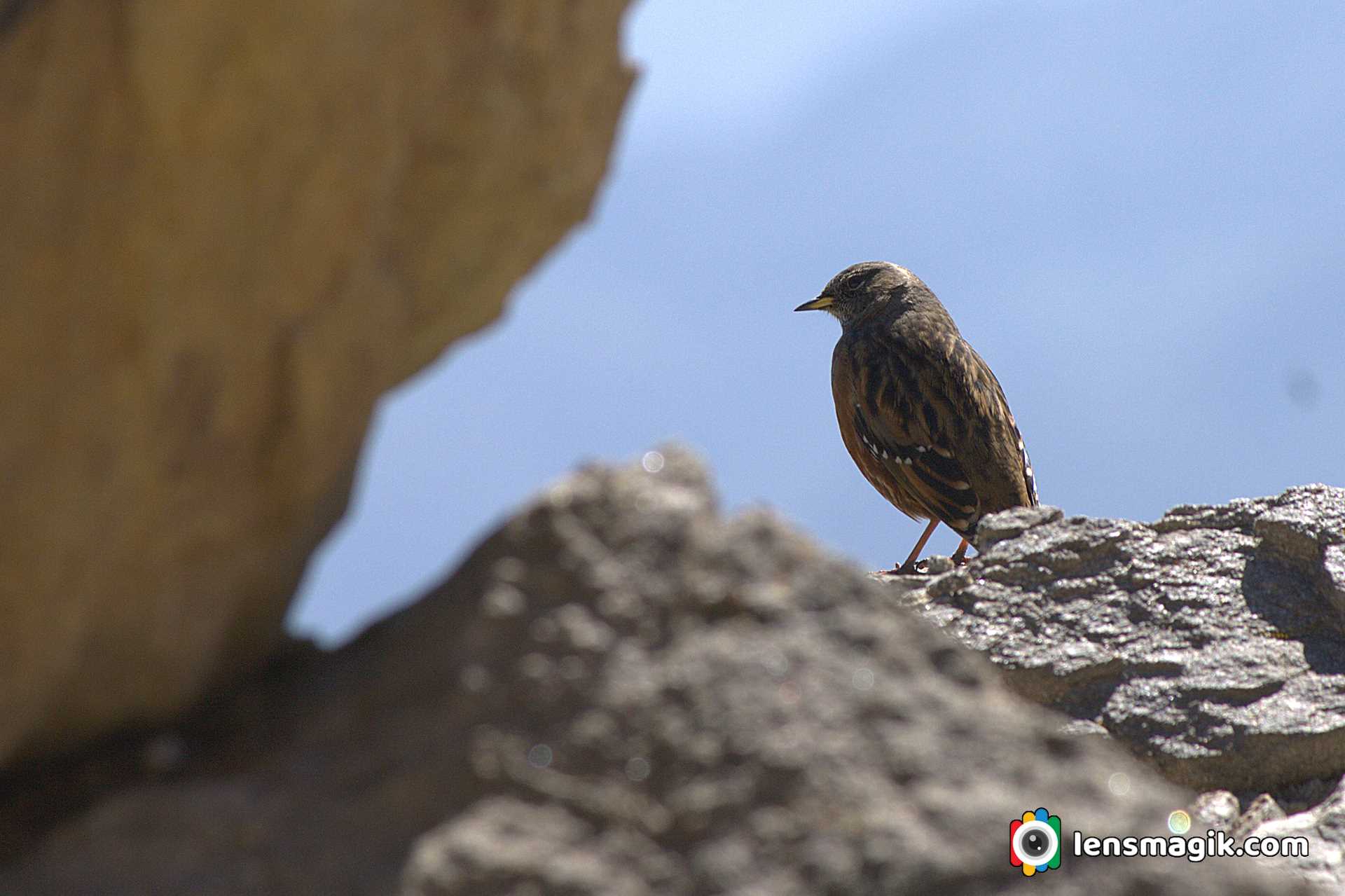
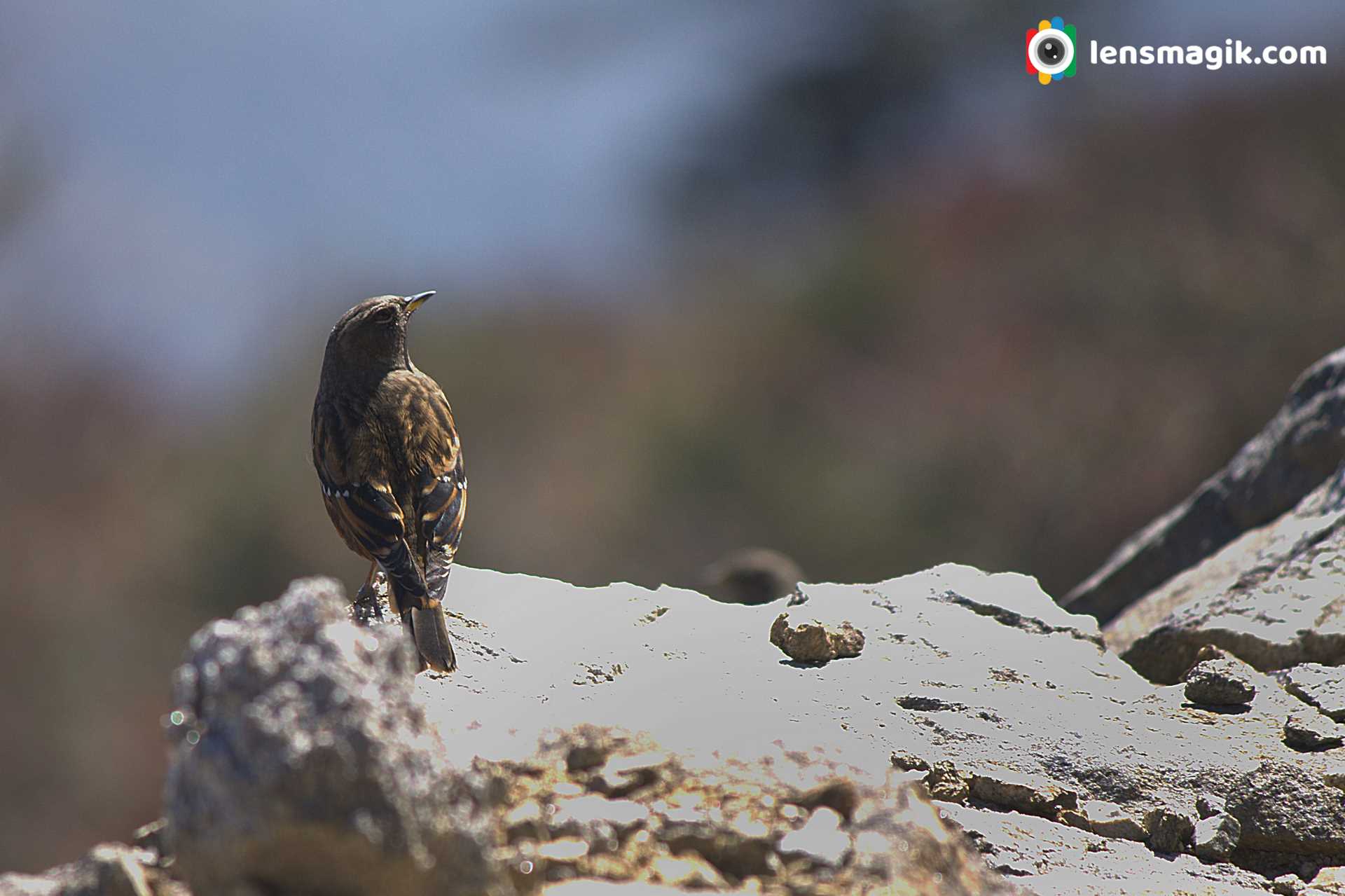
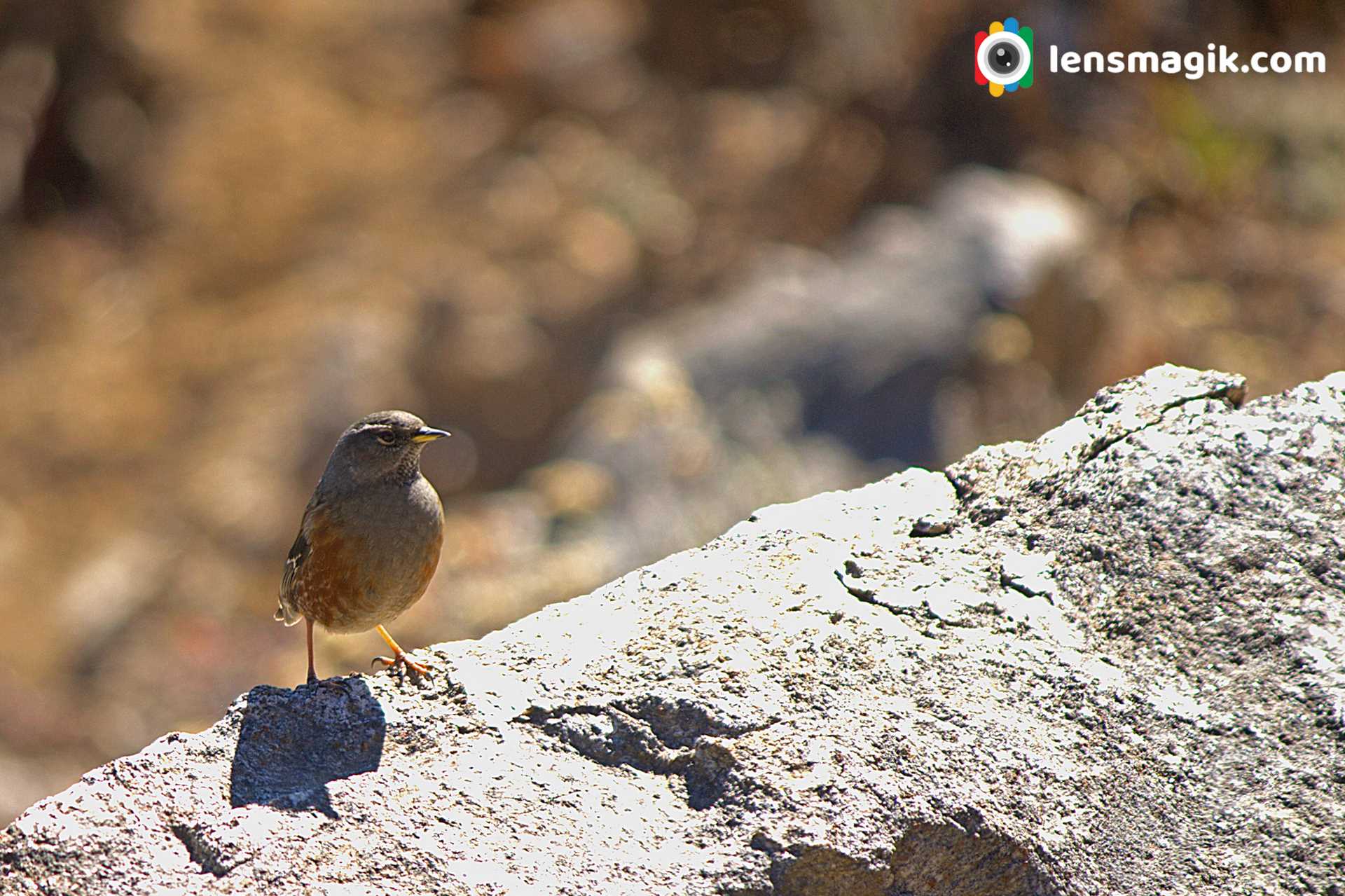
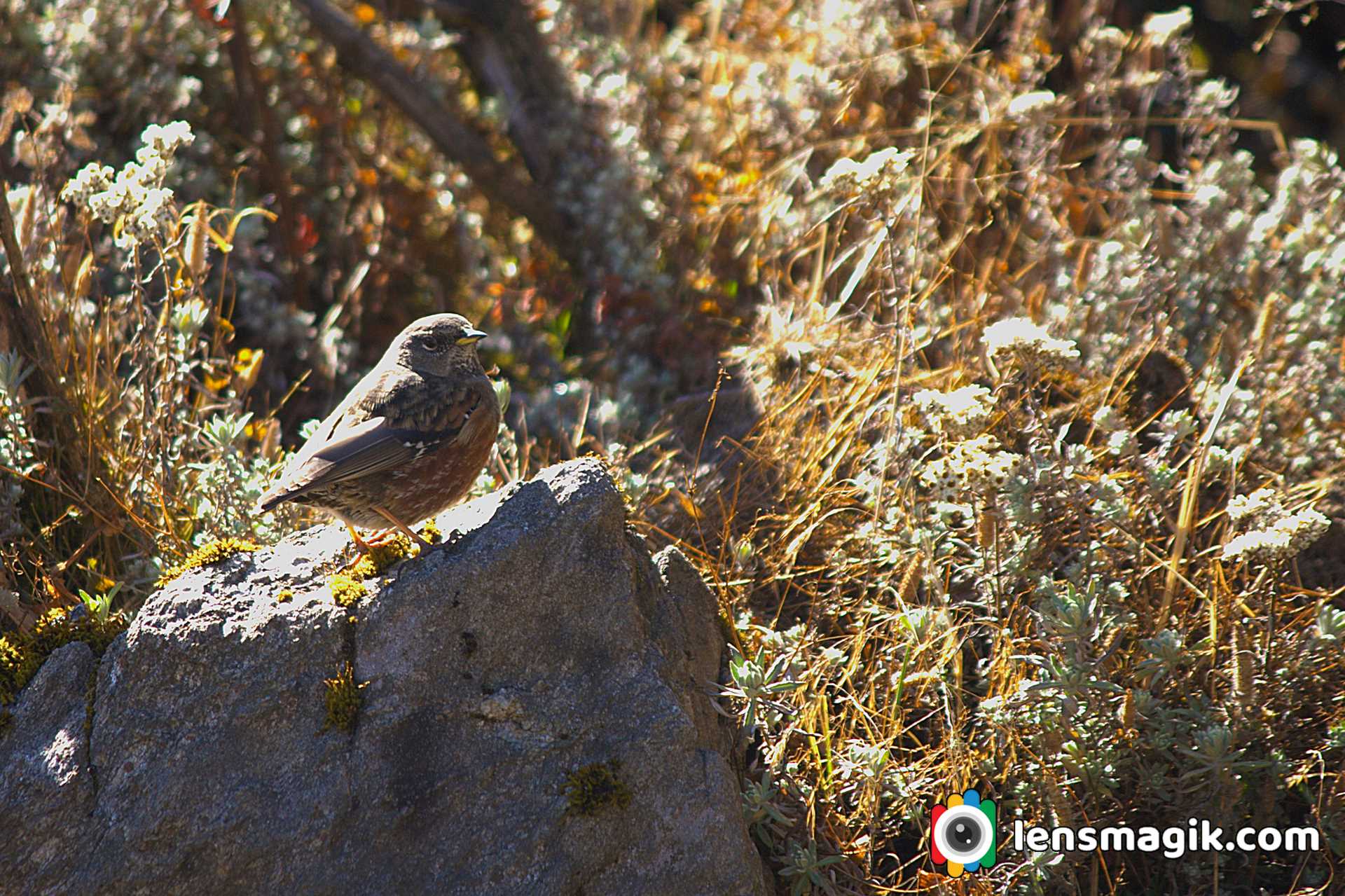
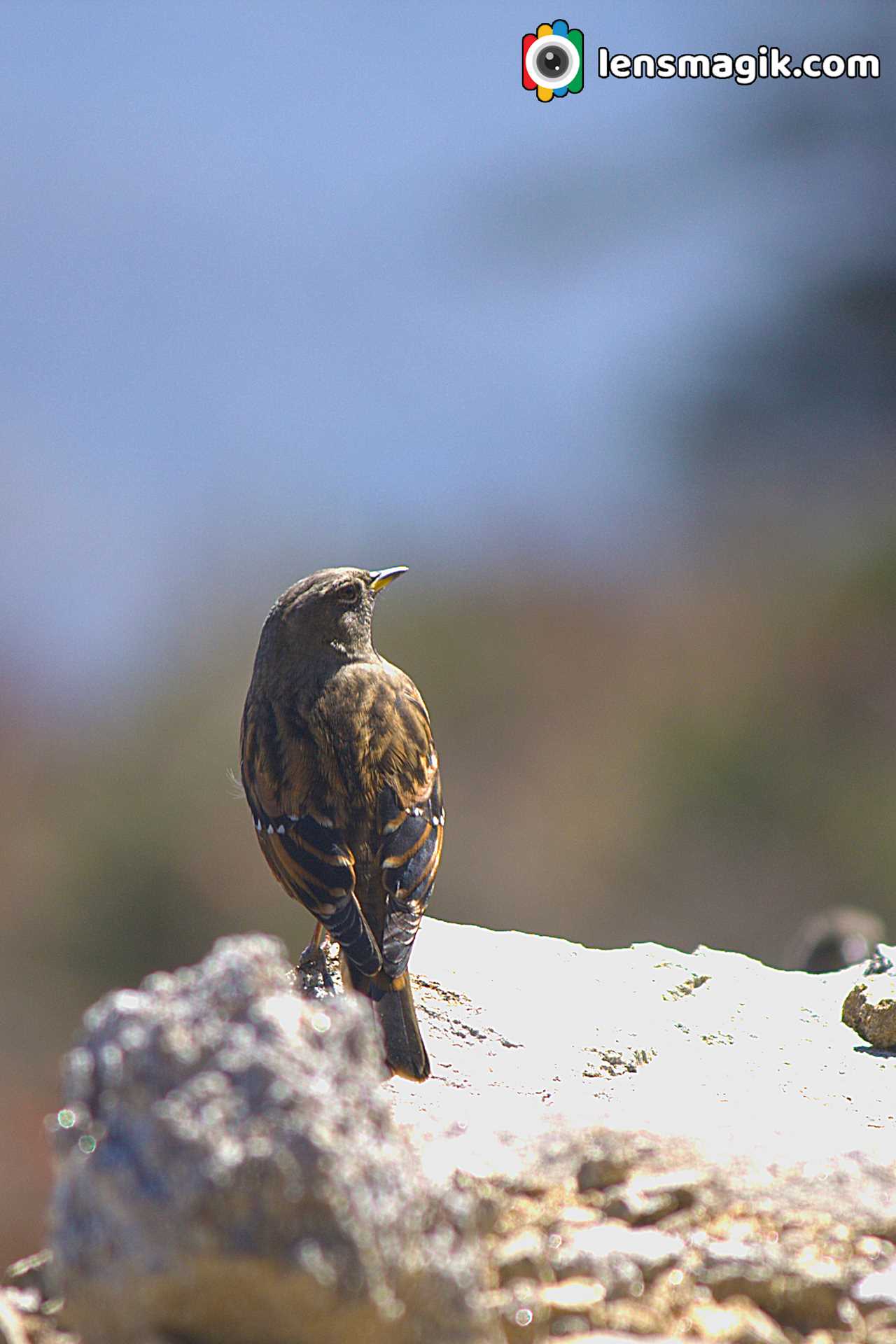
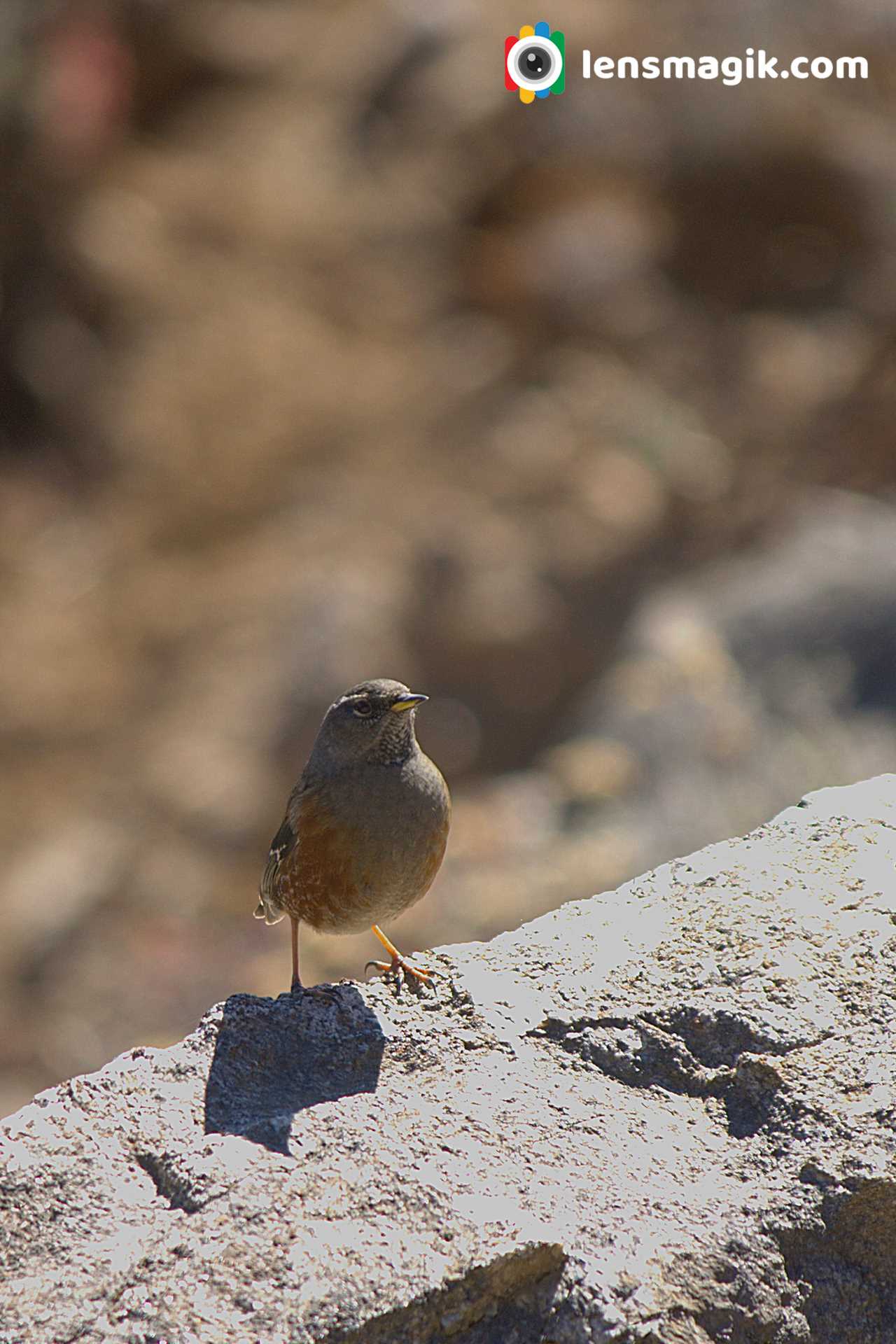
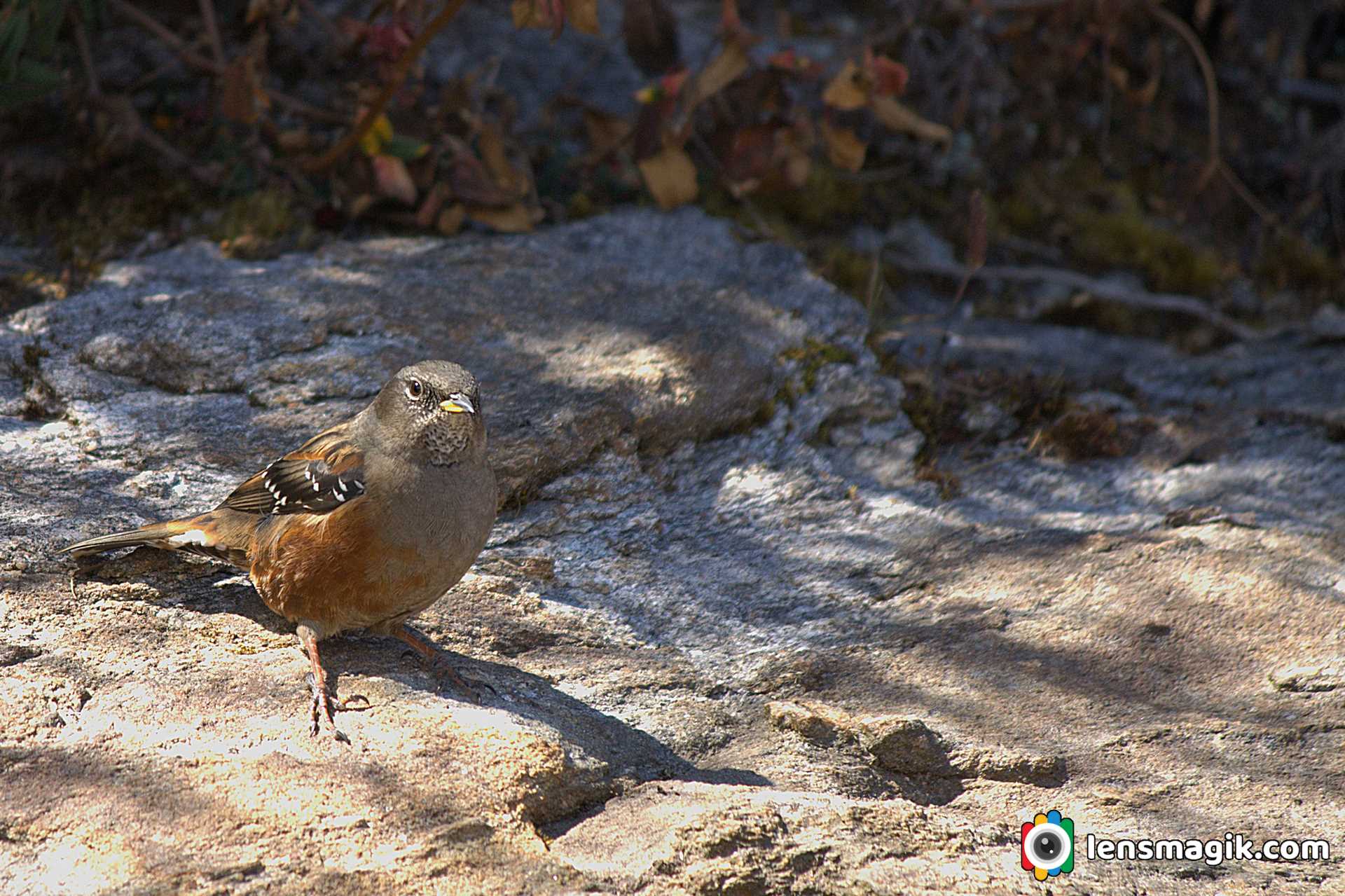
Alpine Accentor bird Binominal Name is Prunella Collaris . Total 9 subspices are recognised of Alpine Accentor bird.
Gear used : Canon 1000 D, Canon 55-250 mm Lens.
Road To Heaven is named to the road from Khavda to Dholavira in Kutch Gujarat. The road is so wonderful and scenery so it known as Road to Heaven . Khavda to Dholavira distance is around 58km but from Khavda there is a single line narrow road passes through small villages around 15-20 km approx. The main road starts after it and it is around 30-35 km approx. strait to Dholavira. Road is under constriction but almost 70-80% work done. The road heading to the city of Harappan Civilization Dholavira which is one of the largest site of Harappan Civilization and Indus valley Civilization.
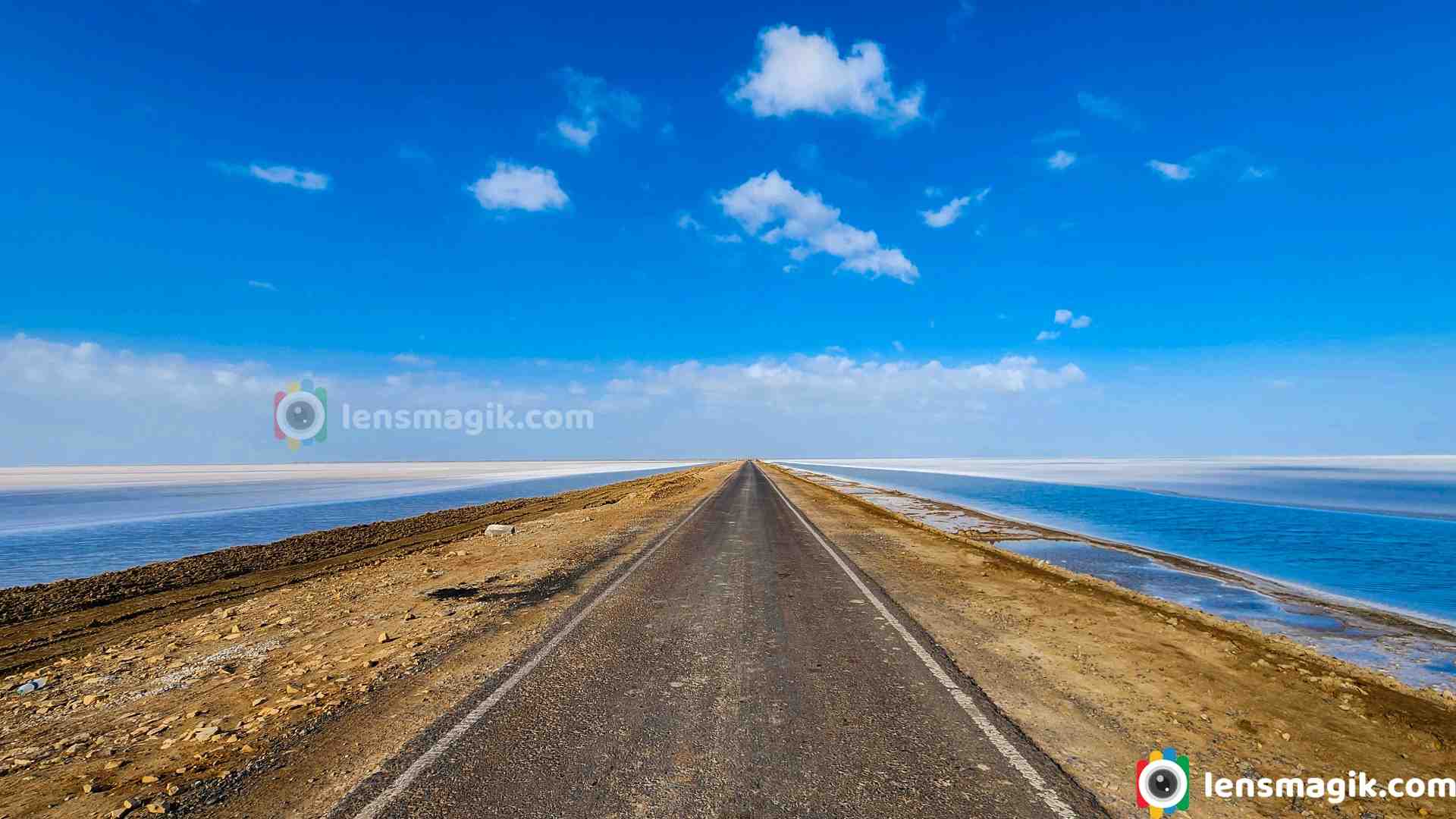
Kutch is a largest district of Gujarat and also of India. Main City or Headquarter of Kutch District is Bhuj. Kutch is famous for White Desert or White Rann. In Every winter season from December to February celebrate “ Rann Utsav “ to attract foreigners and also locals. Tent City made in white desert to stay and also cultural programs arranged in it. The main Rann Utsav held in Dhordo of Kutch.
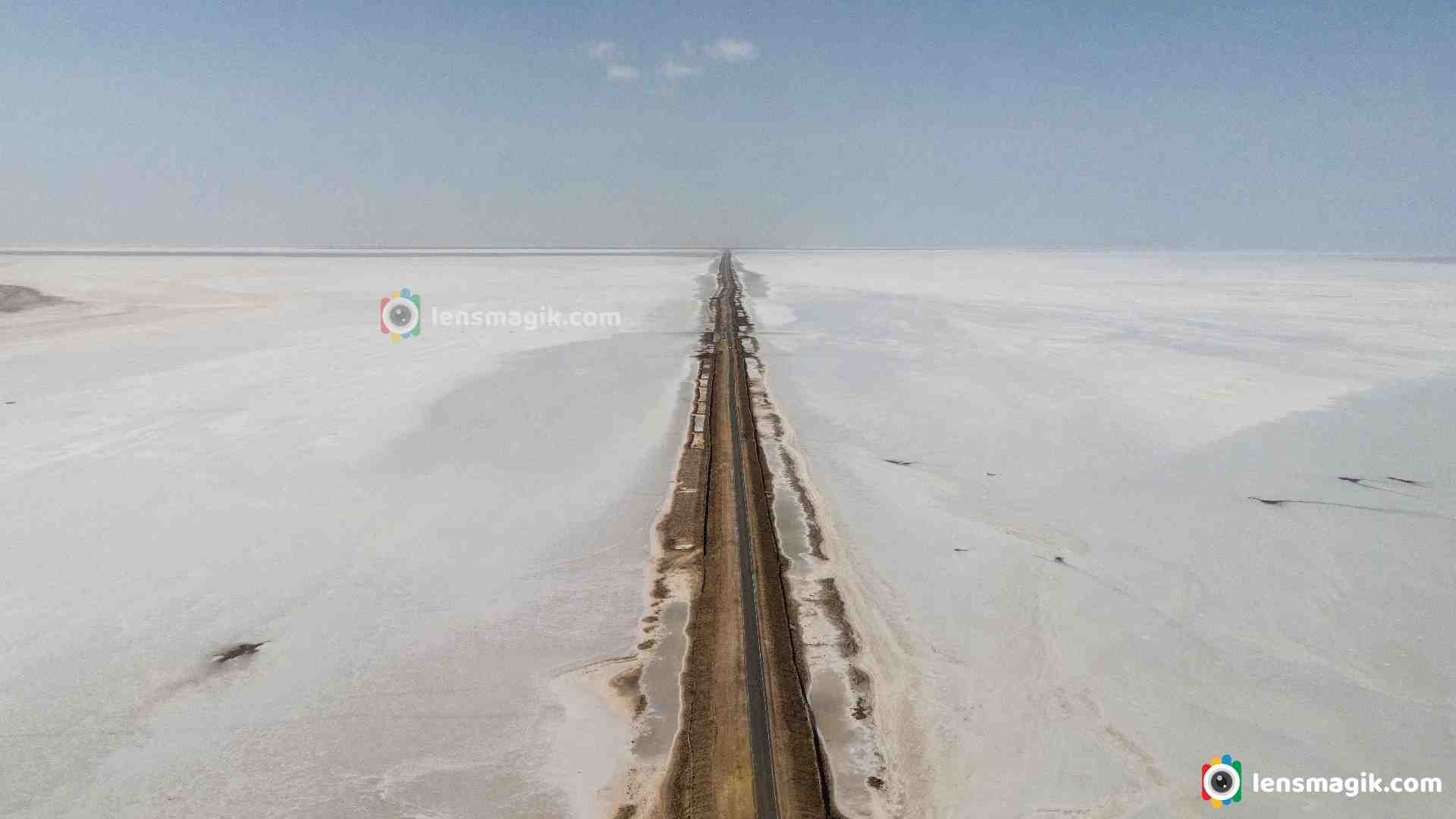
After visit White desert people also visit Dholavira which is nearest destination from Dhordo and also Kalo Dungar in between. From Dhordo you will have to go Khavda first and then from Khavda to Dholavira which is connected through “ Road To Heaven “. Dholavira is located at Khadir Bet. Khadir bet is separated because after monsoon the water filled outer side of bet. So the Road To Heaven is the way to connect Khadir bet to main city Bhuj.
About Road To Heaven Dholavira / Road to Heaven in Kutch :
- · It connected from Khavda to Dholavira.
- · Road to heaven distance around 30-35 km.
- · After monsoon the rain water on the both side of the road. You can see beautiful Greater Flamingo birds in between. Water level is low but muddy.
- · After winter in January –February the water on both side of the road is evaporated and turn into salt. Not all water but some areas during the road.
- · Water on the both side of the road or Salt/ white layer on both side of the road make the beauty of the road and that’s why it name as “ Road To Heaven “
- · When you are on the road there is hardly some traffic you face the open road with both side water or salt at morning or evening make the scenery like a Heaven.
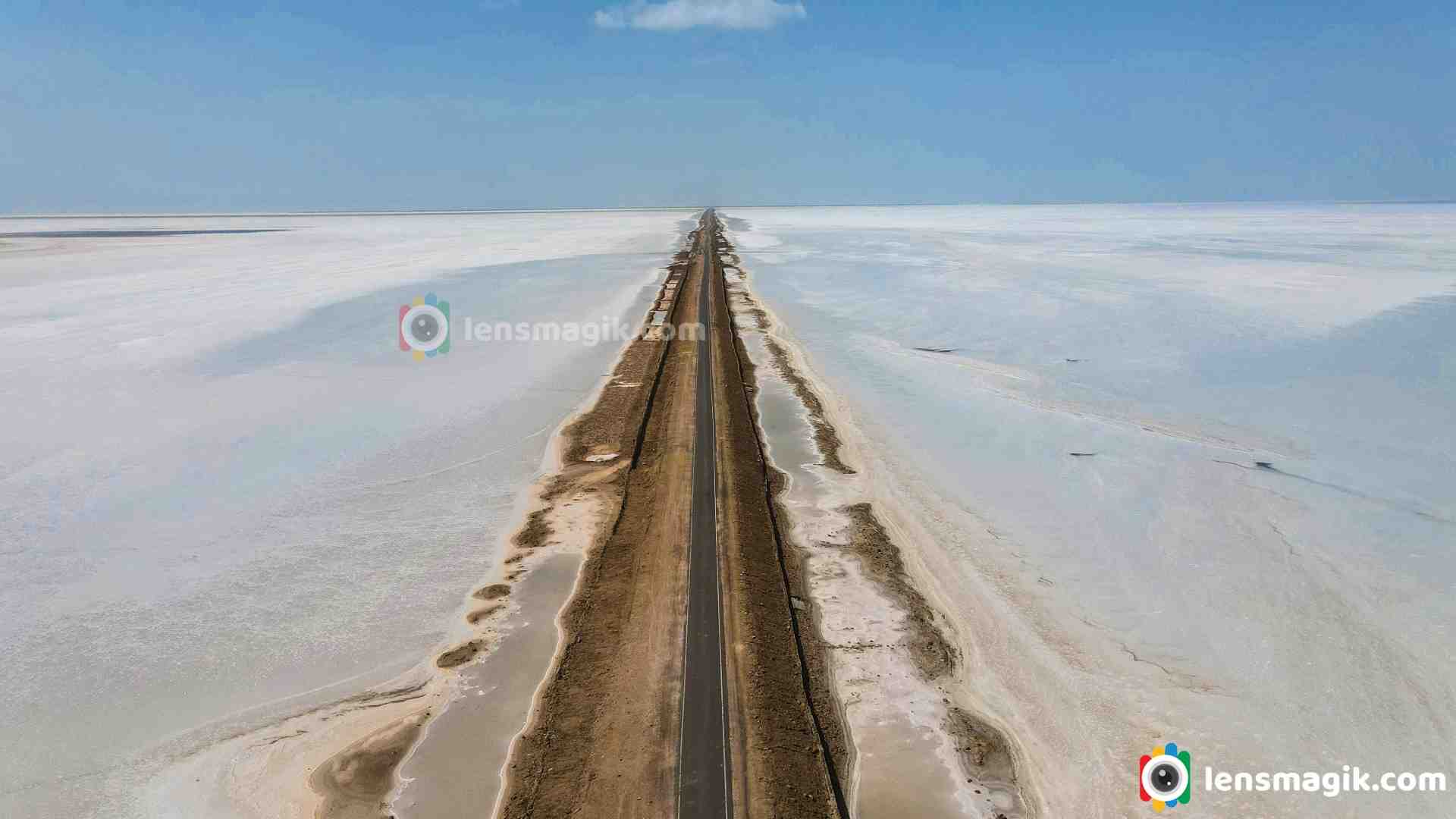
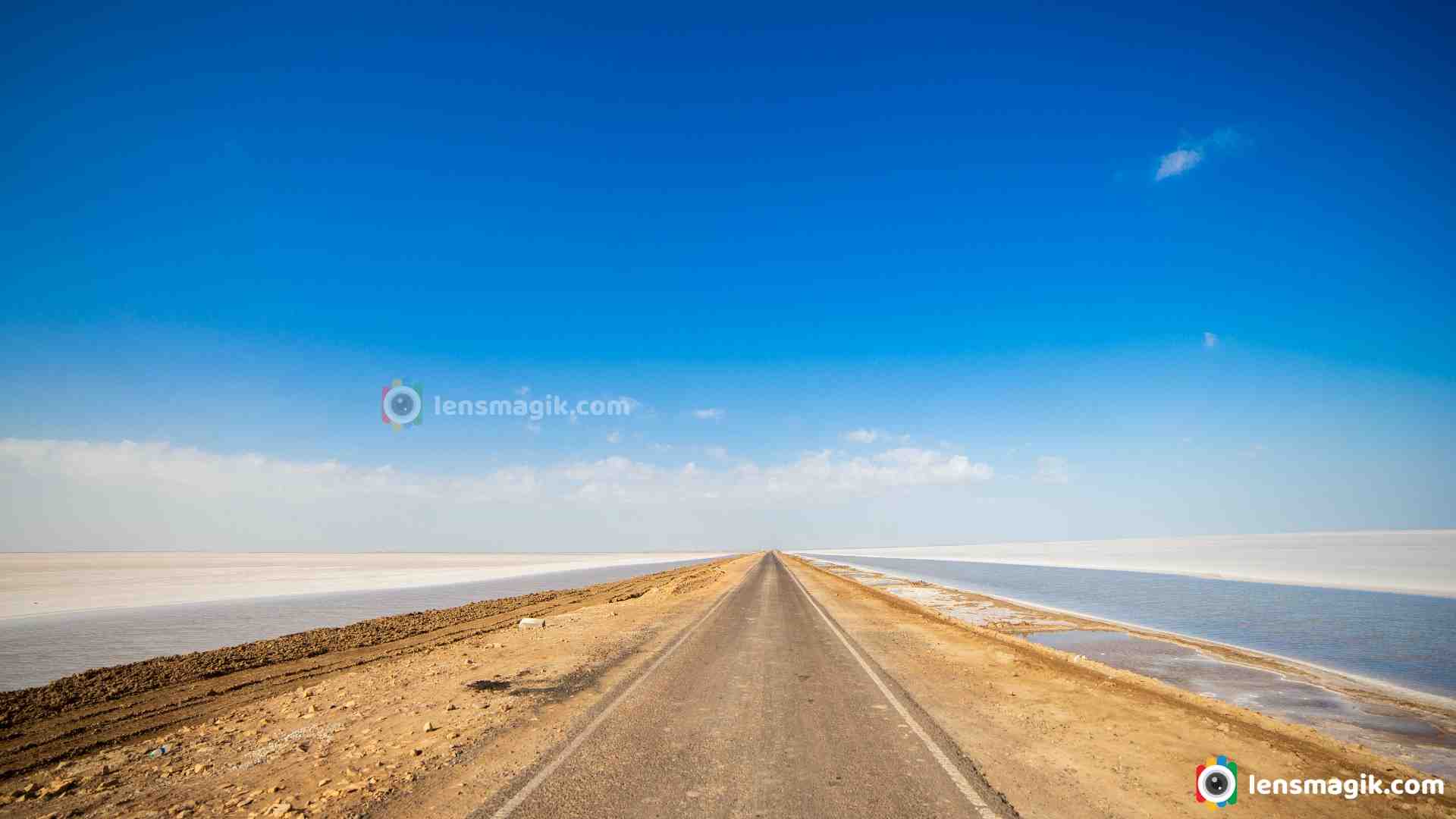
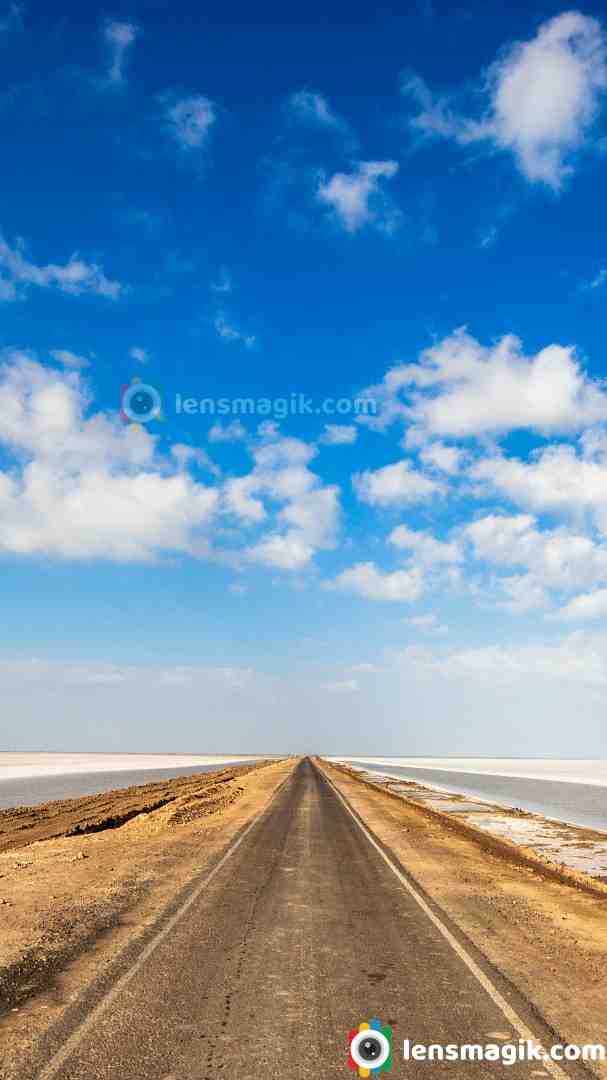
I must suggest to visit Road To Heaven in Kutch while you visit Kutch. Also Visit Dholavira which is one of the largest Harappan Civilization site.
Places to visit near Road To Heaven :
Dholavira, Kalo Dungar, Dhordo, White Desert
Places to Visit near Bhuj : White Desert , Kadiya dhro, Chhatardi, Mandvi beach, Vijay vilas palace, Bhujyo Dungar, Smriti Van, Vande matram memorial
Camera Used : Canon 80D, Canon 6D, DJI Mavic Air2
It is the largest species of Flamingo bird family and also a most widespread species of flamingo family.It is found in India ,south east , middle east and Africa. It is migratory bird. They also breed in India. In Gujarat they breed in Rann Of Kutch , Little Rann of Kutch also found in Thol Bird Sanctuary. I often visit Thol sanctuary so got good shots of them. Best time for shoot them is may-Jun at Thol bird sanctuary bcz of water level is too low . It is been recorded that some flamingo birds are resident in Gujarat at many places like LRK, Khijadia sanctuary, Nalsarovar and Thol Sanctuary. They also breed here and stay for all seasons. So you can find greater flamingo birds in all seasons in Gujarat at many places.
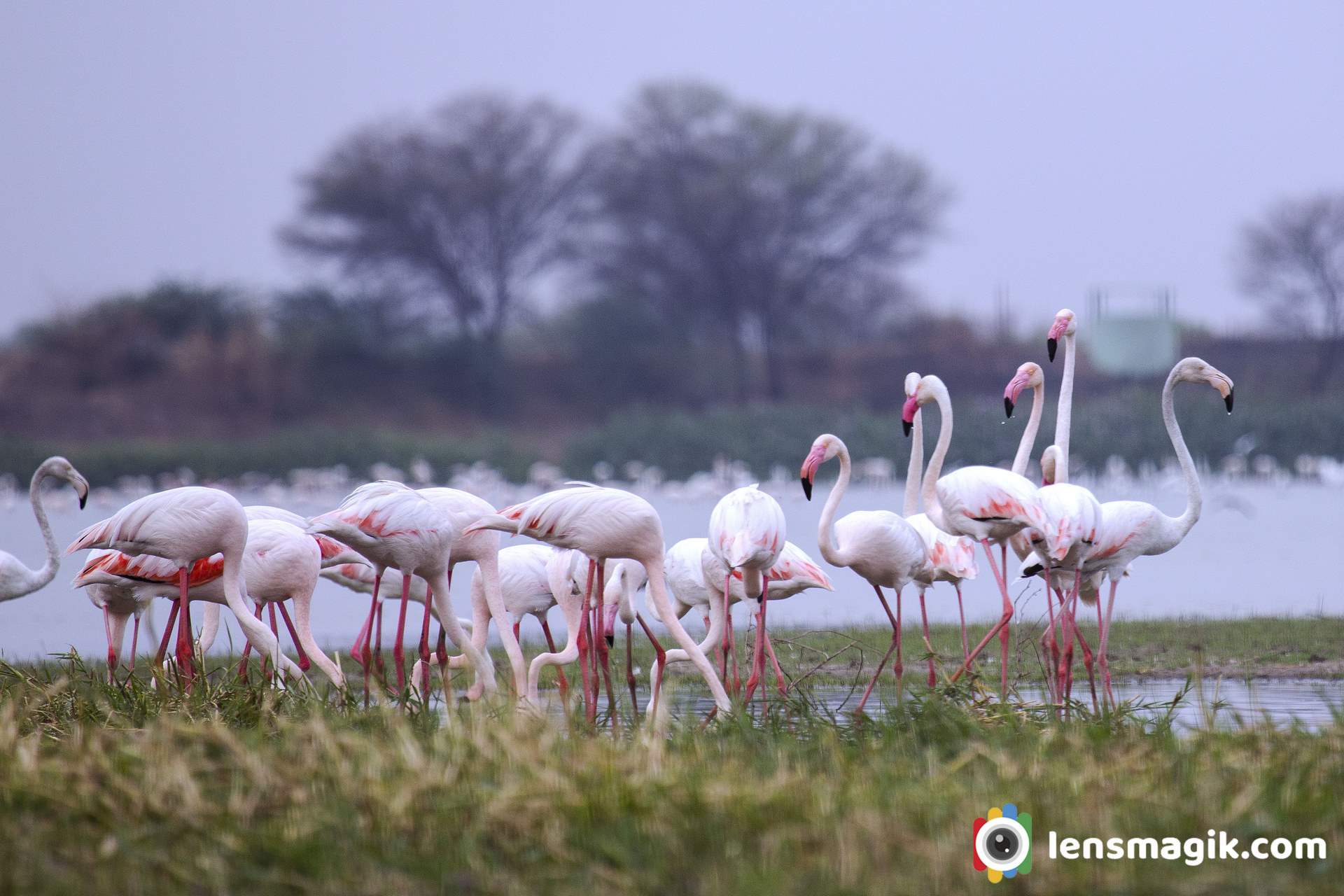
Flamingo bird facts and description :
- Greater flamingo bird is the largest living spices of flamingo.
- Greater flamingo has no subspices.
- Flamingo color most of pinkish white in plumage. Wings are red and feathers are black in end.
- Greater Flamingo bird call is like honking.
- The average lifespan of flamingo bird is 30-40 years.
- Main Difference between Greater flamingo and lesser flamingo is height . Lesser flamingo is shorter than greater flamingo. Also Greater flamingo has pale pink bill and black tip. In other case lesser flamingo has dark crimson bill. Lesser flamingo is also more red in color than greater flamingos.
Greater Flamingo birds In Thol Lake : Thol sanctuary is often i visit. Flamingo birds are stay here all seasons. I got good numbers of Greater flamingo and lesser flamingo bird images in a group when i visit Thol. This is my best time with flamingos. Also i got some beautiful pictures of flamingo birds with group and also in duo with some masti. Flamingos looks very good in frame bcz of their color. Thol lake is good place for birders because more than 150 birds spices found here. Also some mammals like Blue bull and black buck also found here. Lots of water birds and tree birds found here. Also sanctuary is not so big so you can find all birds in around 6 sqkm area. Best time to visit thol lake is November to March. All migratory birds are visit in winter so that is best time. Early morning is best for birders.
Timing And Fees of Thol Sanctuary :
Thol Sanctuary open at 6 AM in morning and close at around 5 PM
Fees of Thol Sanctuary is 50 INR per person and camera fees are 200 INR. Car fees are 500 INR.
Weekend fees may change that actually i don't know about it.
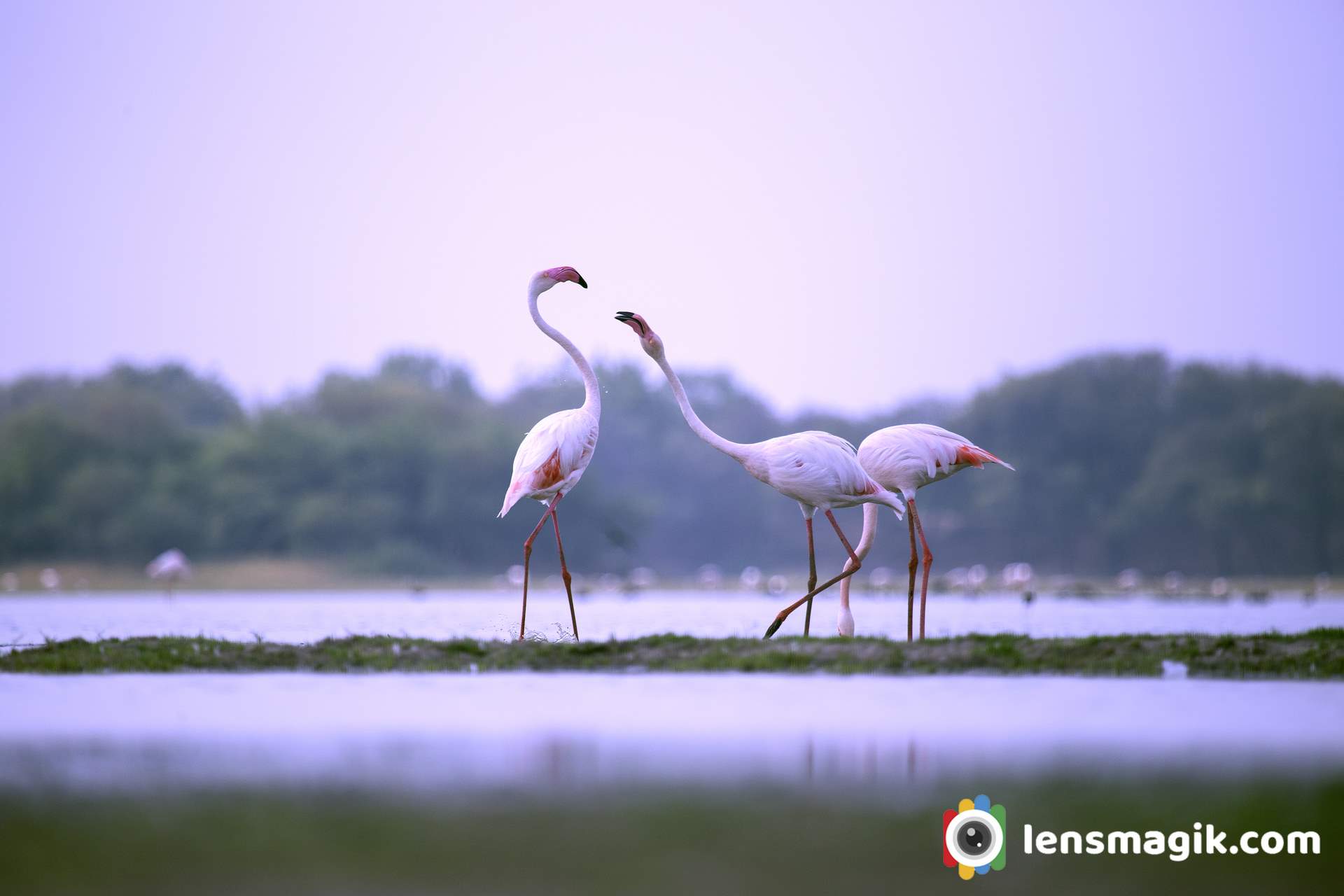
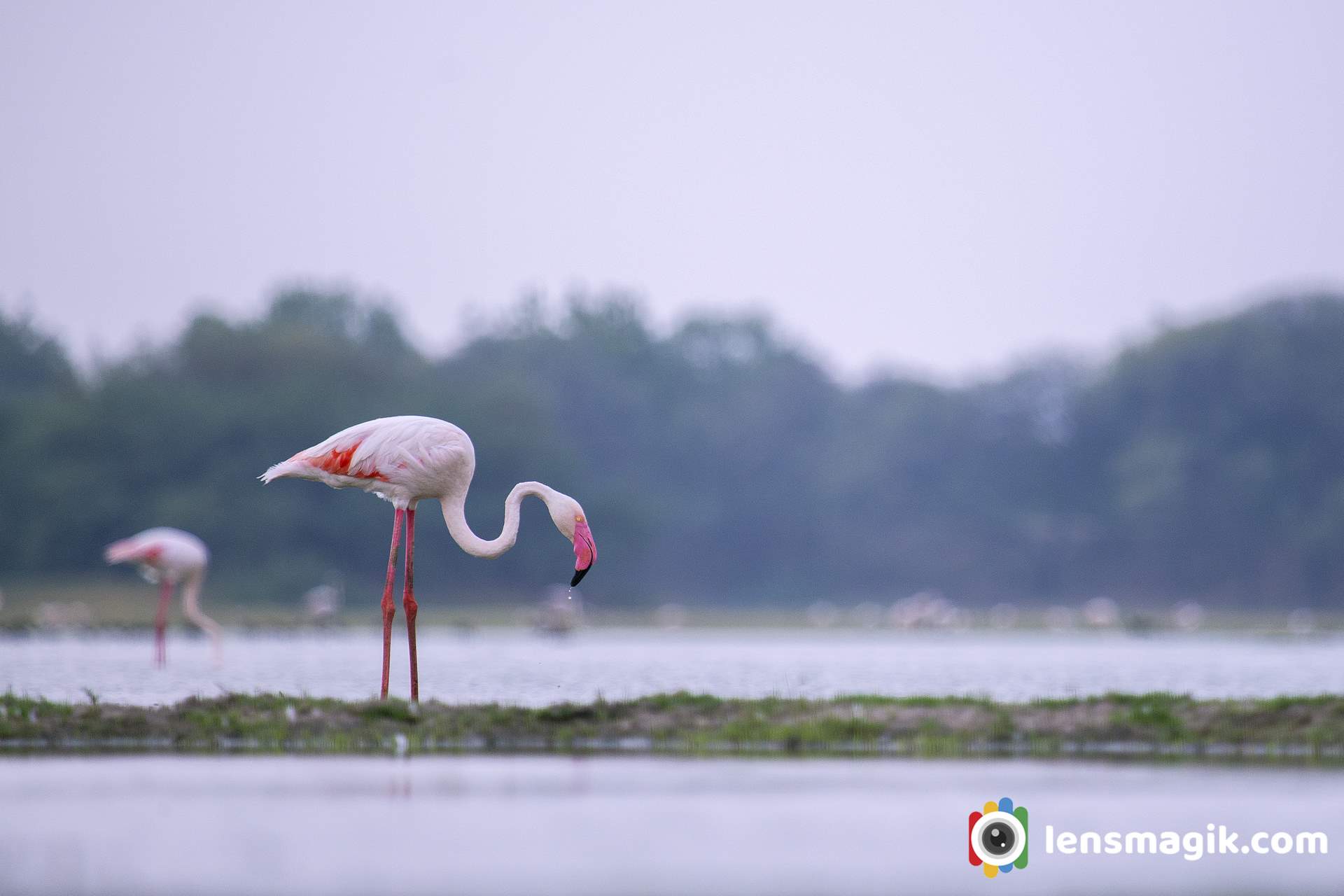
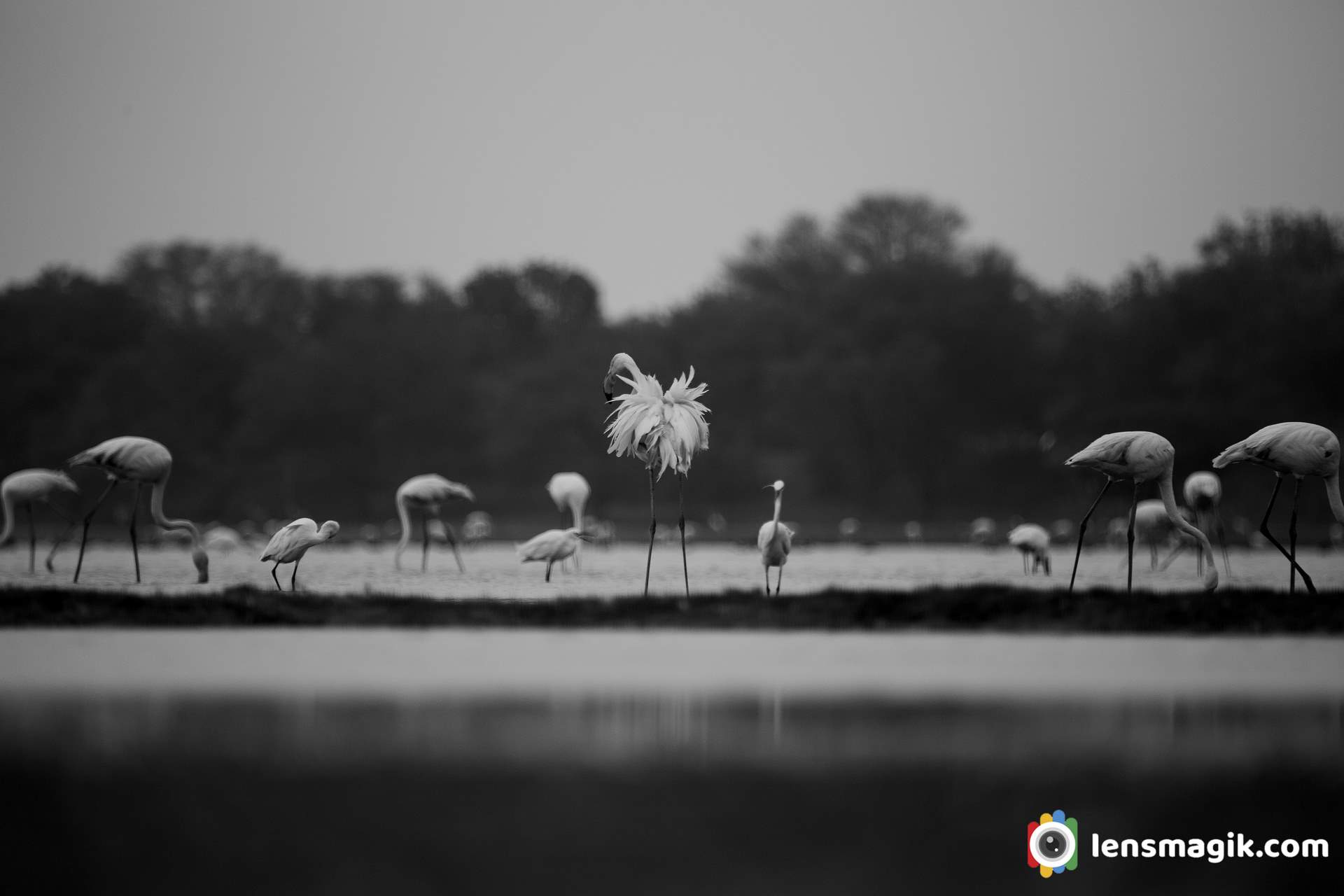
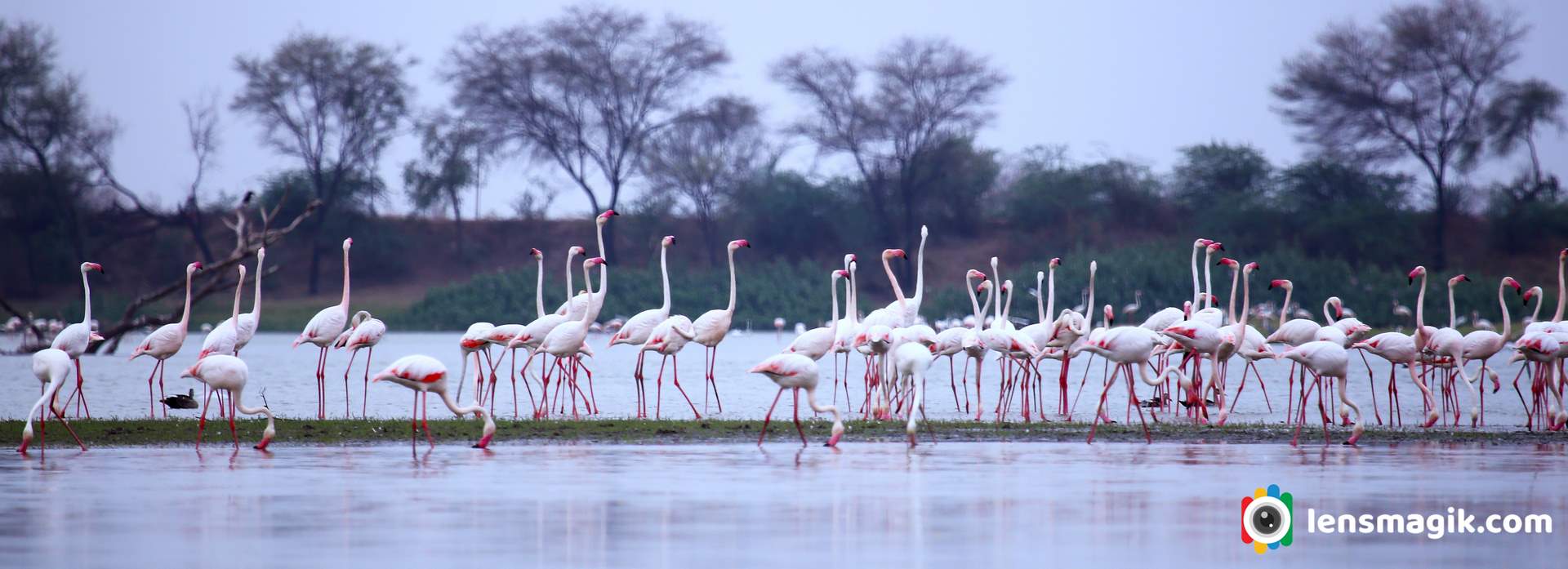
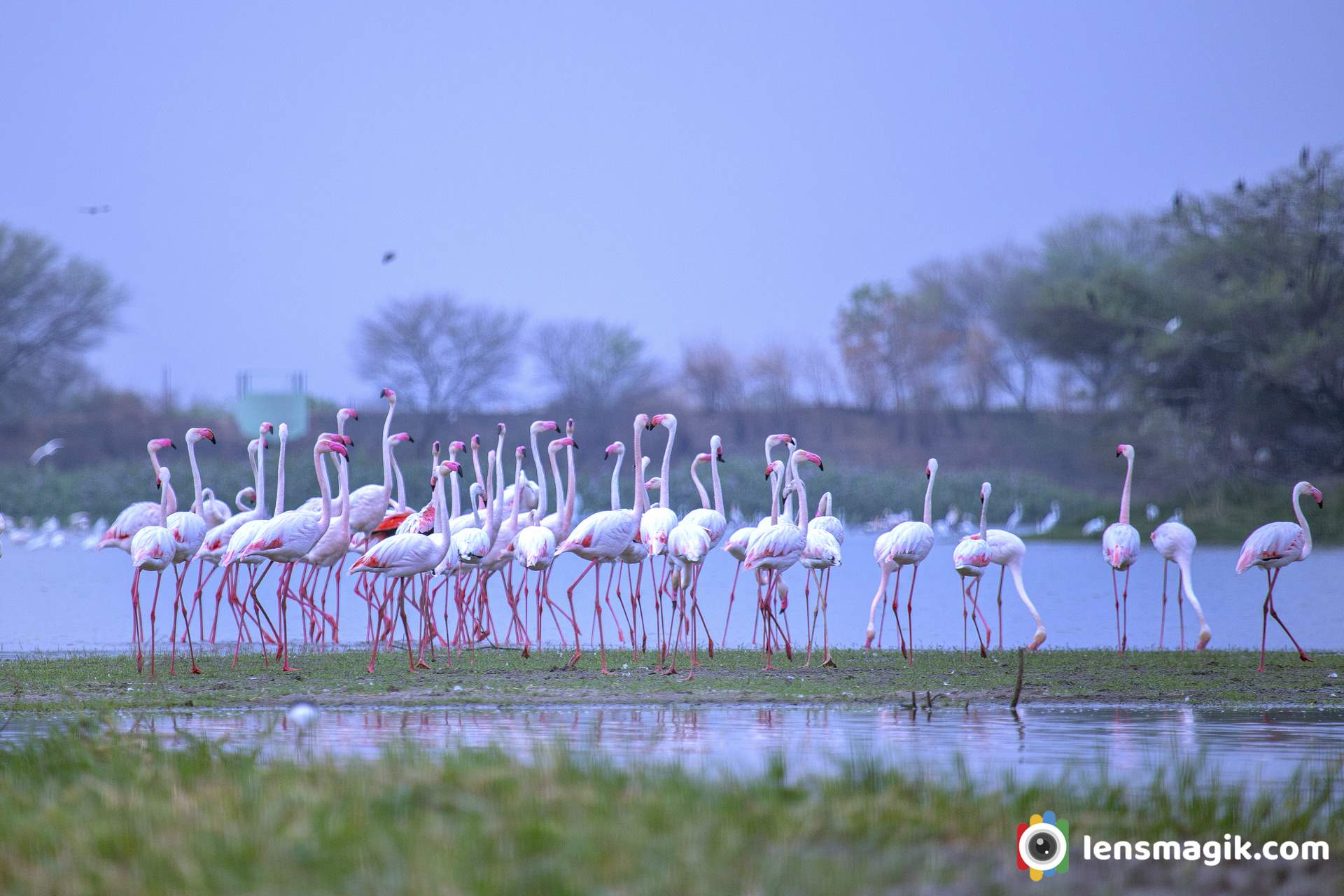
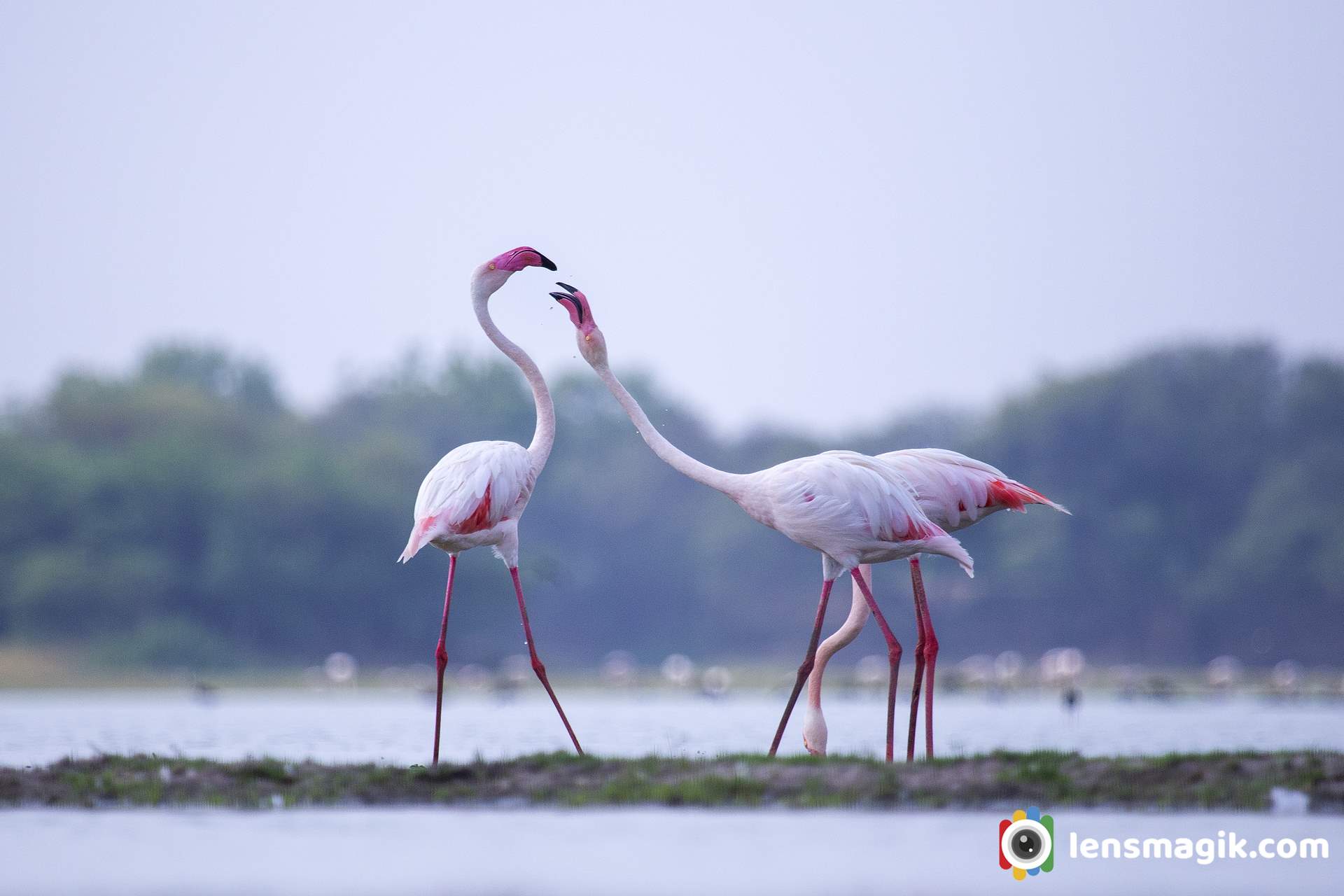
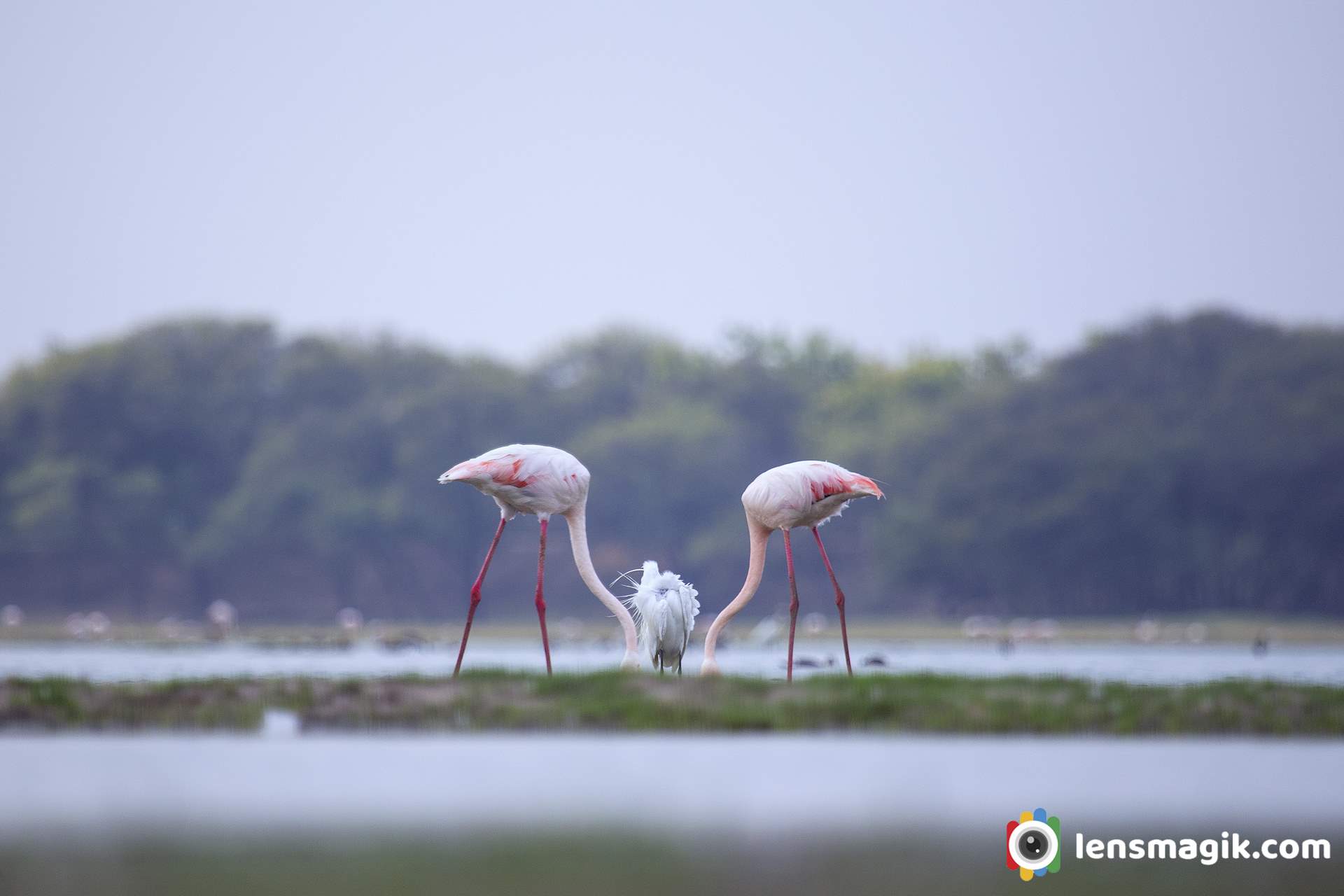
Two flamingos with little egret in between of them with down head all. The images of flamingo bird making a good frame. Because of its color flamingo birds images are very attractive and also their grouping make a perfect frame of flamingo bird picture.
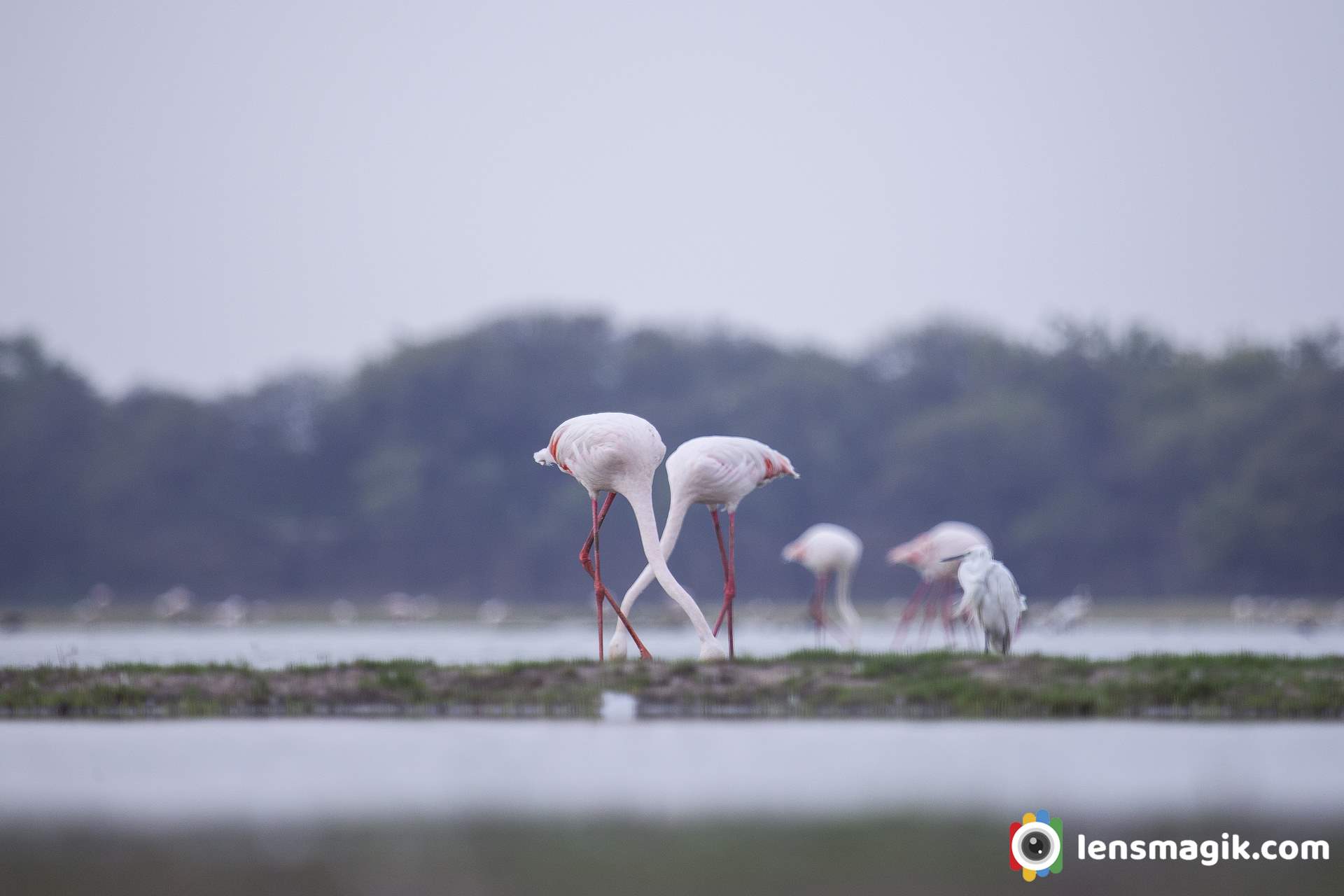
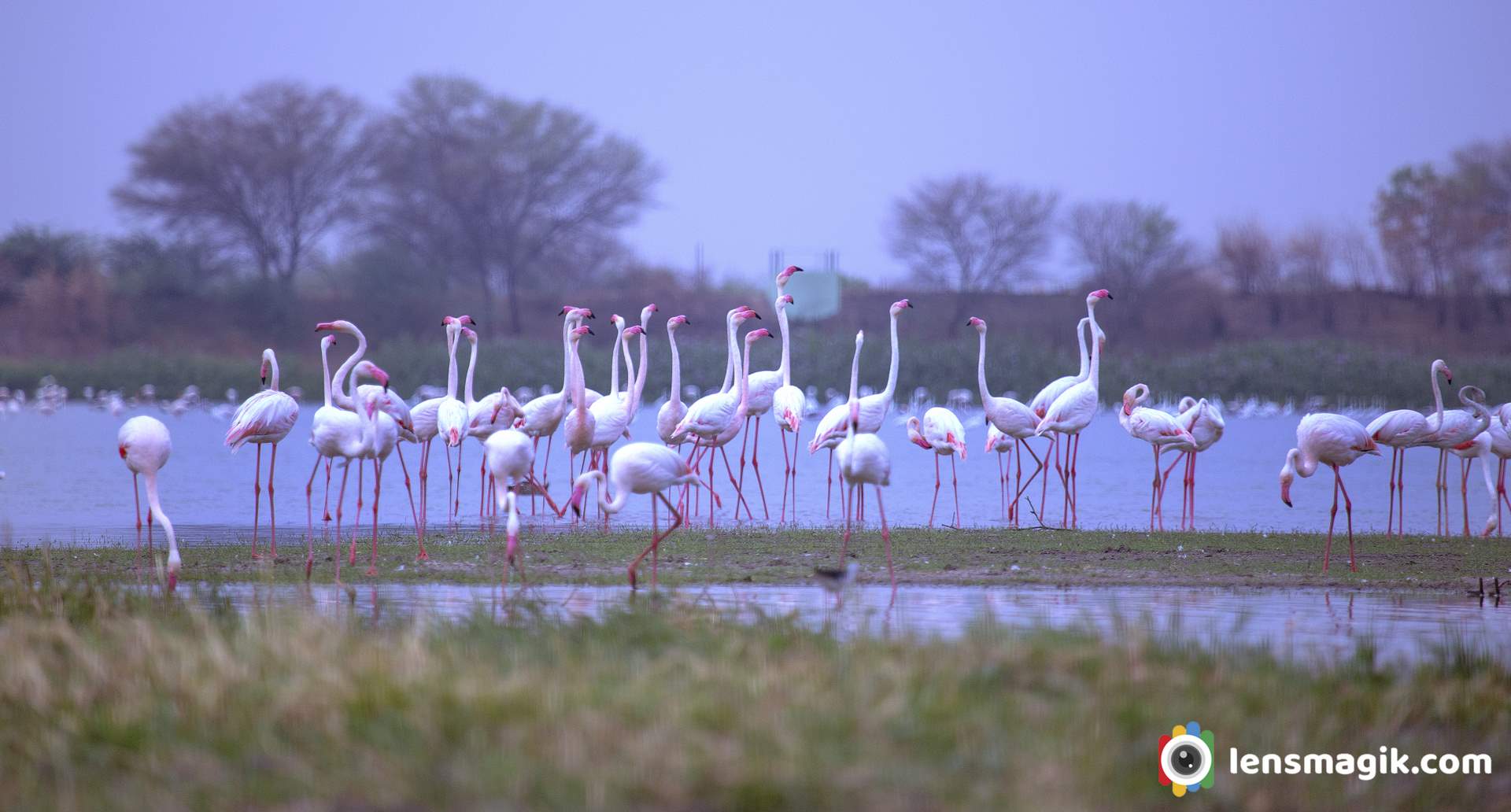
A morning pared time for flamingo birds. A beautiful Greater flamingo birds are in a raw make image nice and show their unity.
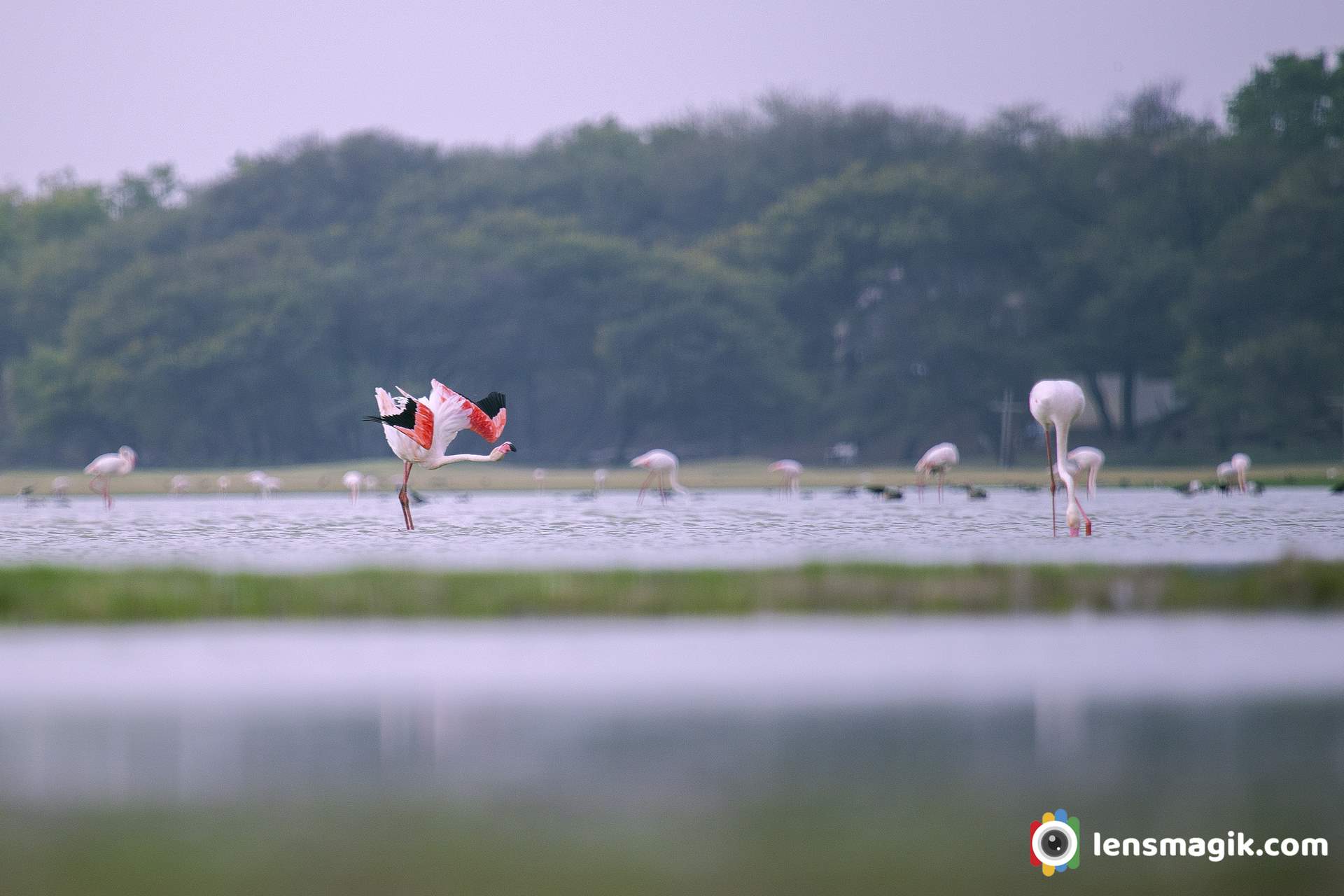
Perfact wingspan of Flamingo bird looks great. Pink Wings make image more attractive.
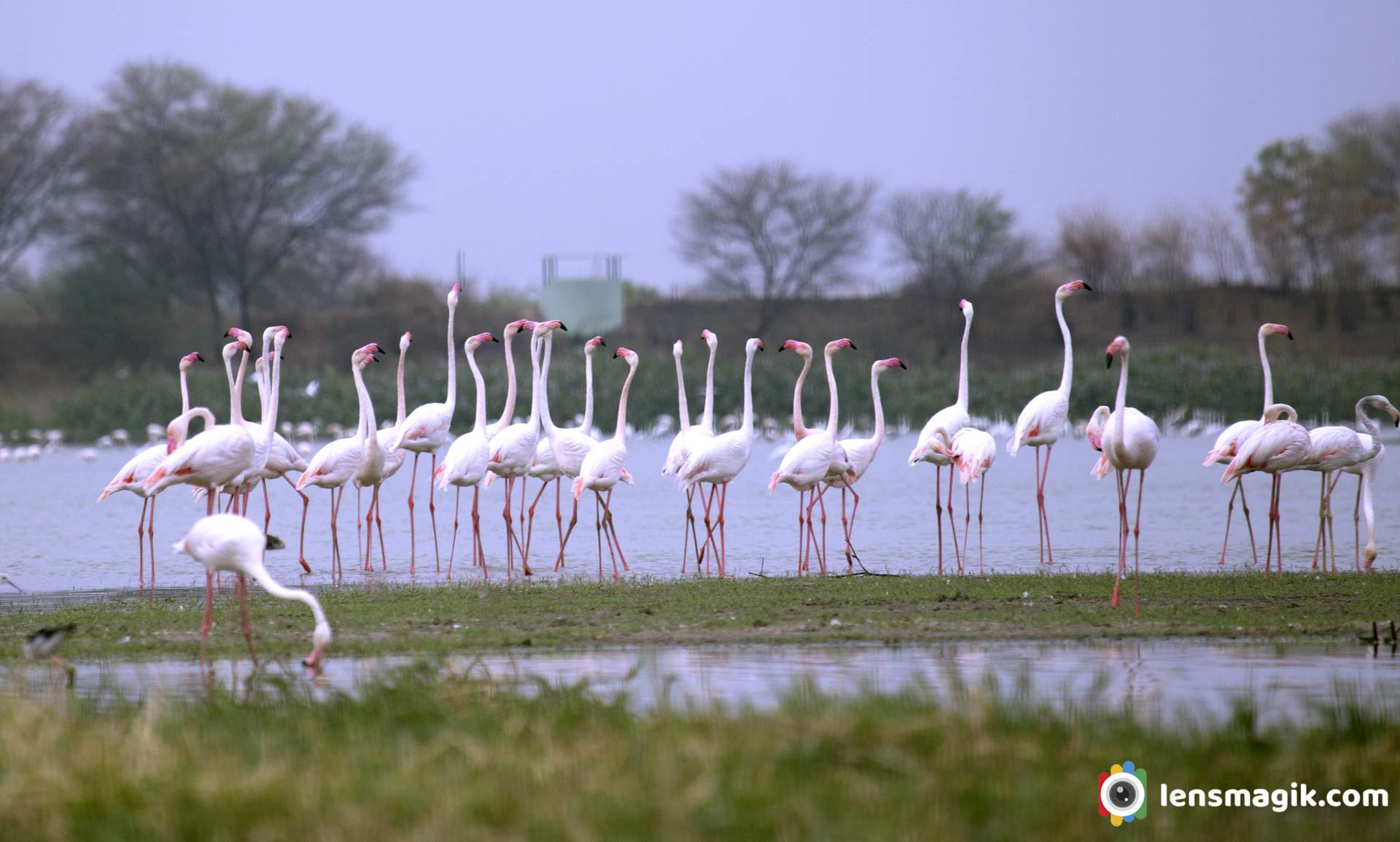
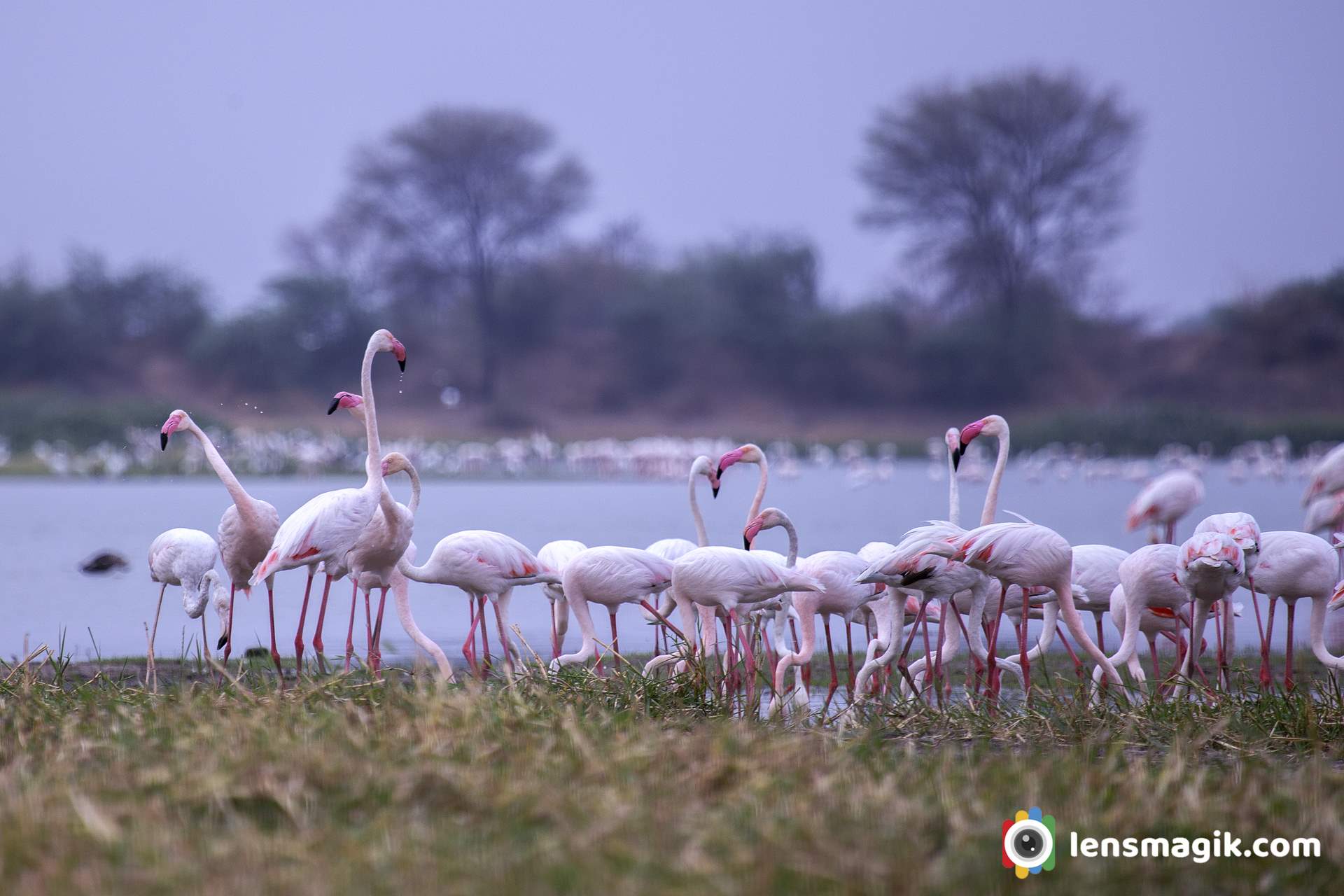
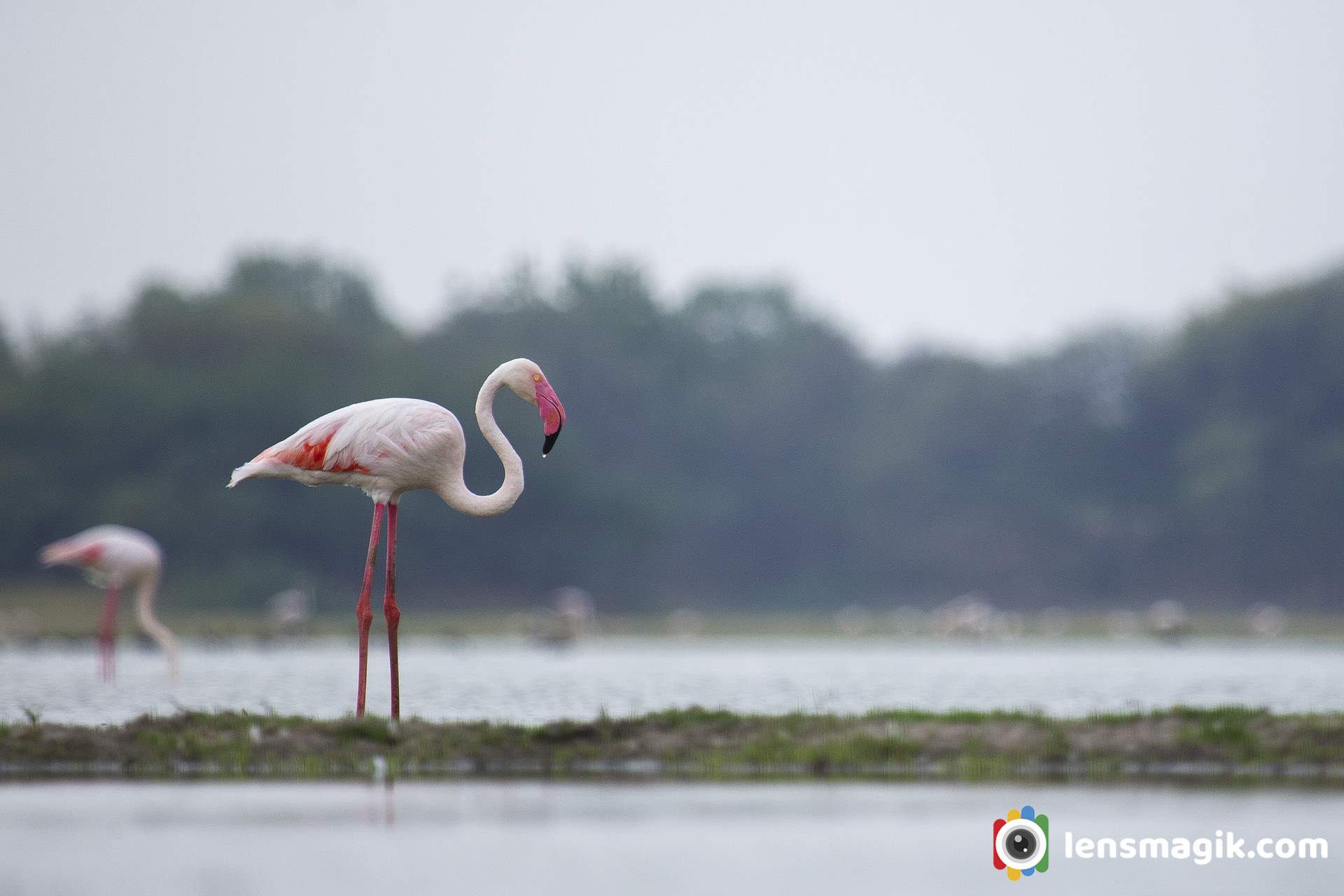
Solo Greater flamingo bird
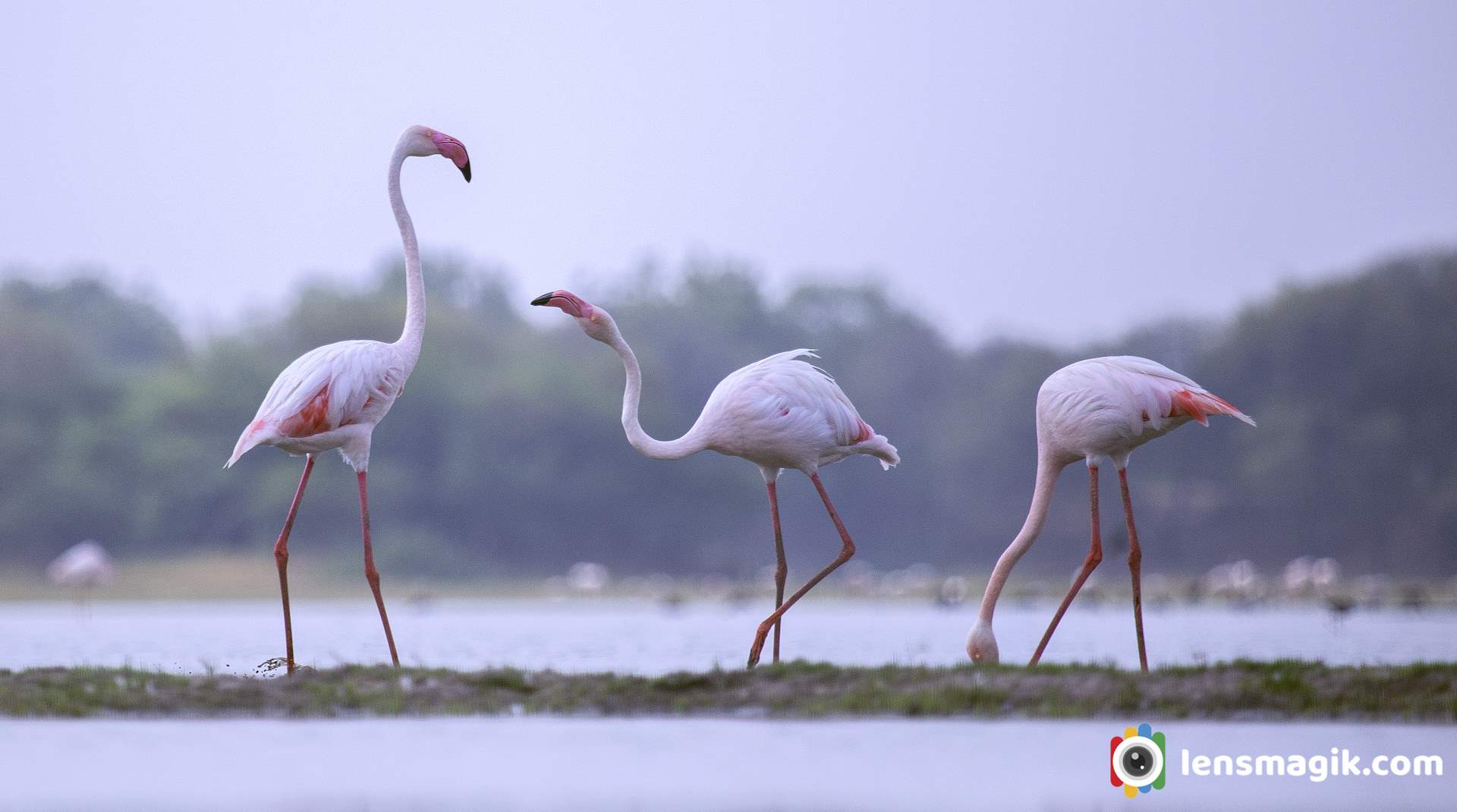
Some masti time for two flamingo birds .
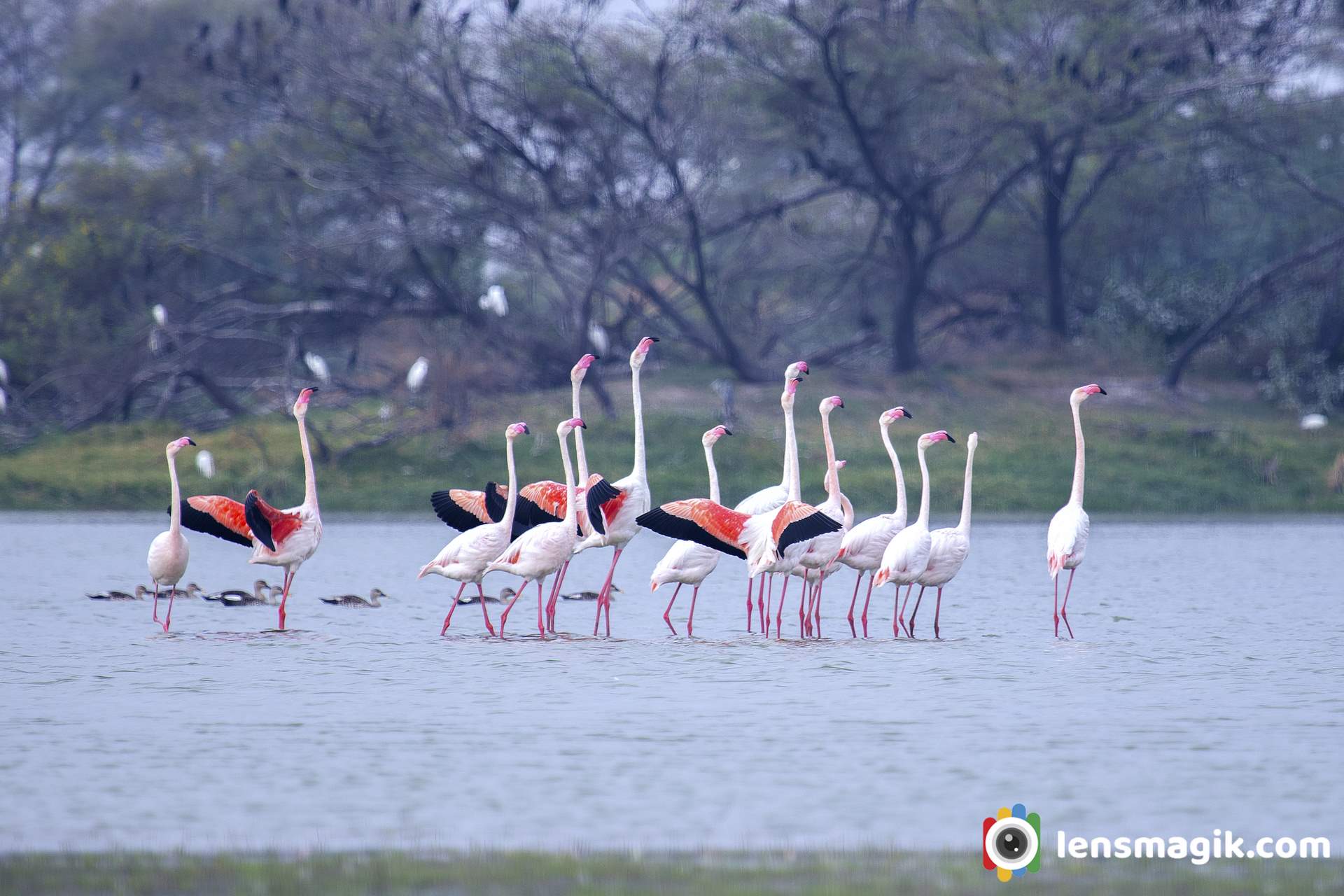
Above image shows the discipline of Flamingo Bird and looks like a morning pared they are doing .
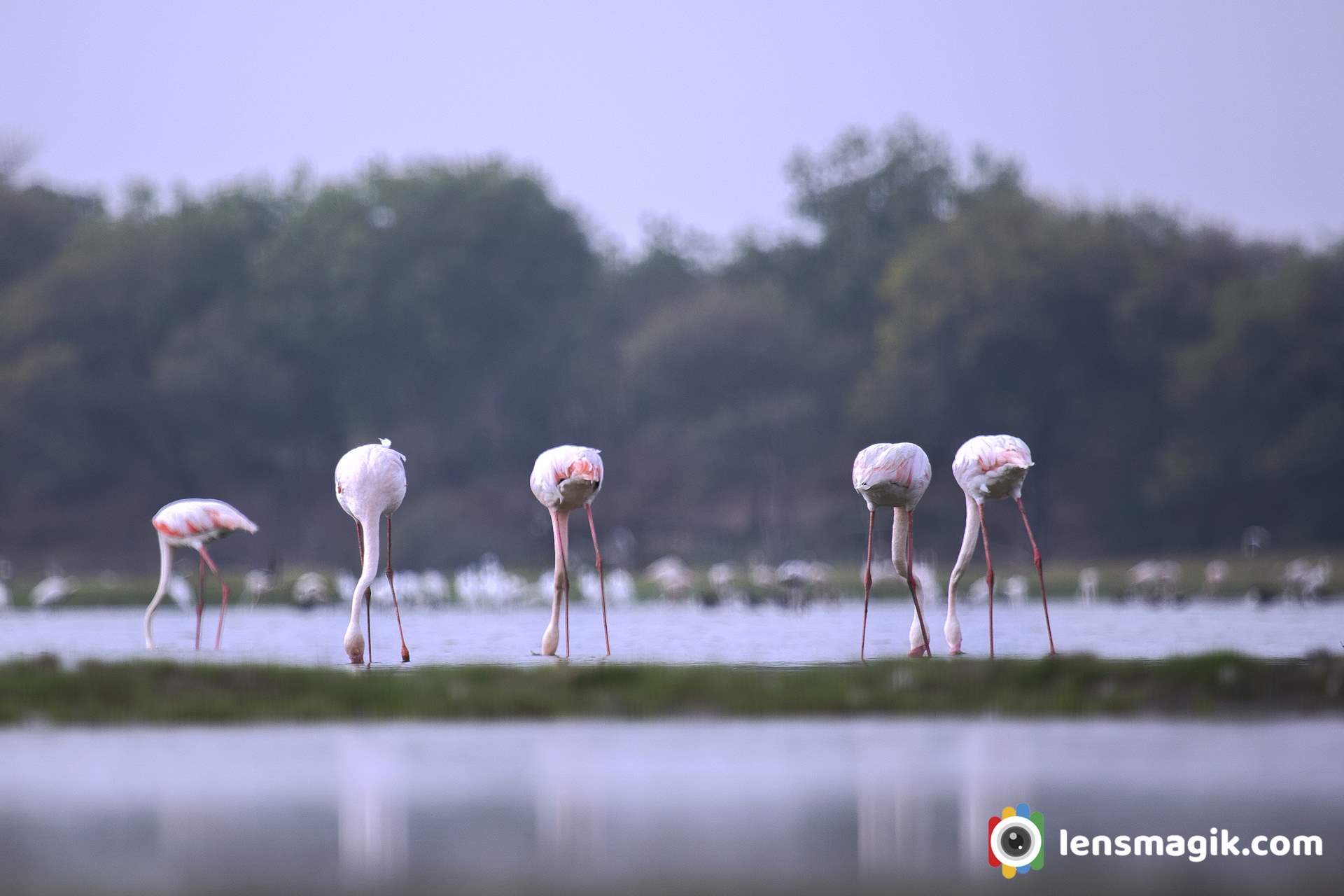
https://youtu.be/9dVBrR9NSOo
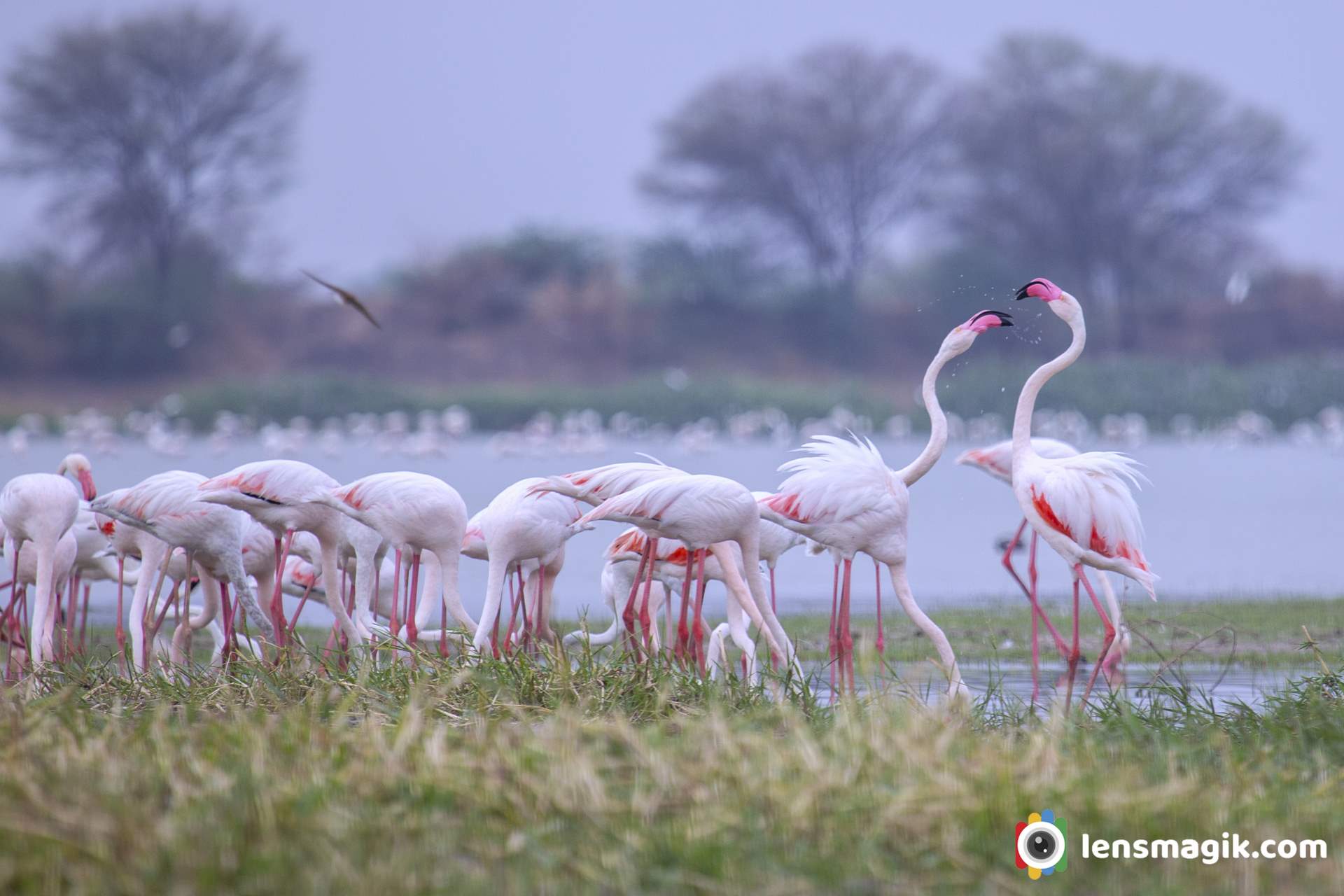
A group of Flamingo Birds at Thol Lake make your frame awesome.
Location : Thol Lake, Gujarat
Thol lake is just 25 km approx. from Ahmedabad. You can visit one day for Thol lake is enough. Also you can find another migratory birds like pelicans , bar headed goose, river tern and many more resident spices.
Ahmedabad to Thol lake distance about 25km
Thol bird sanctuary is located in Kadi Taluka in Mehsana District near sanand Gujarat. It is an artificial lake located near village Thol. In 1912 thol lake was built and it was declared as a Sanctuary in 1988. The main use of lake is use of water for irrigation. The Thol Bird Sanctuary or a Thol lake wildlife Sanctuary India is a habitat of more than 150 spices of birds. Also it is famous for migratory birds Flamingos and Sarus Crane which breeds here.
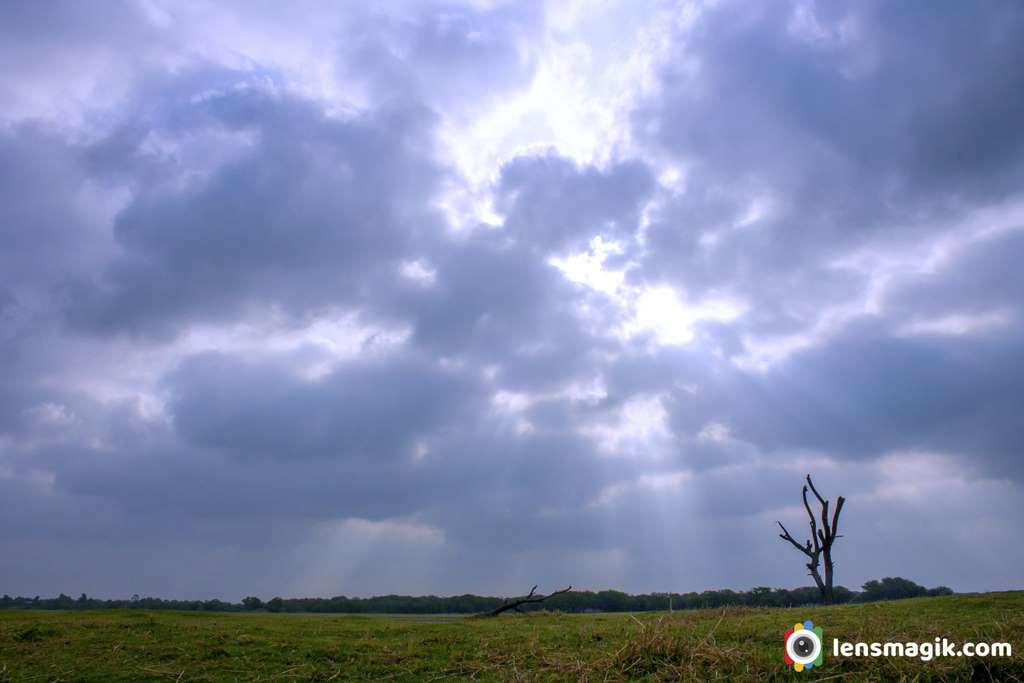
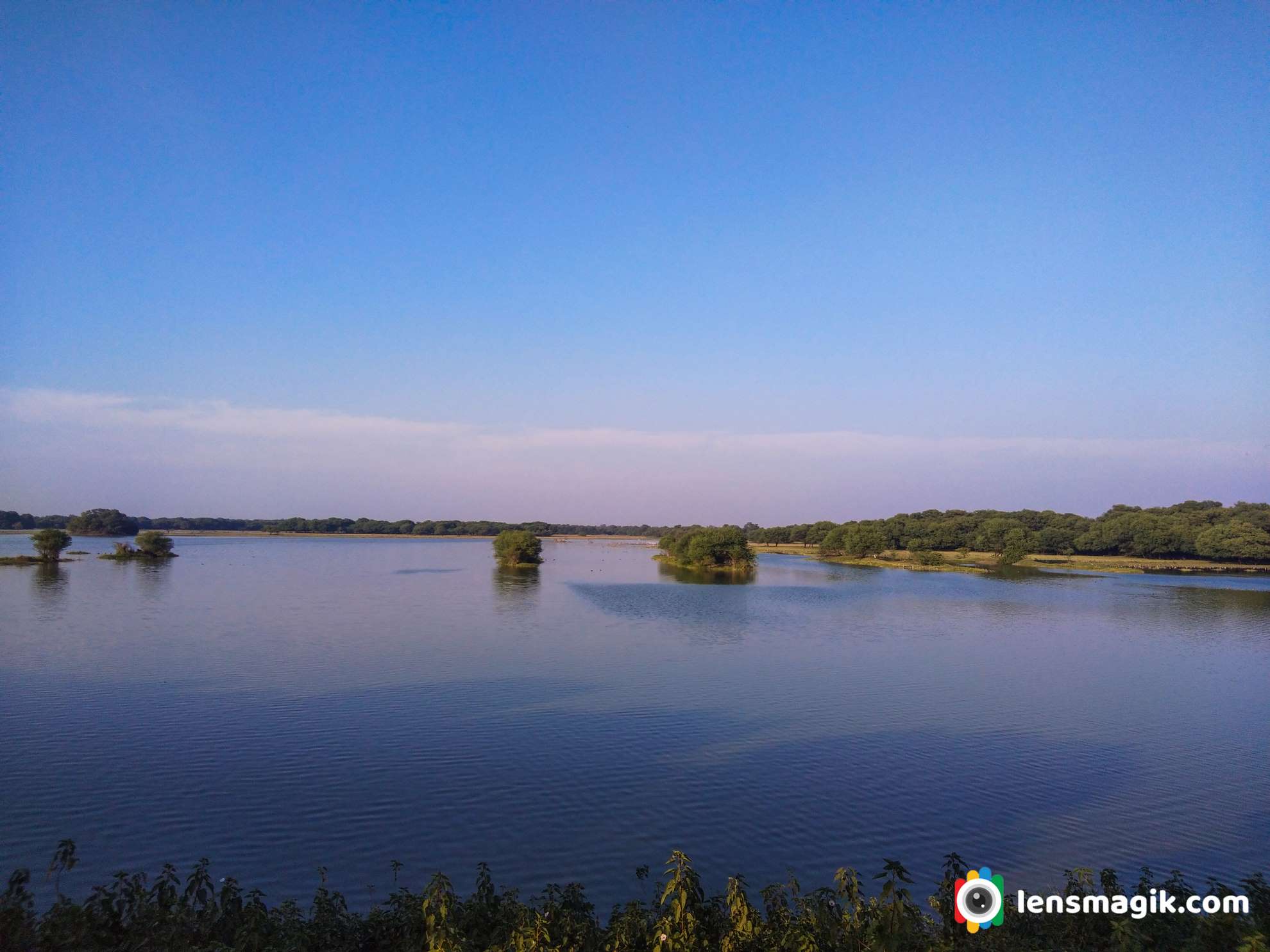
About Thol Lake / Thol Bird Sanctuary
Thol lake is located near Thol village and its area around 38000 acres. Lake faces all season winter , summer and monsoon. During winter temperature goes to 8 degree and in summer temperature goes to 43 degree. Thol lake is under control of Forest and Irrigation department of Gujarat. Thol lake water storage capacity is around 84 million cubic meters. Thol wildlife sanctuary is declared as Eco Sensitive Zone .
Flora and Fauna Thol Sanctuary :
Thol lake has many vegetation plants like Zizyphus, Acacia nilotica, Ficus, Capparis, Azadirachta indica etc. There are also some mix flora of Marshy and Aquatic plants reported in Thol Lake.
Thol lake is protected area and it is very good habitat for water birds. In thol bird sanctuary there are more than 150 spices of birds found . Among these more than 60 % of birds are water birds. Flamingo bird is most prominent bird of Thol Lake. Also Sarus Crane nest in large number here.
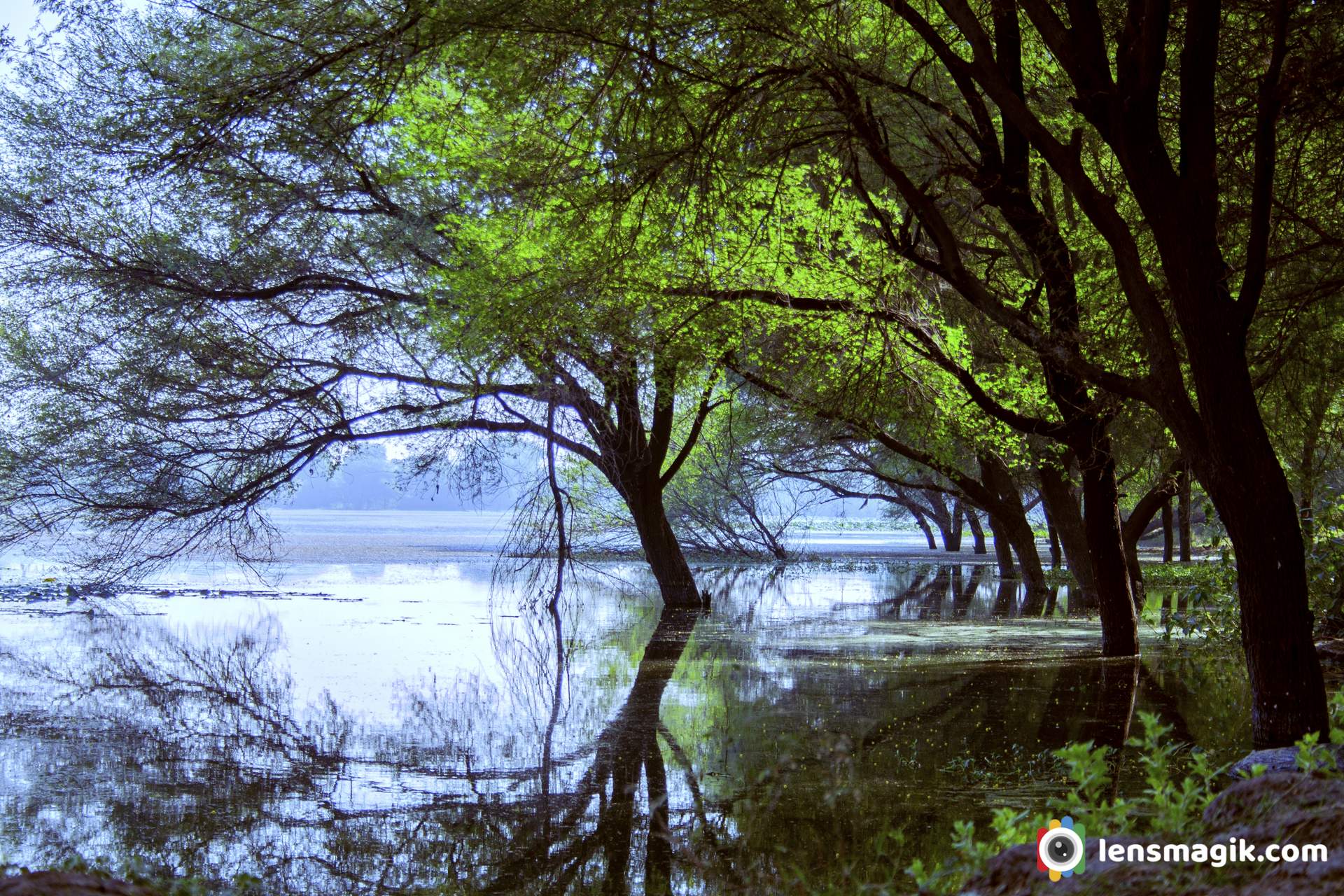
Famous Migratory Birds of Thol Lake
• Flamingos
• Sarus Crane
• Great White Pelican
• Mallards
• Bar Headed Geese , Grey Headed Geese
• Waterfowl
There are also some spices reported here like Dalmatian Pelican, Indian Skimmer, Greater Spotted Eagle, Indian Vulture and white rumped Vulture etc. In Mammals Bluebull, Blackbuck and Golden jackal reported here.
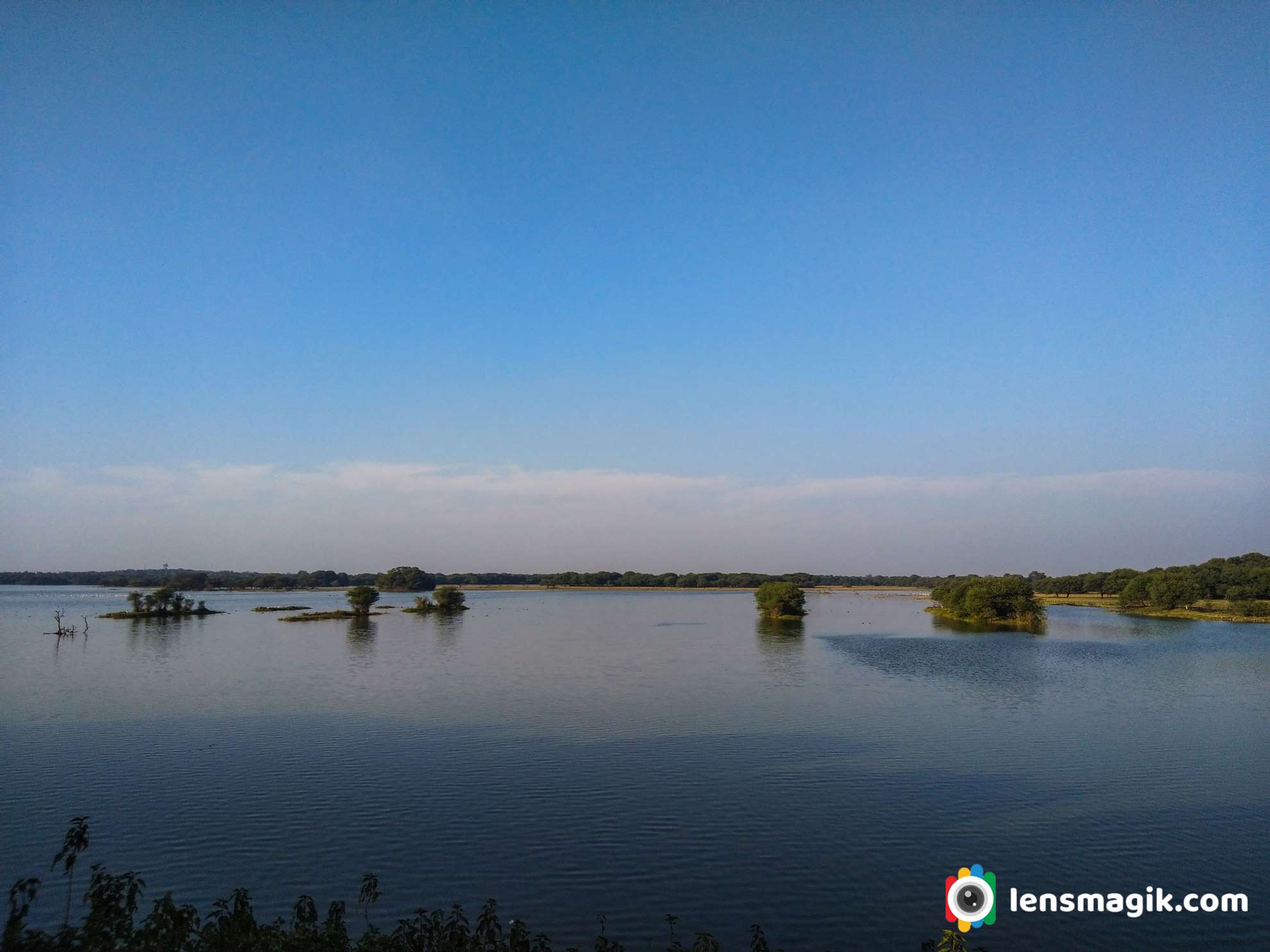
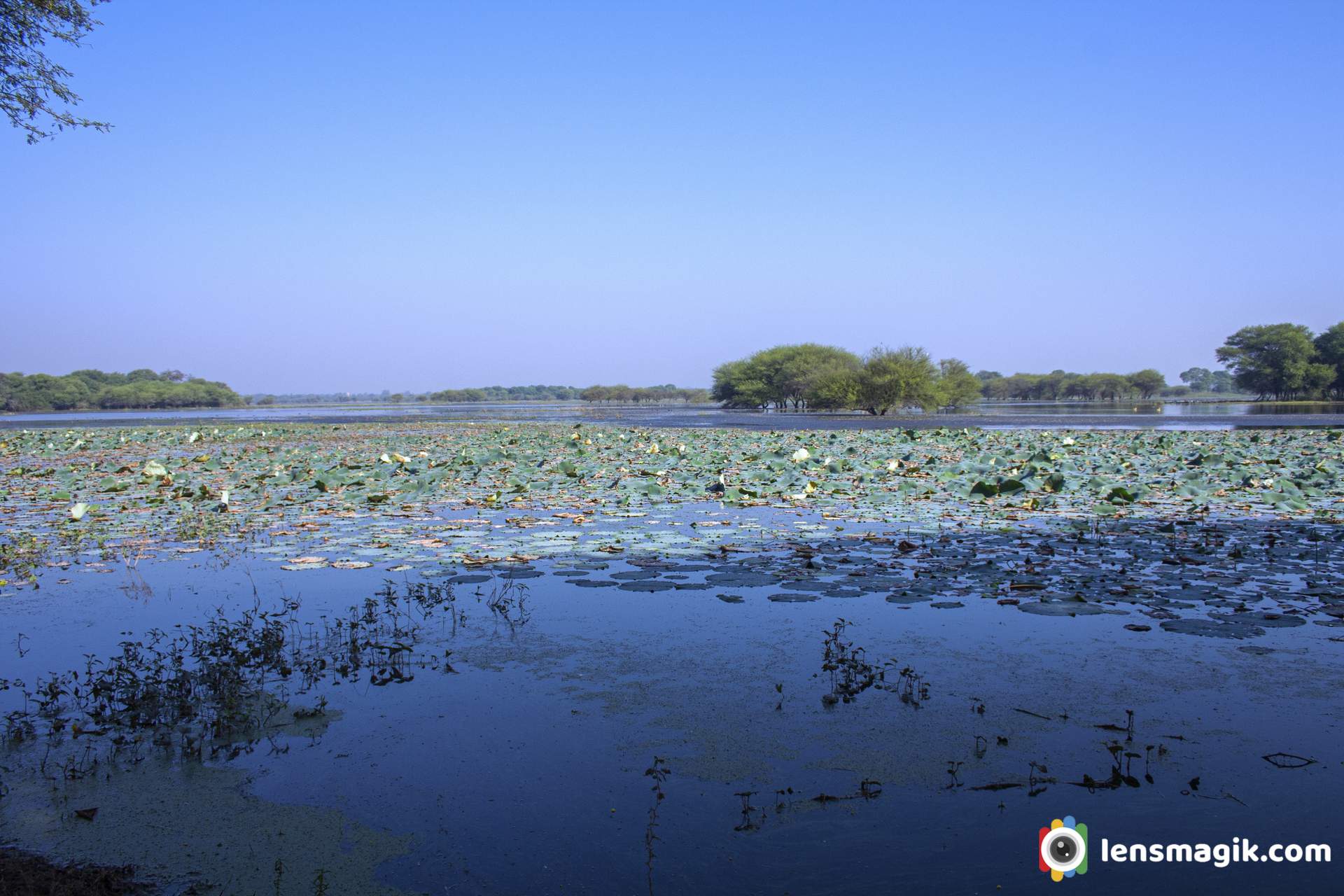
Thol Lake Timing and Fees :
Thol lake open everyday at 6 AM in morning and close at 5.30 PM in evening. Entry fees for Thol Lake or Thol sanctuary is 50 INR for per person. Also Camera fees extra at 200 INR and if you go via car then car fees also 500 INR. Foreigner fees are 10 $ per person.
Best Time to Visit Thol Sanctuary / Thol Lake :
Best time early morning for Thol Lake. In winter if you go before sunrise you can see Twilight sky amazing with lake shore and birds sound .During all season Thol lake has its own beauty. Every season you can visit at Thol Lake. But mostly during winter from November to March season is best for Thol Sanctuary visit. Because during winter lots of Migratory birds came here and stay for long time so for birding winter season is best at Thol Lake. Also during summer some of birds stays here like flamingos and pelicans, geese etc. So you can also see them in summer too. Also during summer water level of lake is low so may be the birds you can get in deep or sometimes closer. During monsoon most people don’t visit but if you like macro photography then you must visit Thol lake in monsoon. You can get some excellent macro subjects like waterdrops , Spiders, Insects etc.
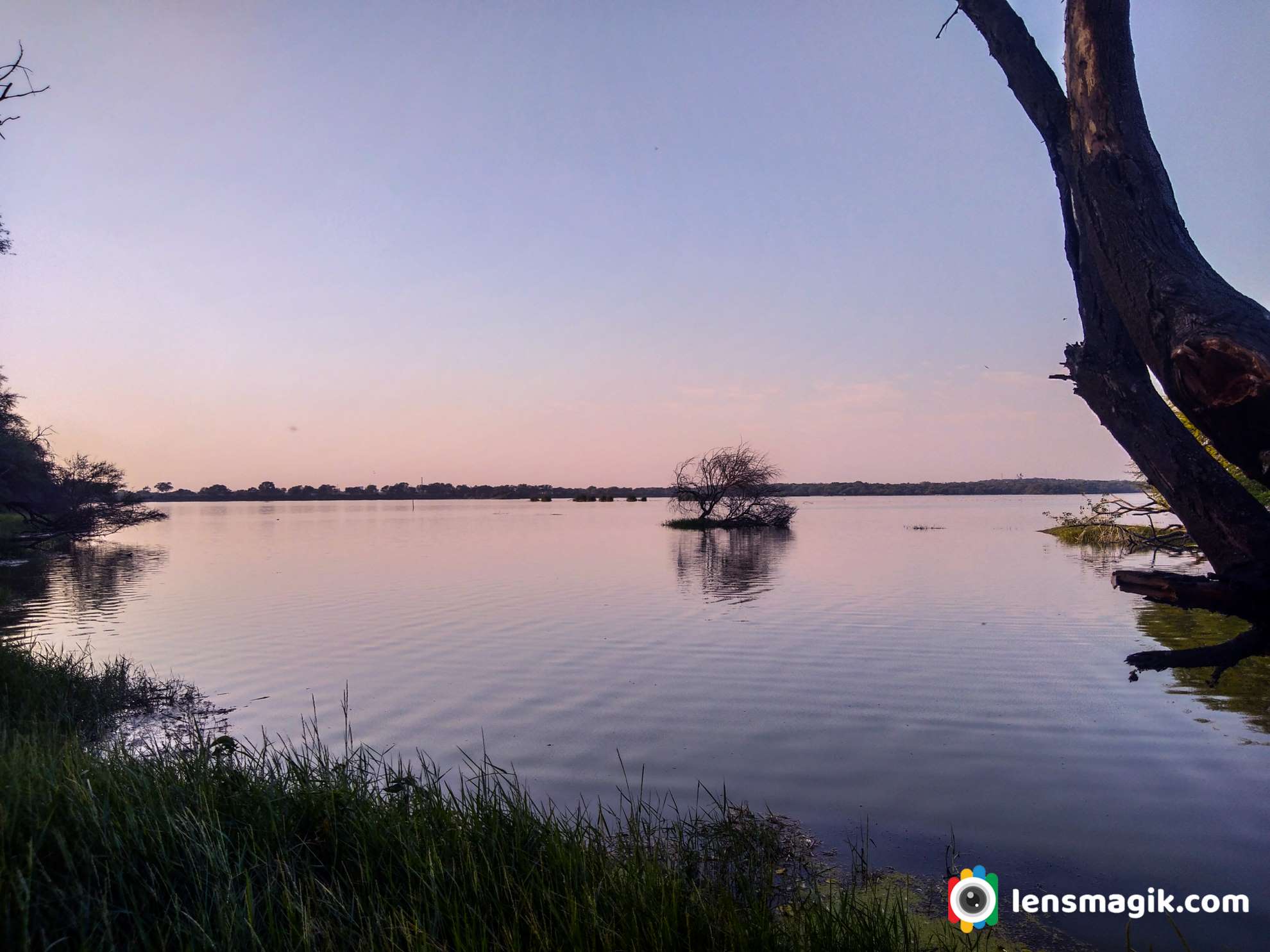
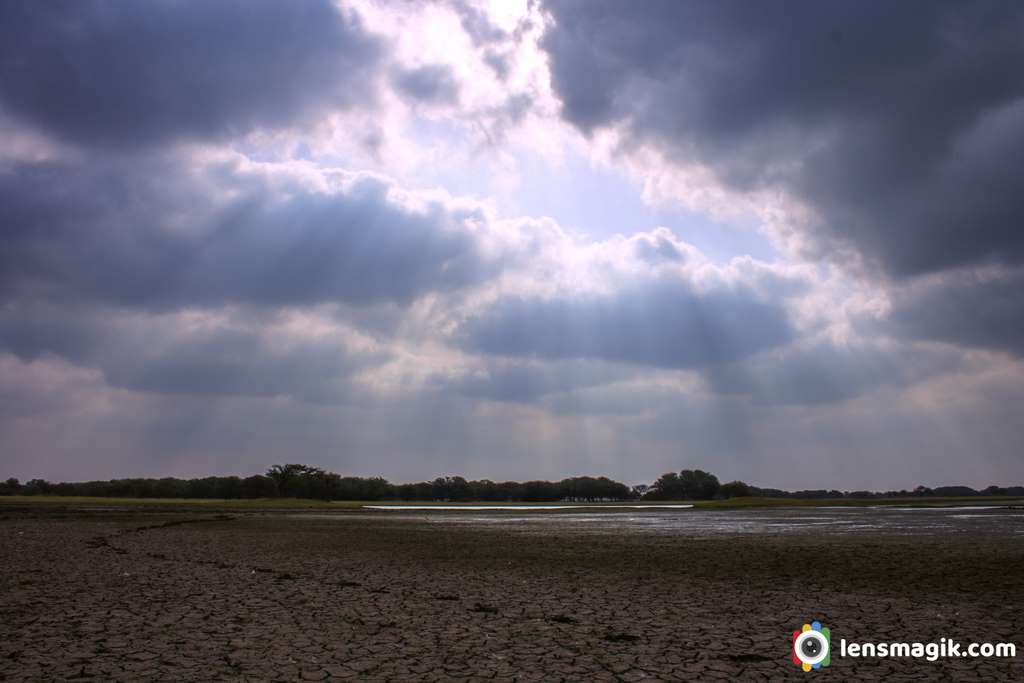
What to do and What not to do in Thol Lake / Keep in mind while visiting sanctuary in India :
• Keep silence in sanctuary
• Maintain discipline
• Keep sanctuary clean
• Do not throw plastic waste anywhere in sanctuary
• Protect wildlife
• Observe birds, mammals etc and protect them and identify them
• Follow rules of wildlife protection act -1972
• Don’t disturb birds and animals
• Don’t enter in sanctuary with liquor and inflammable objects
• Don’t make loud noice.
• Enter in sanctuary with permit only and keep receipt till you leave sanctuary
• Don’t feed birds and animals
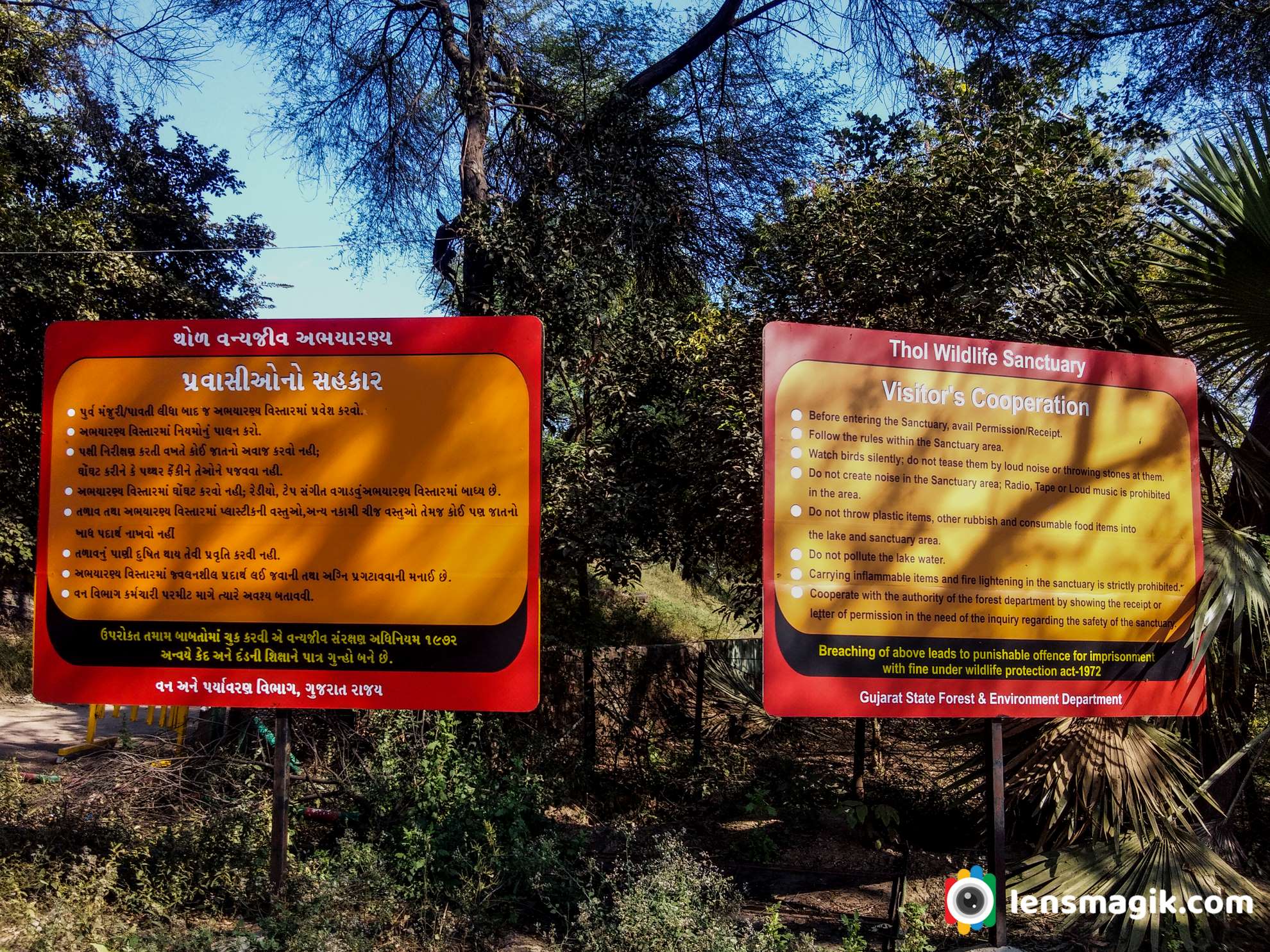
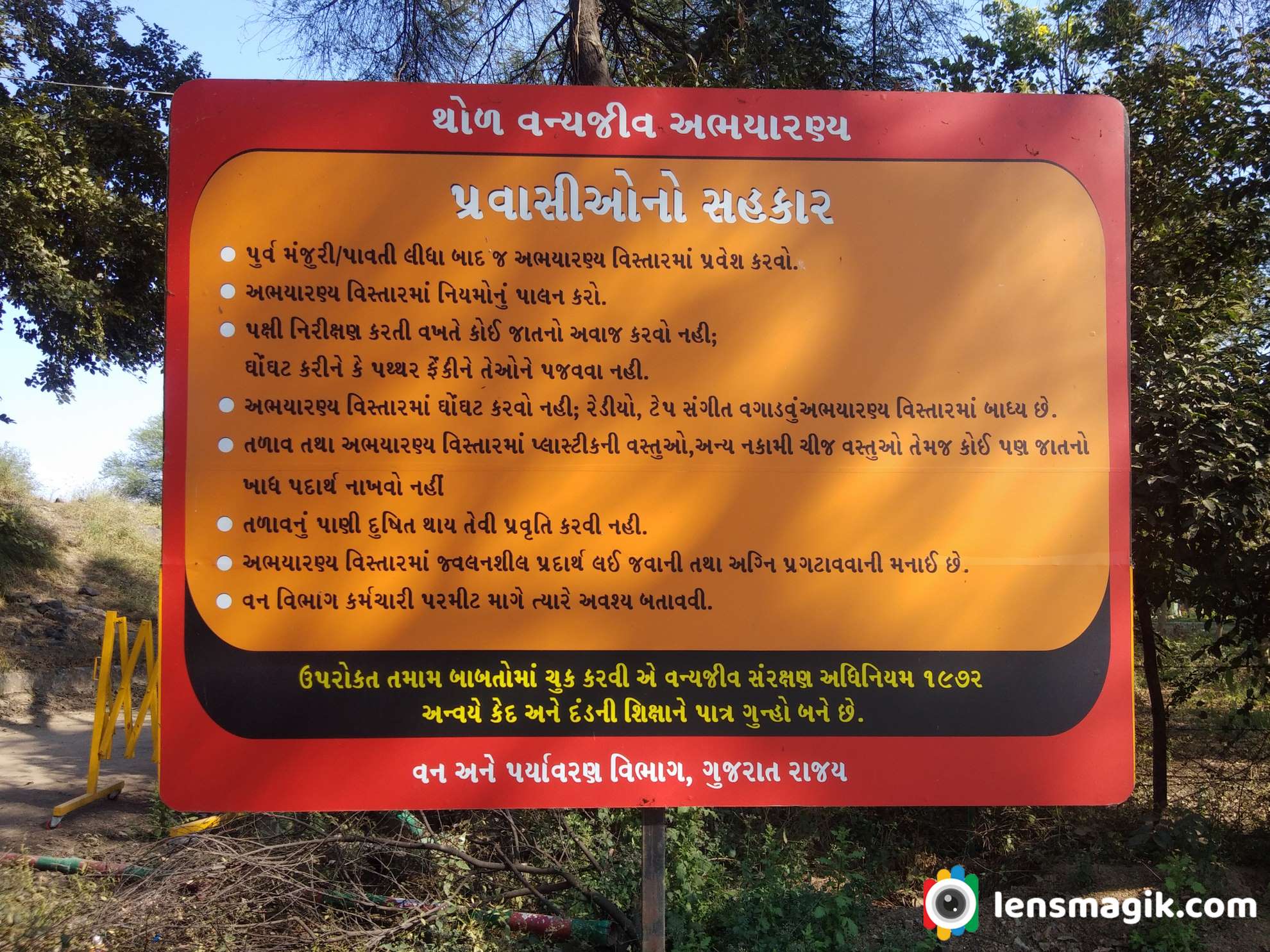
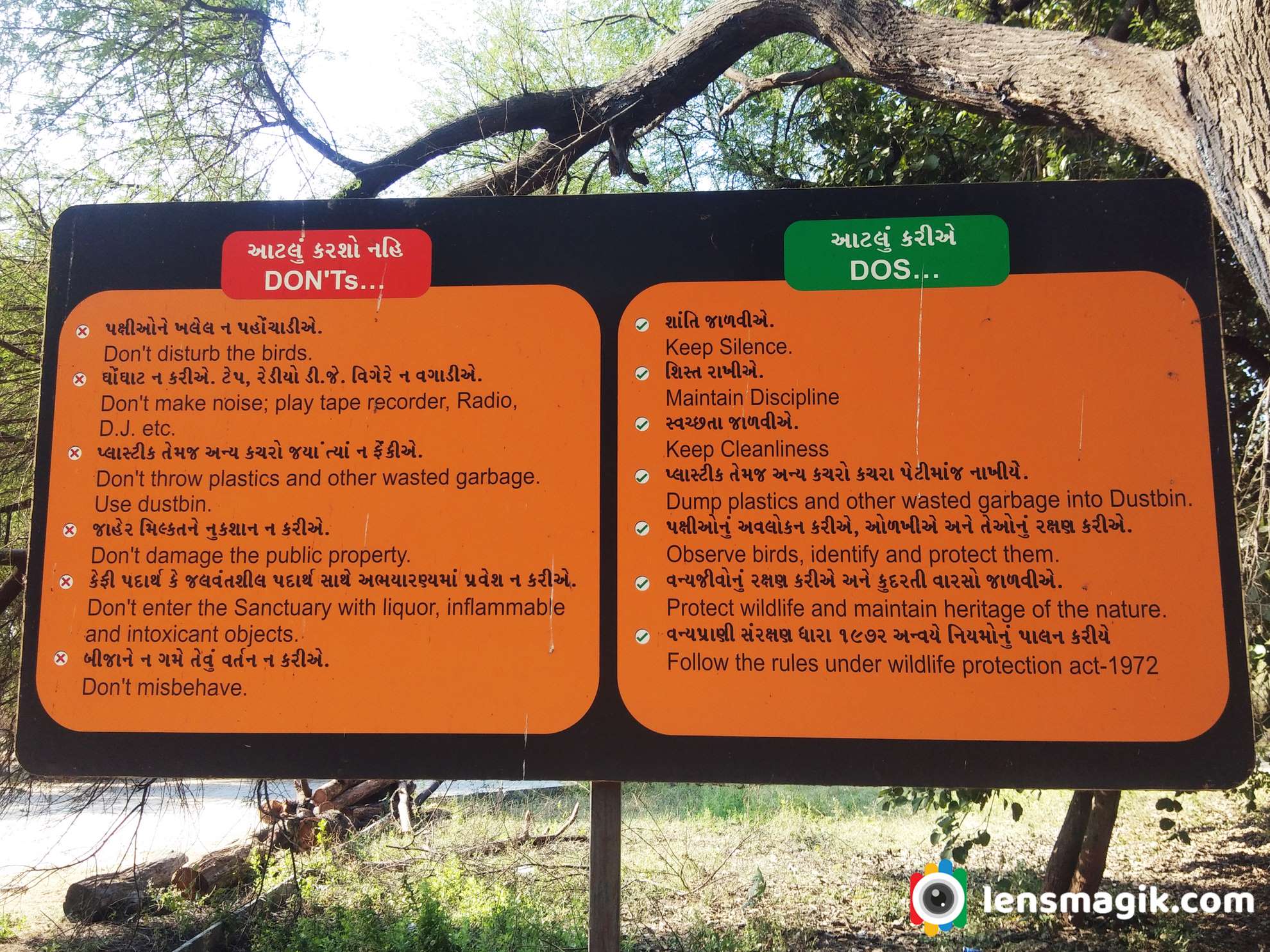
Where to Stay near Thol Lake :
Well near to Thol Lake there are not good places to stay at night but you can go near to destinations like Kadi, Kalol or Gandhinagar , Ahmedabad where you can get good places to stay at night. Nearest I suggest Kalol around 15-18 km or you can go Ahmedabad around 25 km.
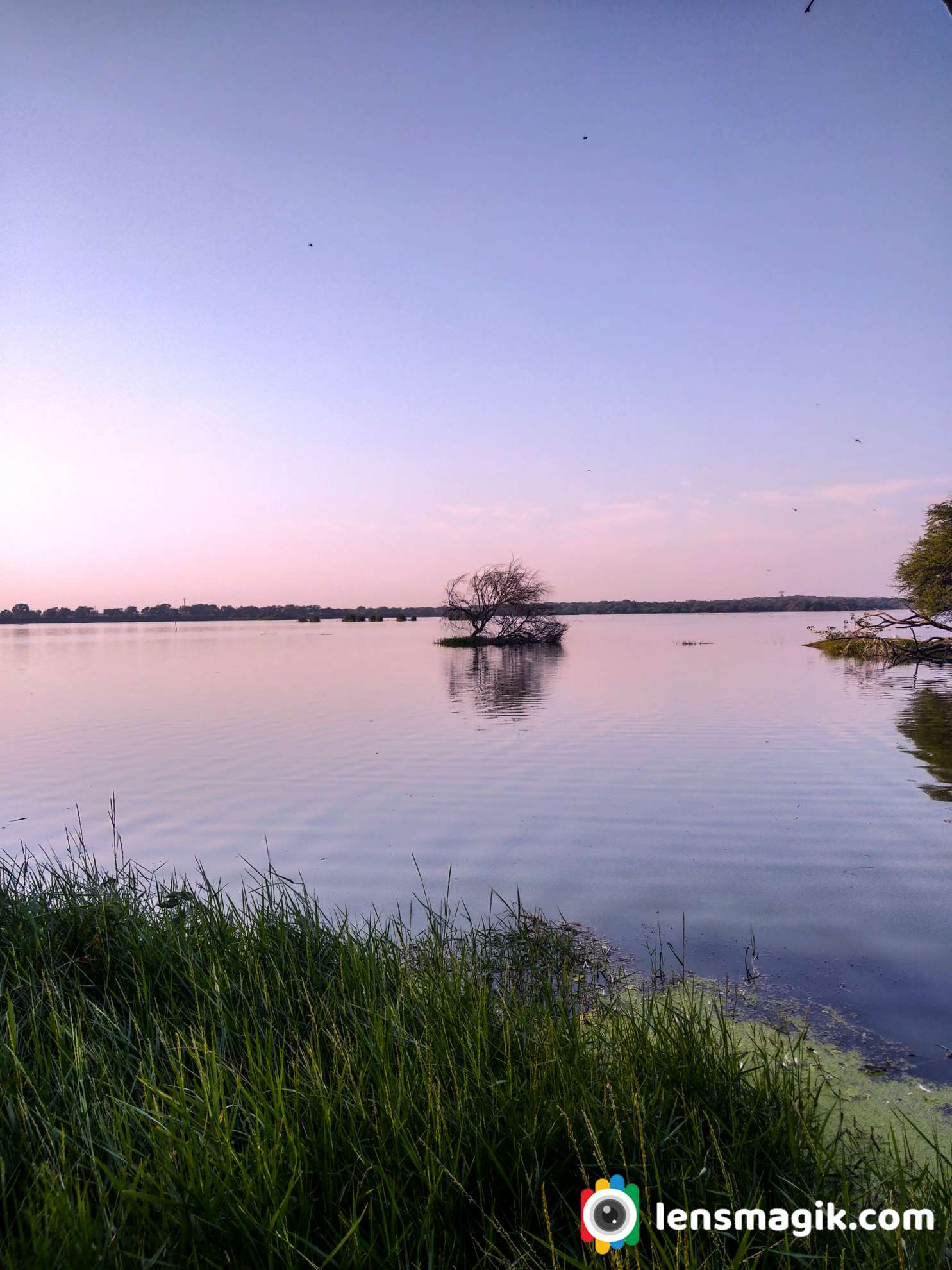

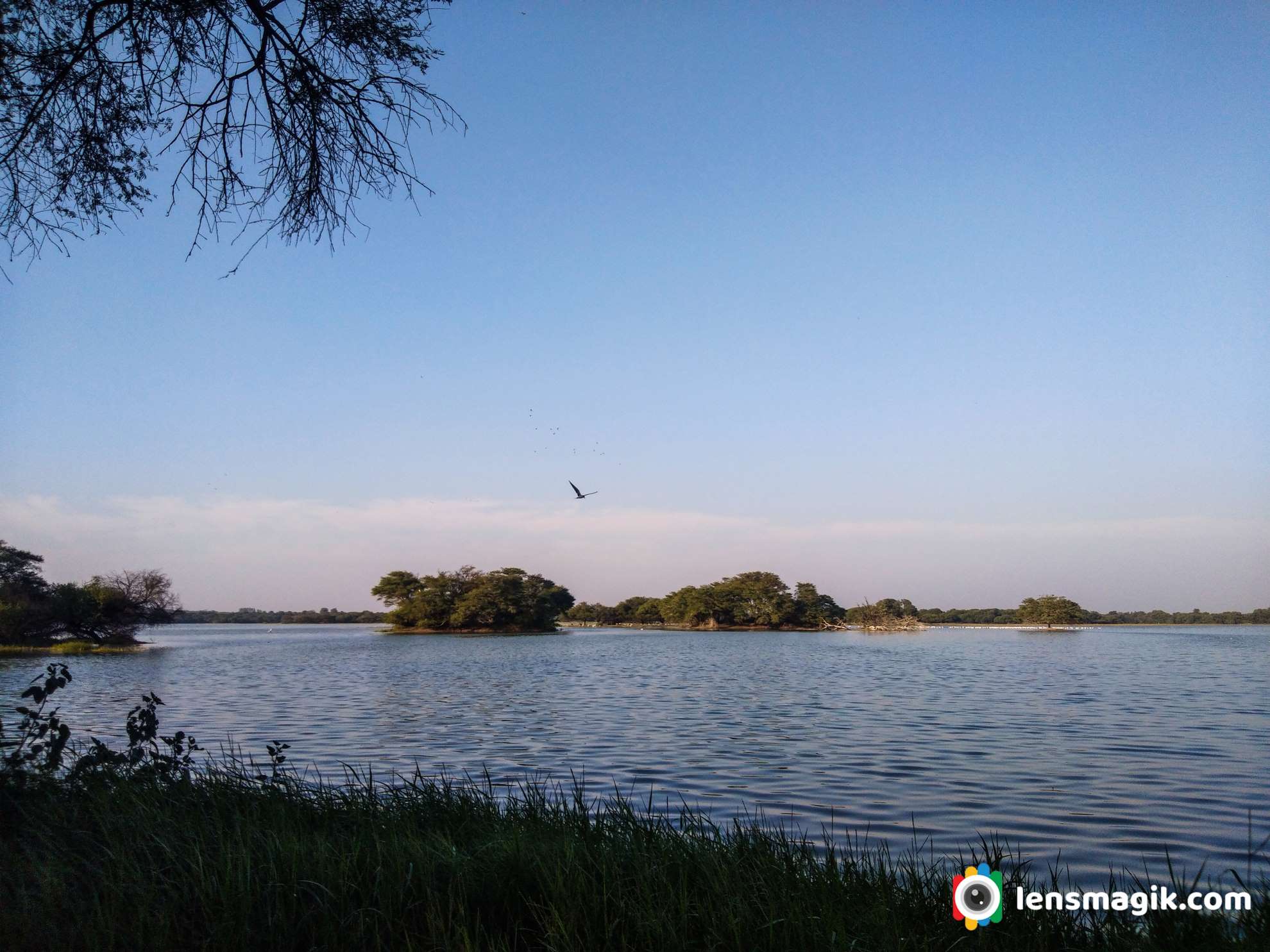


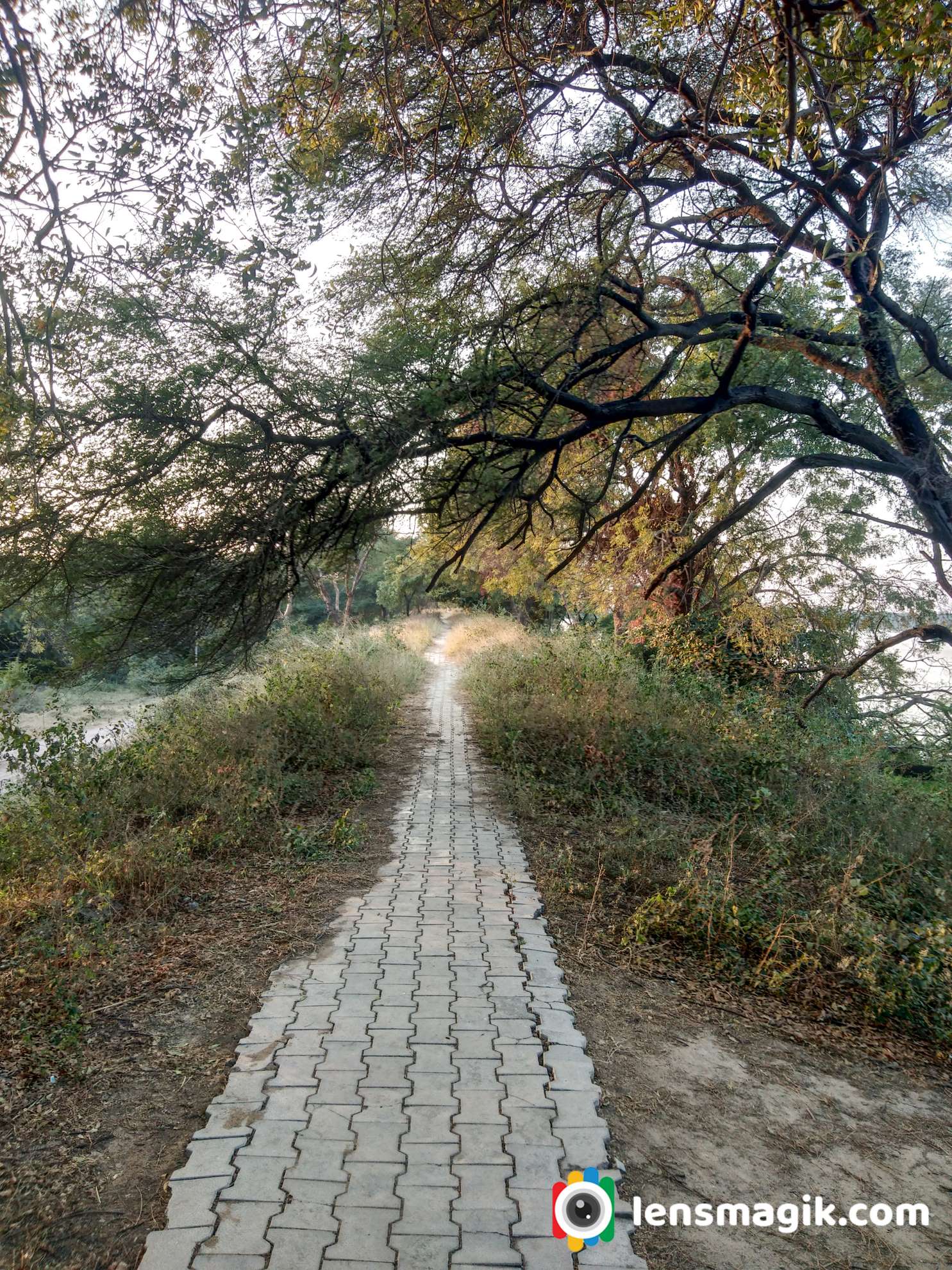
Places to Visit near Thol Lake :
If you are staying at Ahmedabad then go for Ahmedabad Darshan , Pol area of Ahmedabad and Adalaj Ni Vav ( Heritage places ) etc. Also go for fast food test at night at Manek Chauk and SindhuBhavan road there are lots of option for food lovers like Urban Chauk, Freezbee etc.
If you stay at Gandhinagar then visit Mahatma Mandir at Gandhinagar, Sarita udyan , Akshardham Temple etc.
I would suggest Modhera Sun Temple if you had some more time which is around 100km from Ahmedabad. For bird lovers and bird photographer I would suggest visit Little ran of Kutch (LRK) during Winter season, Pariej Lake, Indroda park Gandhinagar, Jessore Sanctuary Banaskantha etc.
How to Reach Thol Sanctuary :
Nearest airport is Ahmedabad and from Ahmedabad thol lake distance is around 30-40 km
Also for Railway station is Ahmedabad because you can get all frequency and destinations from Ahmedabad railway station.
Mt Kanchenjunga or Mt Kangchenjunga both spellings right and whatever you say located in west Bengal India. When i was on my Singalila National park trek i visit it. It was really gesture to see Mt Kanchenjunga from own eyes. A beautiful Mountain surrounded by snow and little bit clouds looks like you are in Heaven. The view i capture makes me very happy to see first time snow mountain in my life. When i was at my last location of my trek at Sandakphu we go for birding and v had a clear mountain view of Kanchenjunga. Kanchenjunga is also spelled Kangchenjunga. Height of Mt. Kanchenjunga/Kangchenjunga is 8586 m . The view of Mt Kanchenjunga from India is amazing as you can see in photos. This Mountain range in wide angle as shown above image looks like Sleeping Budda so this mountain range also known as Sleeping Buddha Mountain Range too.
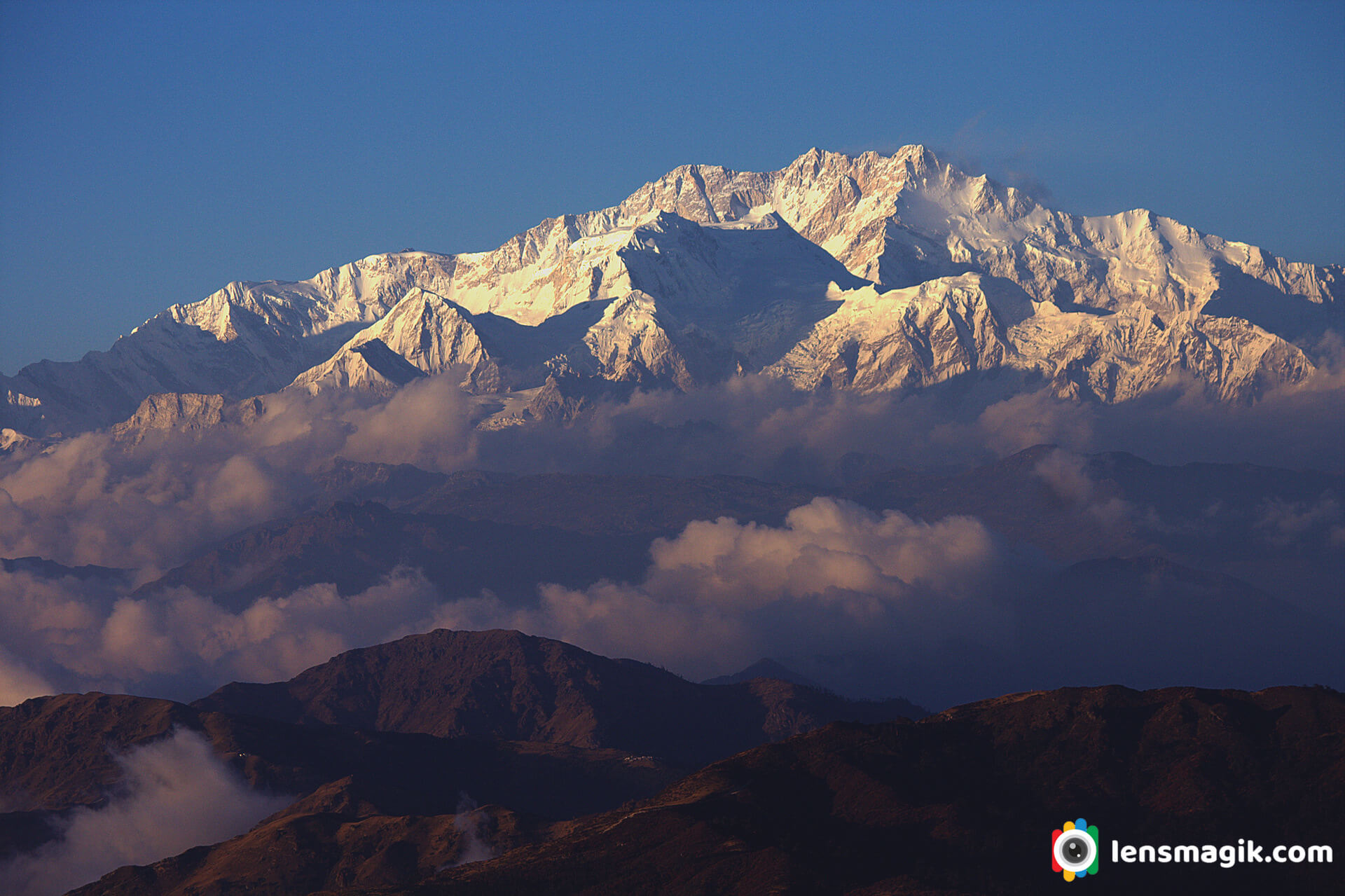
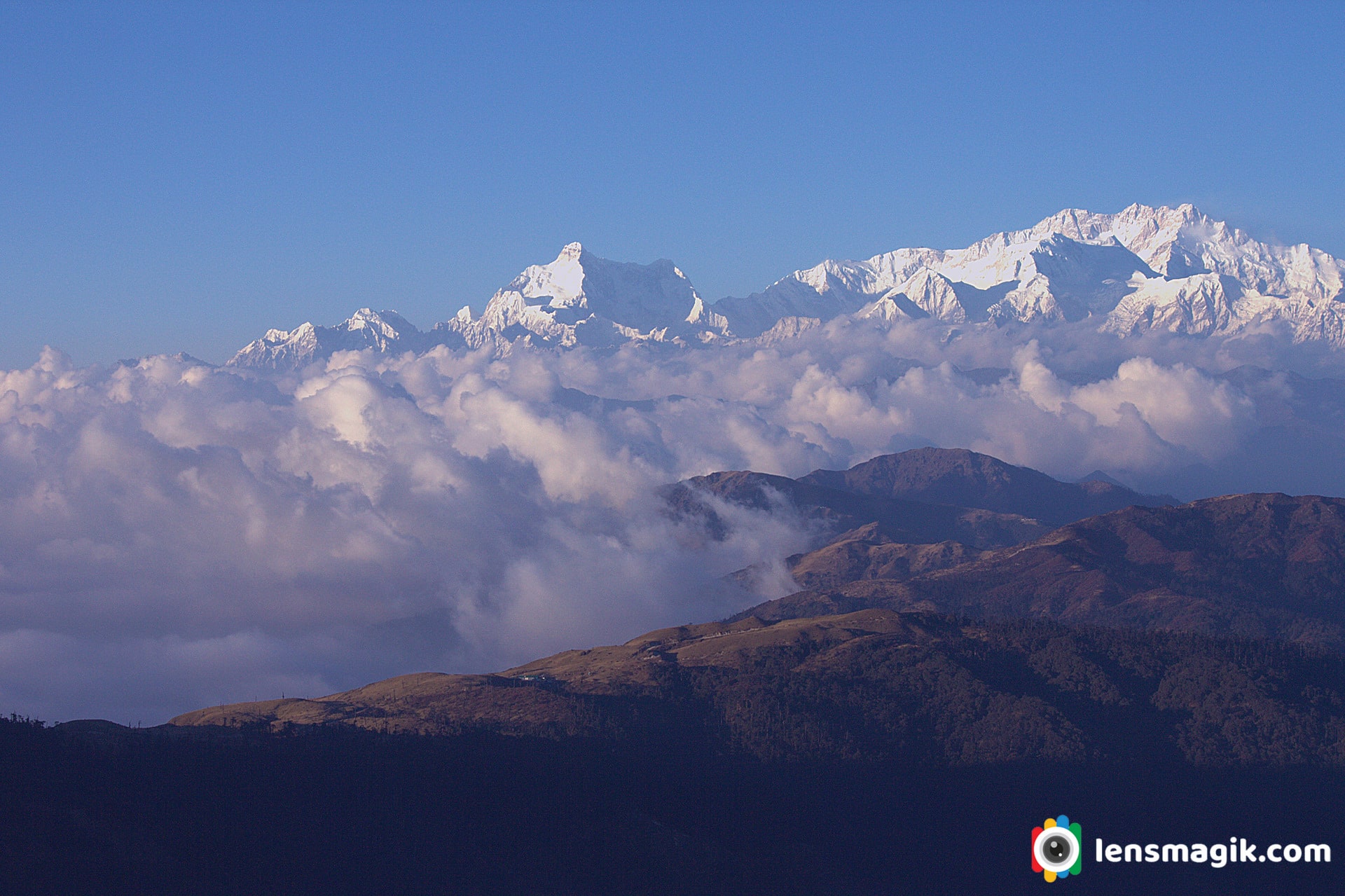
The name Kanchenjunga is derived from sanskrit kanchana ganga . Kanchana means gold and ganga is the river which flows in the region. The river shines like gold and hence the name Kanchana Ganga was given to this mountain.
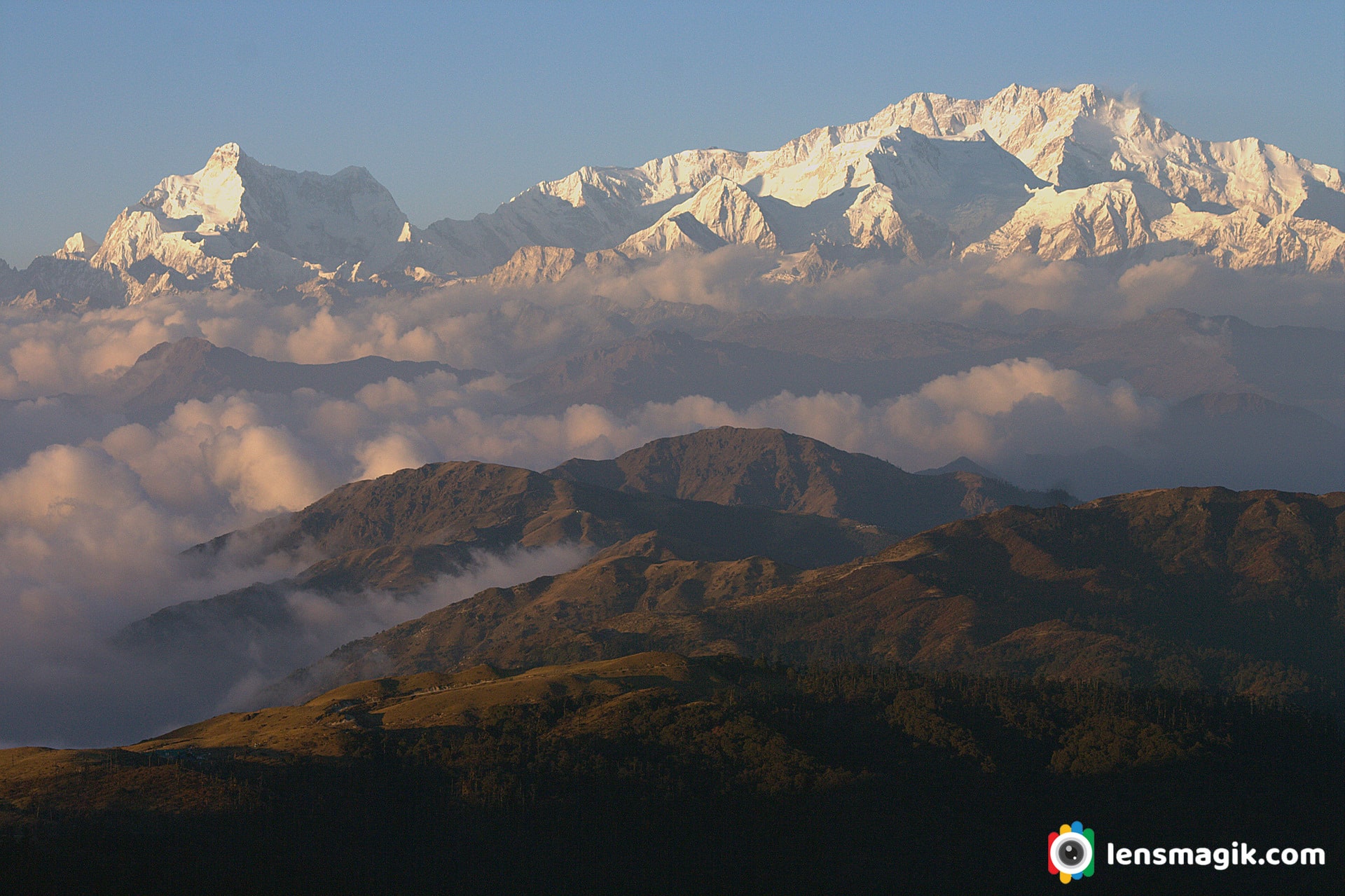
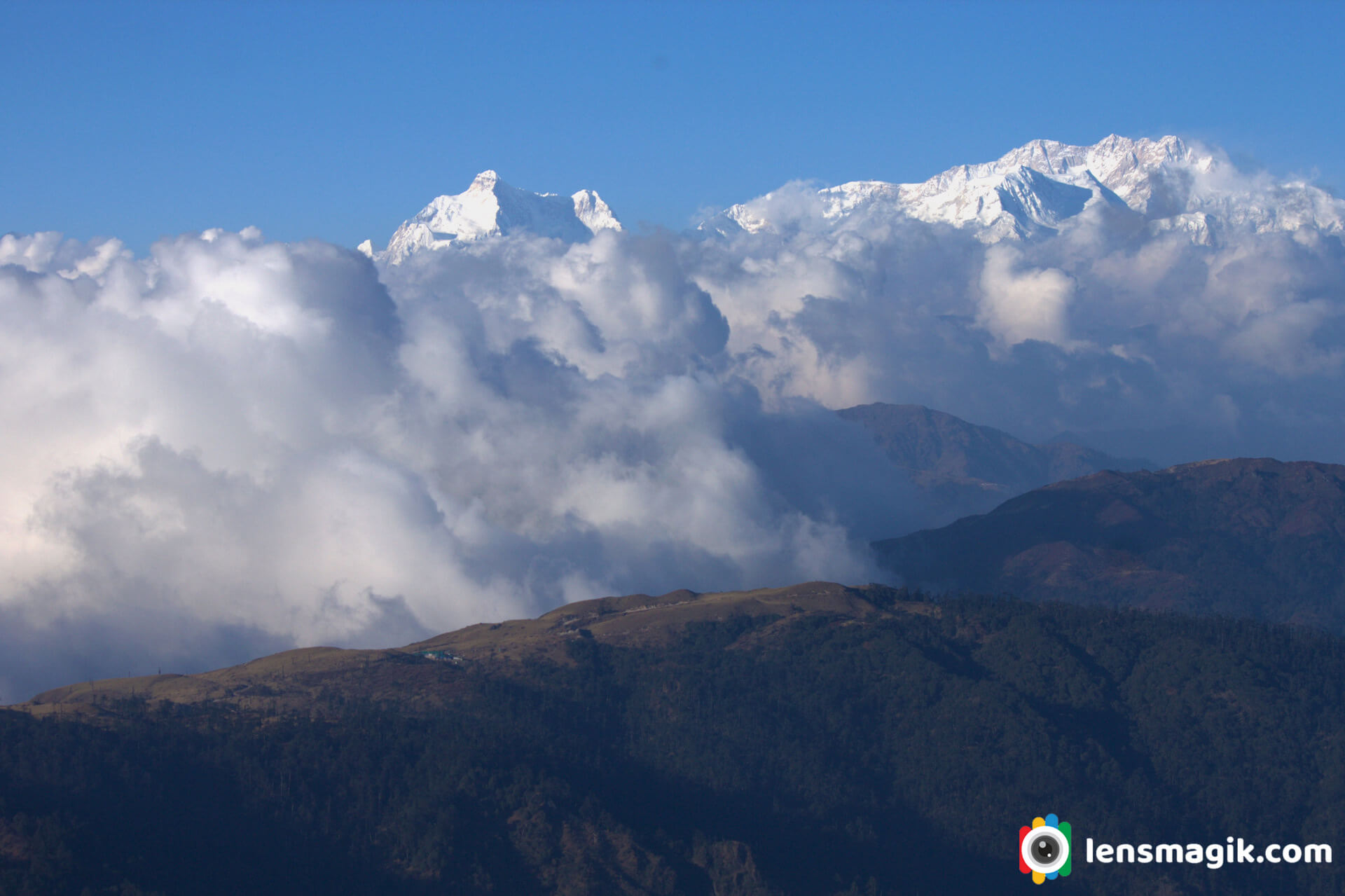
Things to know About Mt. Kanchenjunga/ Mt. Kangchenjunga :
- Kanchenjunga Mountain is about 28,169 ft height and located along the Nepal-India border in the Himalayas.
- It is the third highest mountain in the world.
- It contains 5 peaks and four of them above 27,700 ft of heights.
- Kanchenjunga is also name of surrounding section of Himalayas and means THE FIVE TREASURES OF SNOWS .
- Joe Brown and George Band was the first climber of Kanchenjunga mountain on 25 may 1955.
- Kanchenjunga mountain boundry shared by Nepal, India, China and Bhutan.
- Total 5 peaks of Kanchenjunga are Kanchenjunga Main ( 28169 ft ), Kanchenjunga West ( 27904 ft ), Kanchenjunga Central ( 27828 ft ), Kanchenjunga South ( 27867 ft ), Kangbachen ( 25928 ft ).
- Kanchenjunga Main is the highest elevation of Brahmaputra River.
- There are four climbing route for Kanchenjunga among them 3 are from Nepal and one from Sikkim India.
- It is also known as Sleeping Buddha Mountain range.
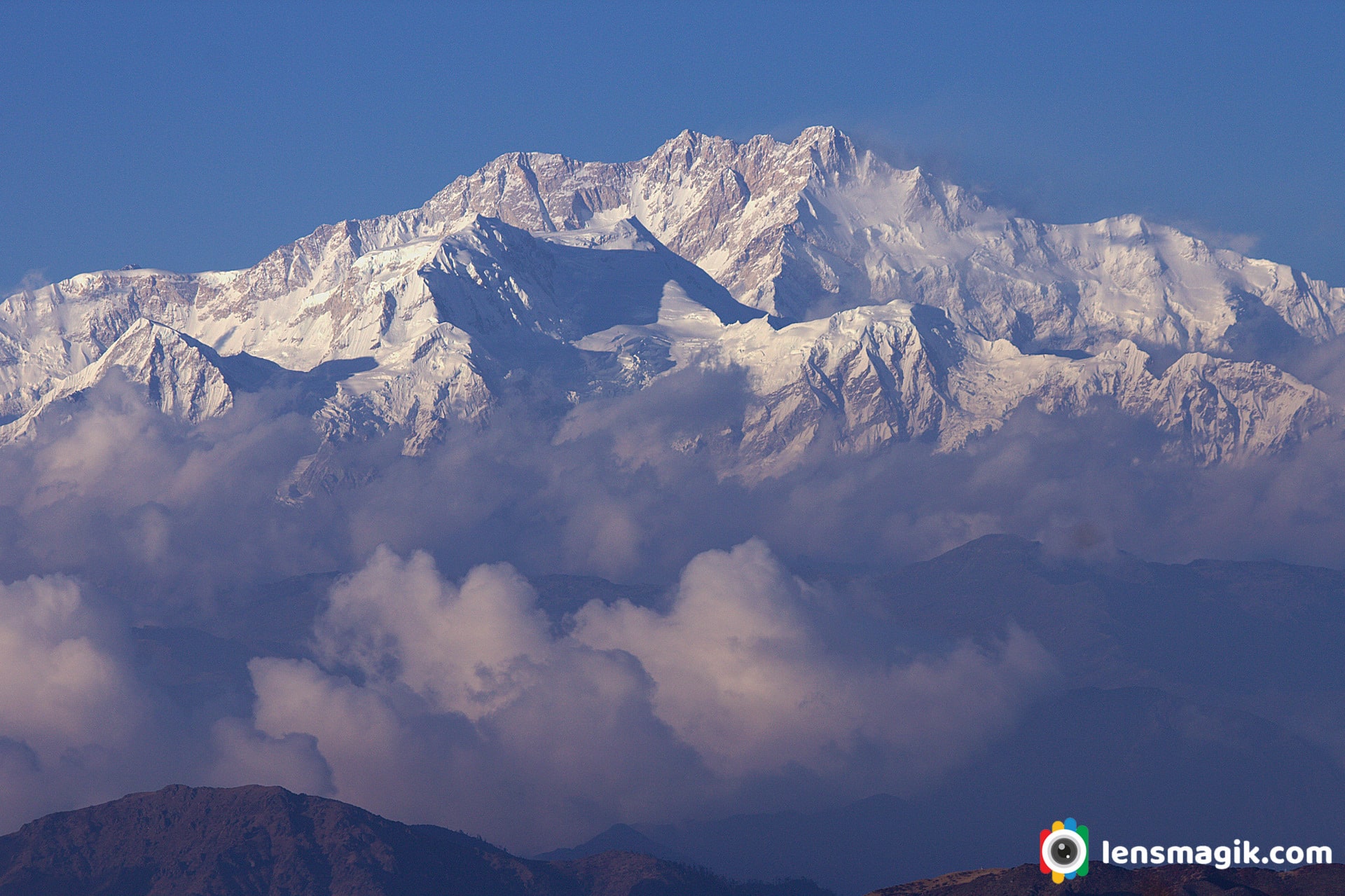
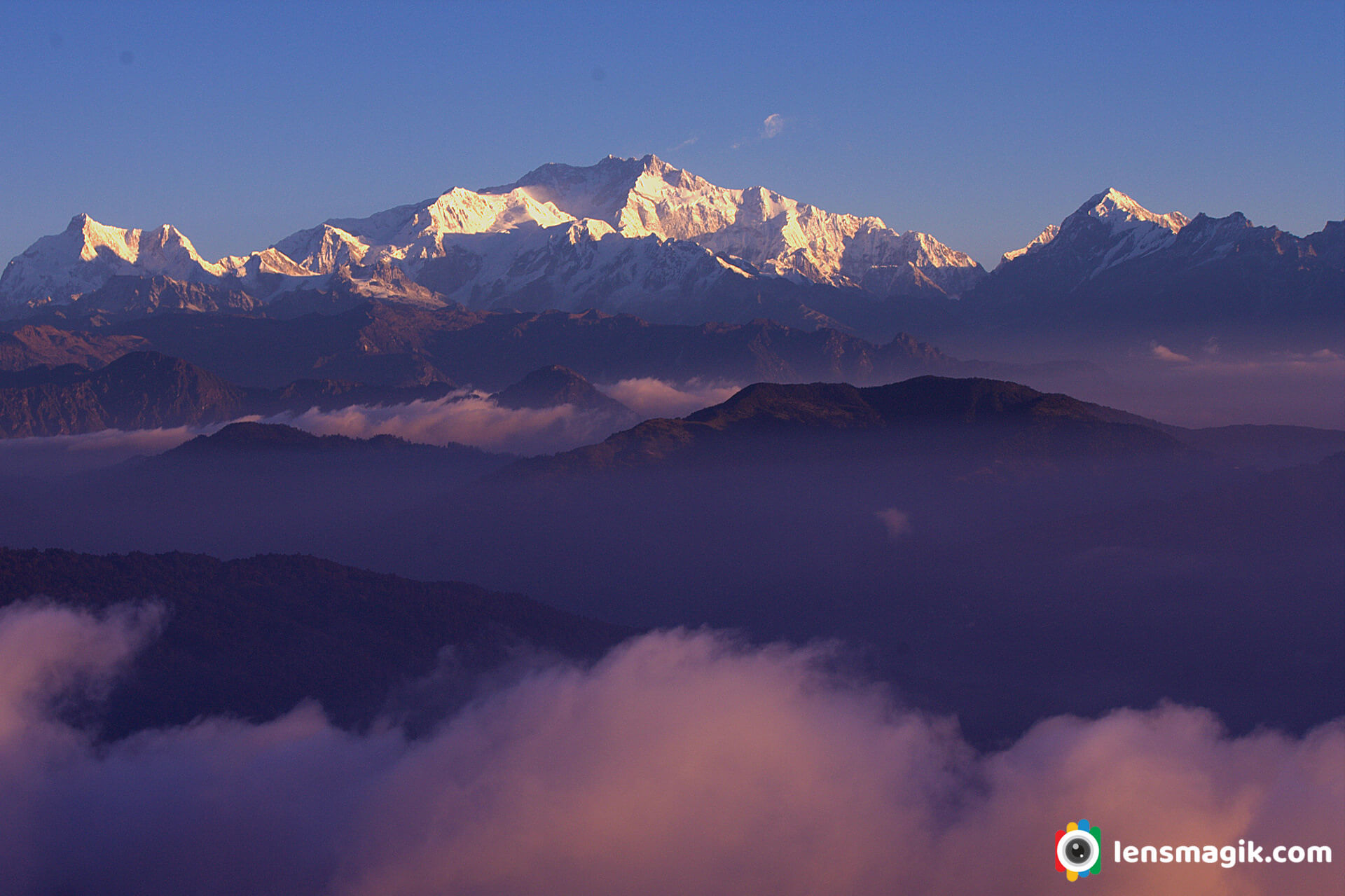
When i was on a tour to Singalila National Park we have a terrific view of Kanchenjunga mountains and also other Himalayan mountains. The best view of Kanchenjunga i saw from Sandakphu located at India-Nepal border. I also saw Mt. Everest from here. Everest is on a long distance but if weather is clear you can see it very clearly.
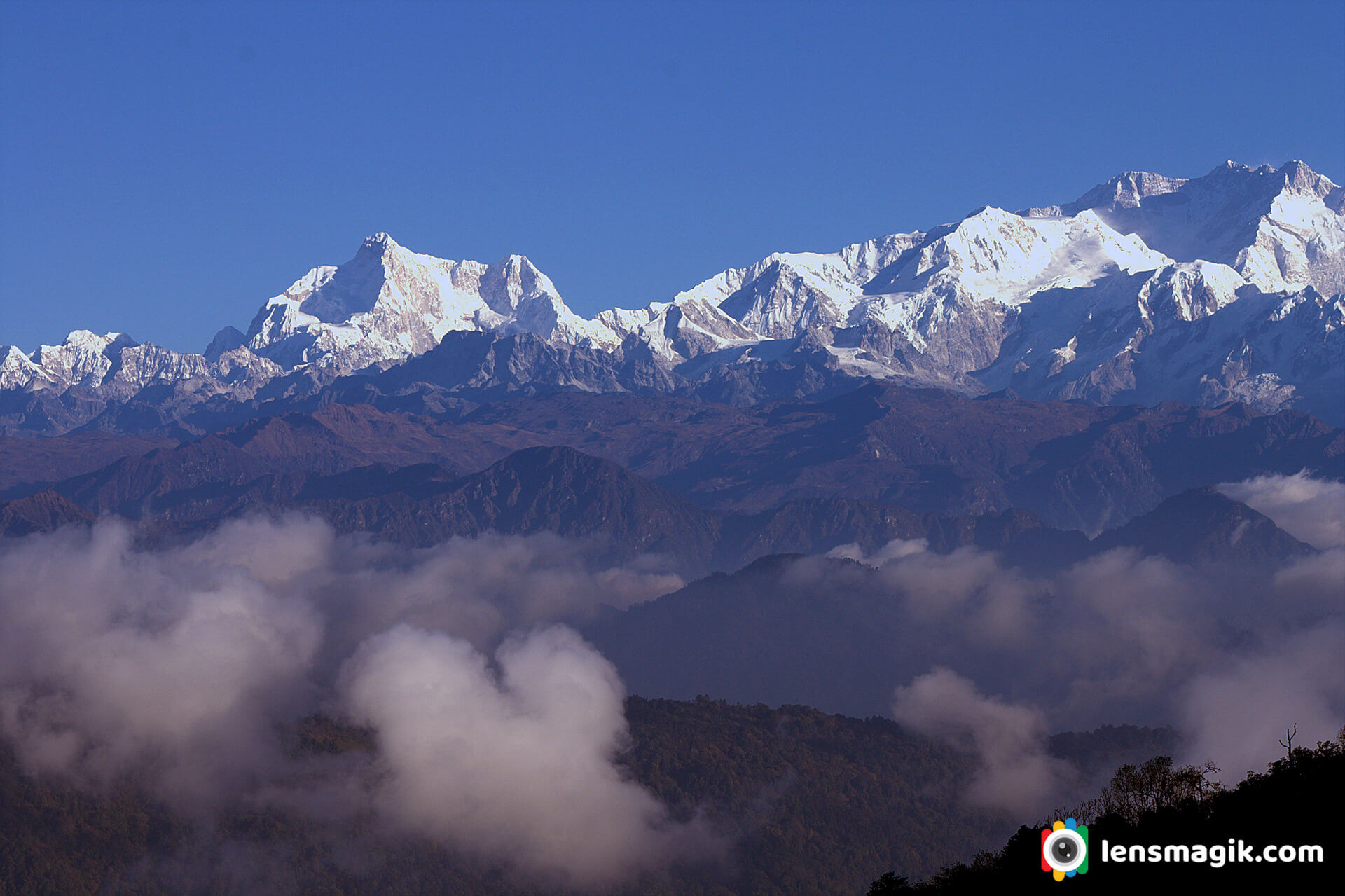
In above picture the mountain shows in left side ( Triangle 3 peaks ) of Mt Kanchenjunga is Kumbhakarna Mountain.
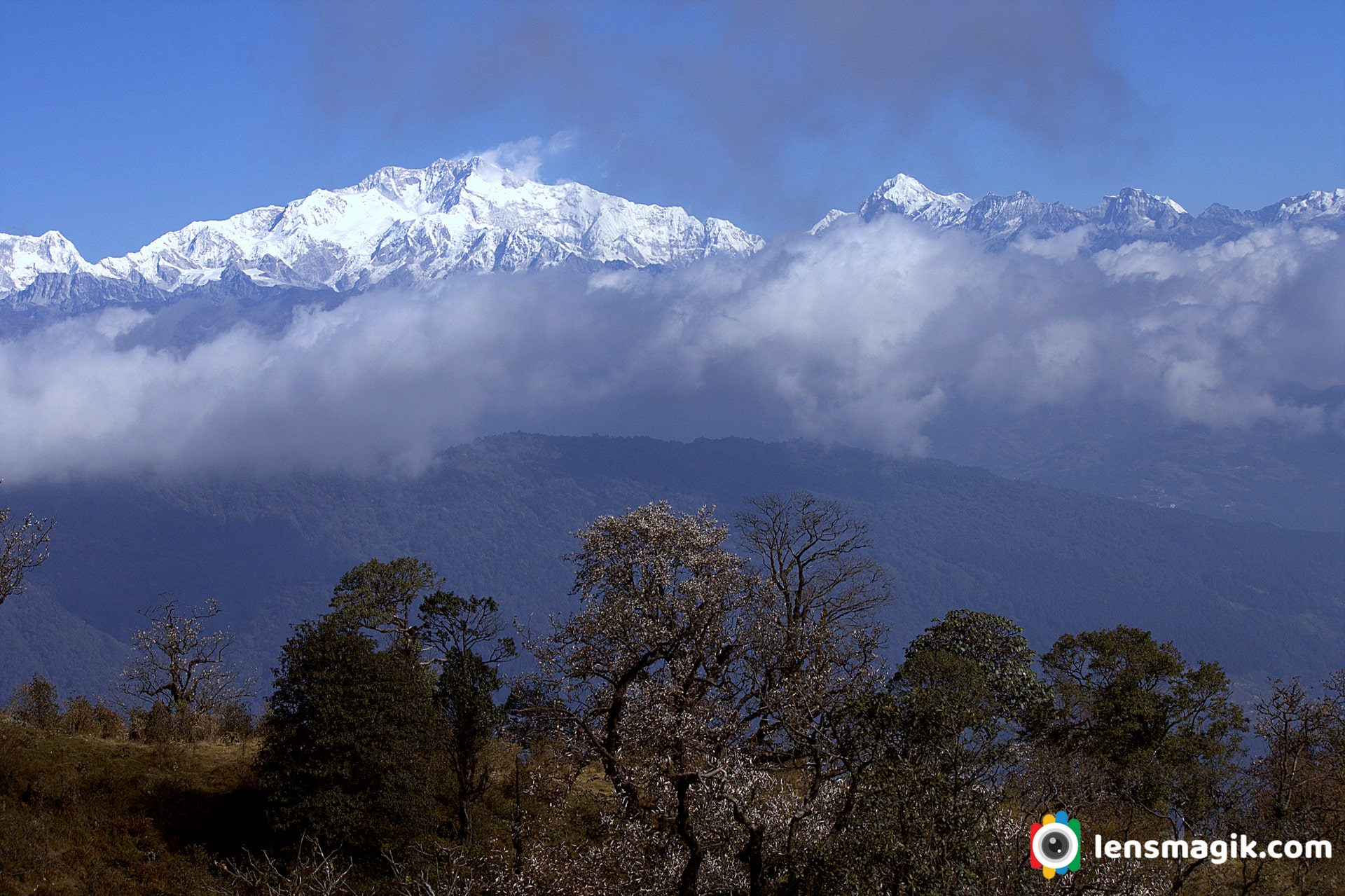
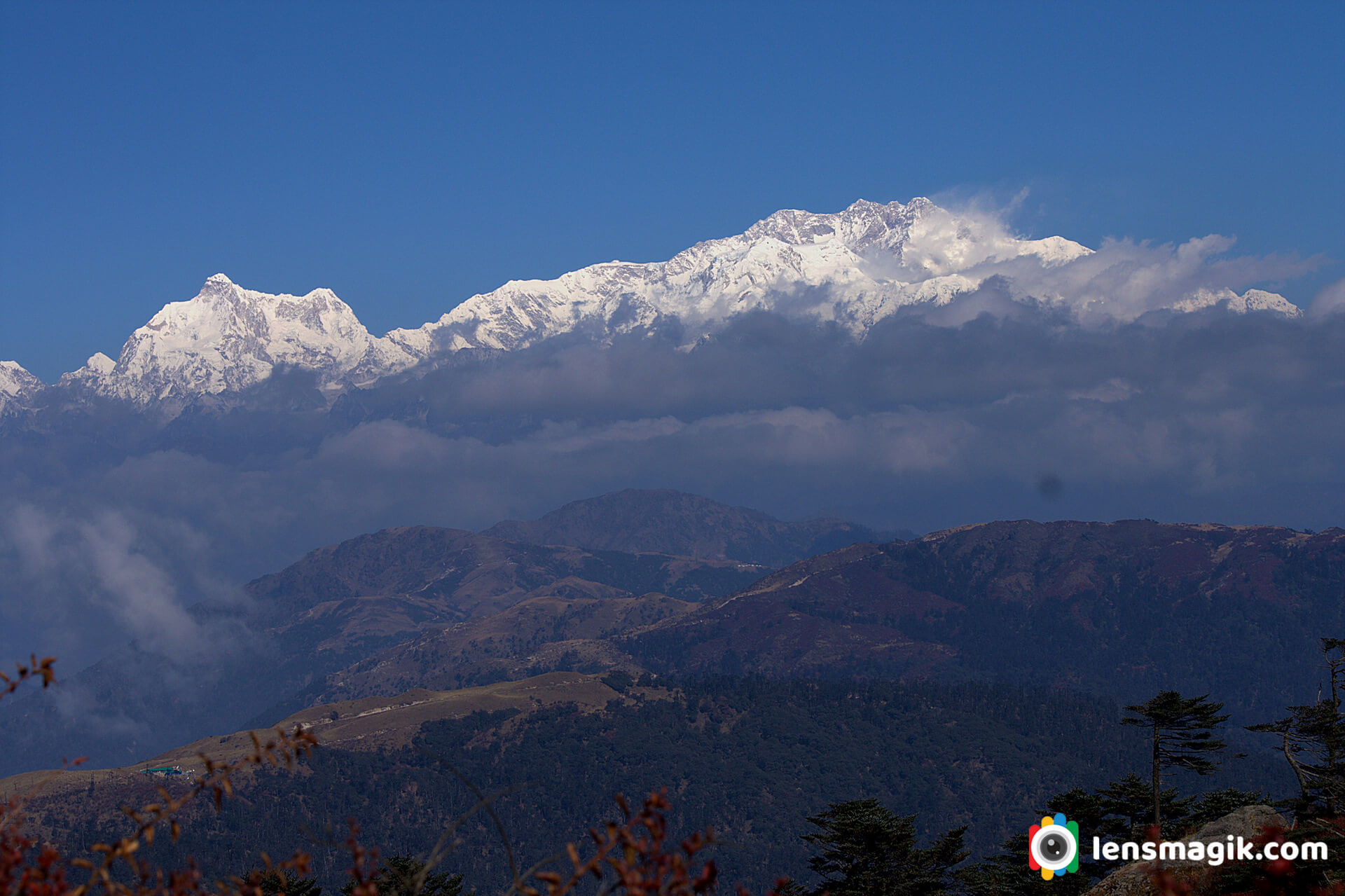
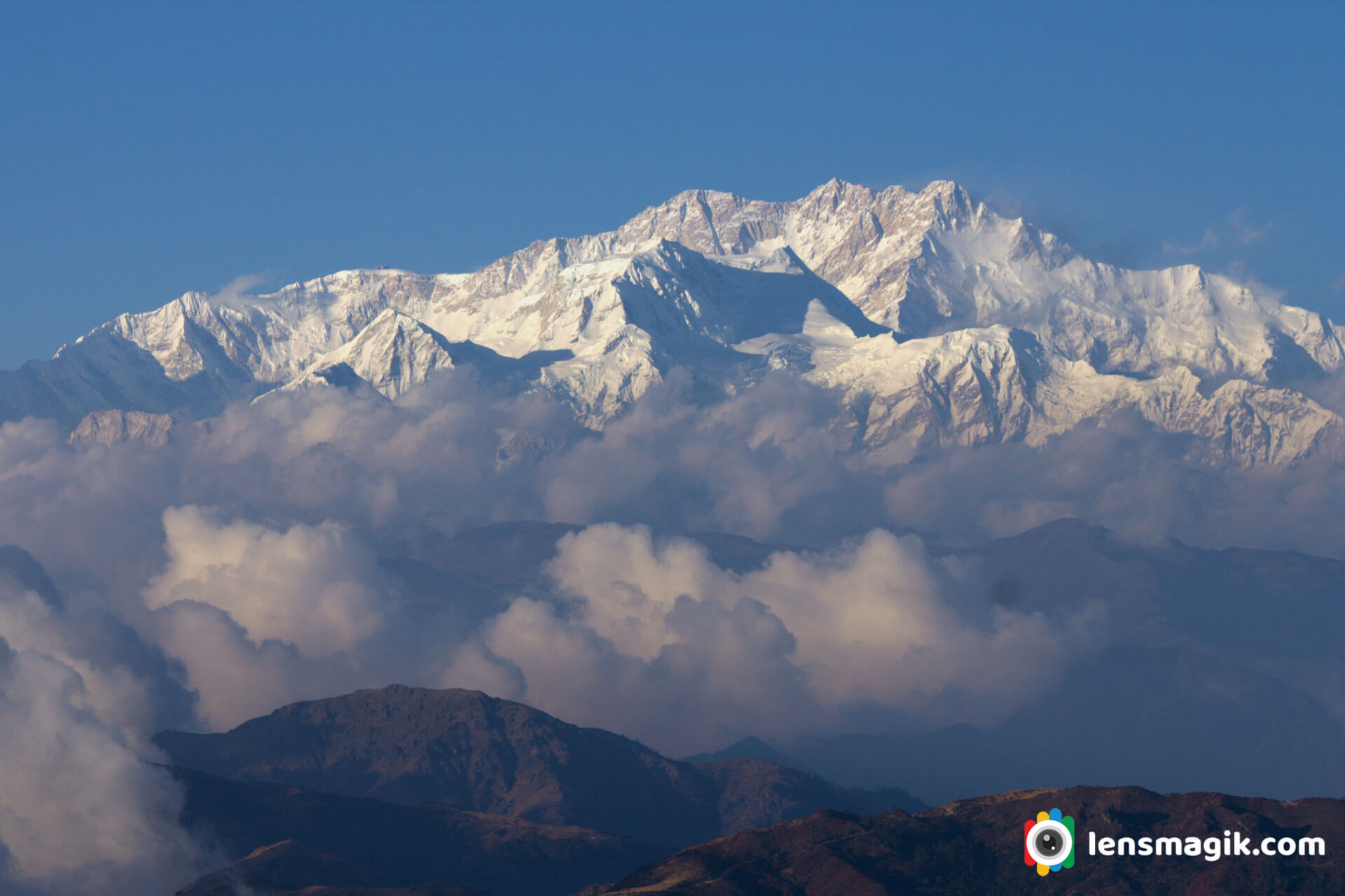
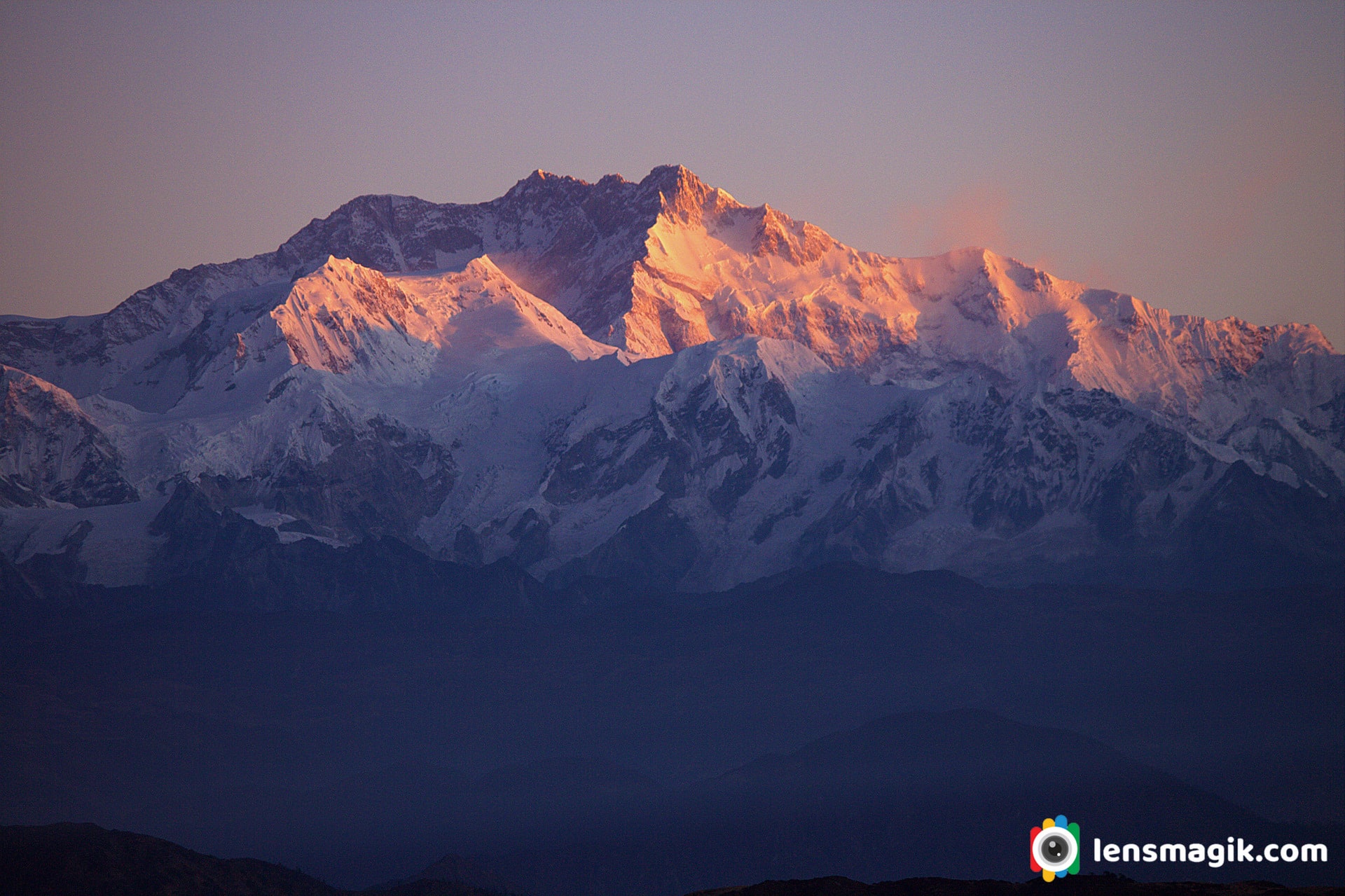
Sandakphu trek is one of the beautiful trek among India and also of Himalayas. During summer lots of trekkers go for these trek and also Phalut trek. At Sandakphu you can stay a night and just see at night the sky is full of stars. I was never seen such stars in my life. A milky way you can see and it was amazing experience of star gazing at Sandakphu. Also after dark a sunrise is beautiful as enough. At 4 or 4:30 am sunrise time and we were ready to see first light of sun rays on Himalayan mountains. The color of rays are red orange color looks beautiful on snow mountain of Kanchenjunga. Thats the beauty of Himalayas.
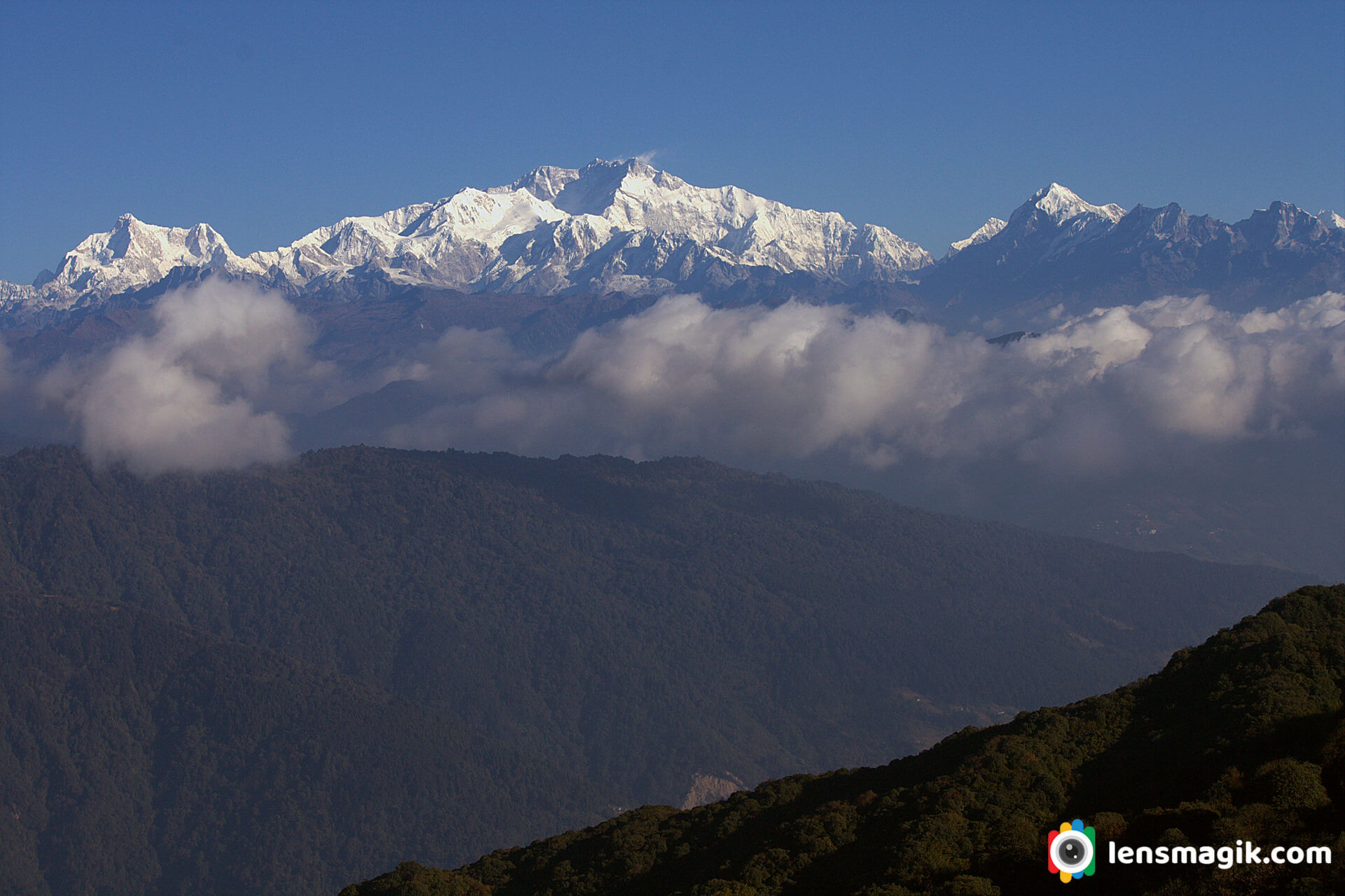
For climbing Mt. Kanchenjunga you can go from Nepal only because Indian Government has been closed Northeastern Sikkim route of Kanchenjunga since 2000. To See Mt. Kanchenjunga from India Sandakphu is the best place. You can go to Sandakphu via Trek or via Range Rover car hire at manebhanjan village. Nearest airport is Bagdogra or you can go to Kolkata and go for overnight train from Kolkata.
Gear used : Canon 1000 D body, Canon 18-55 mm lens, Canon 55-250 mm lens.